The Australian TechRadar team was at Computex 2025 and here's what impressed us most
Lindsay Handmer investigates the latest and greatest at the world’s biggest PC show
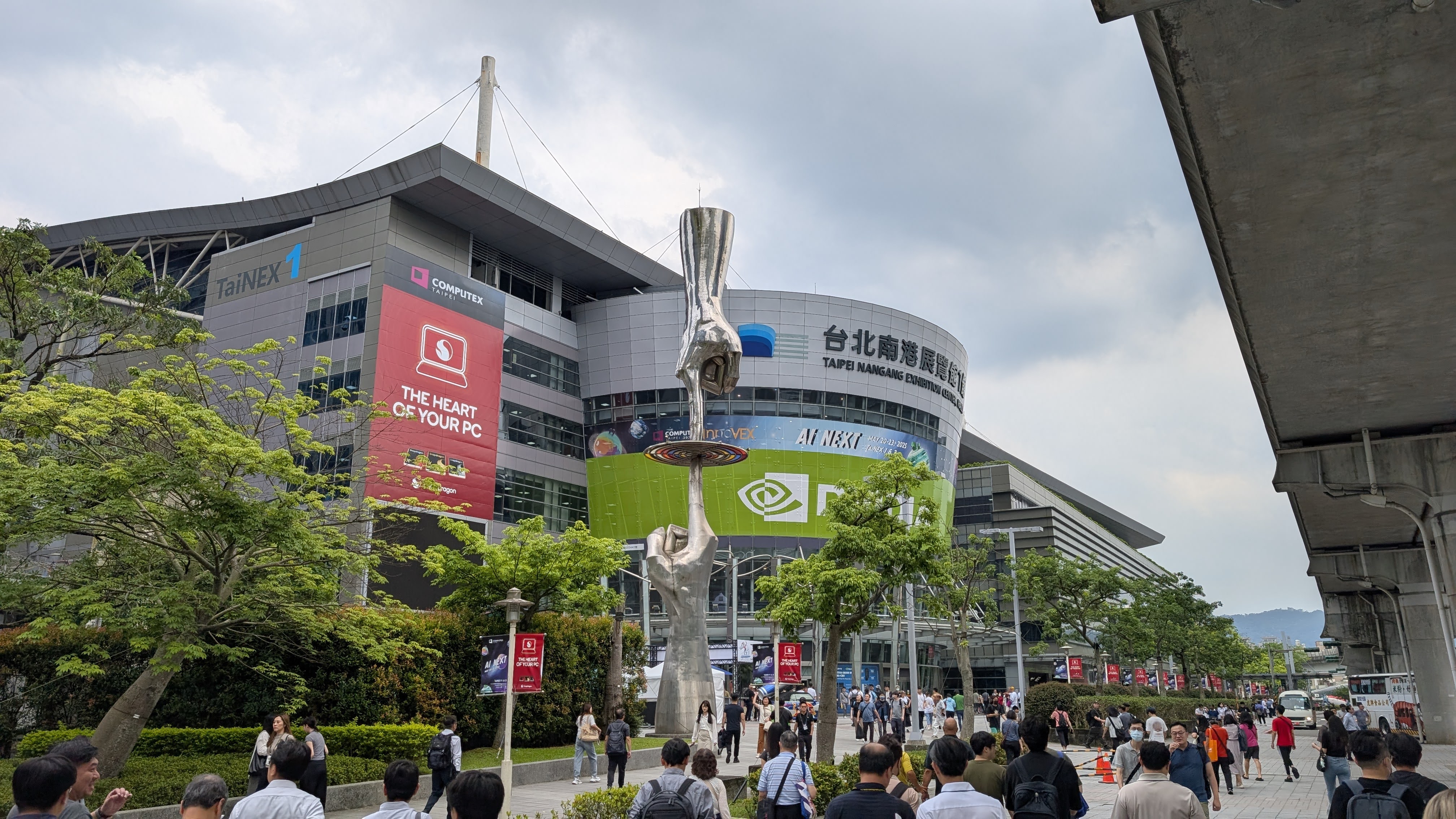
After a big return in 2024, Computex came back even harder in 2025, with more visitors and even more energy. The Nangang halls were packed, and many brands spilled out into nearby hotels and even restaurants just to find space to show off their latest gear. The show even got a visit from Taiwan President Lai Ching-te. But to be fair, the crowds and security were even bigger when Nvidia’s Jensen Huang swept through, leaving his signature on products like a rockstar.
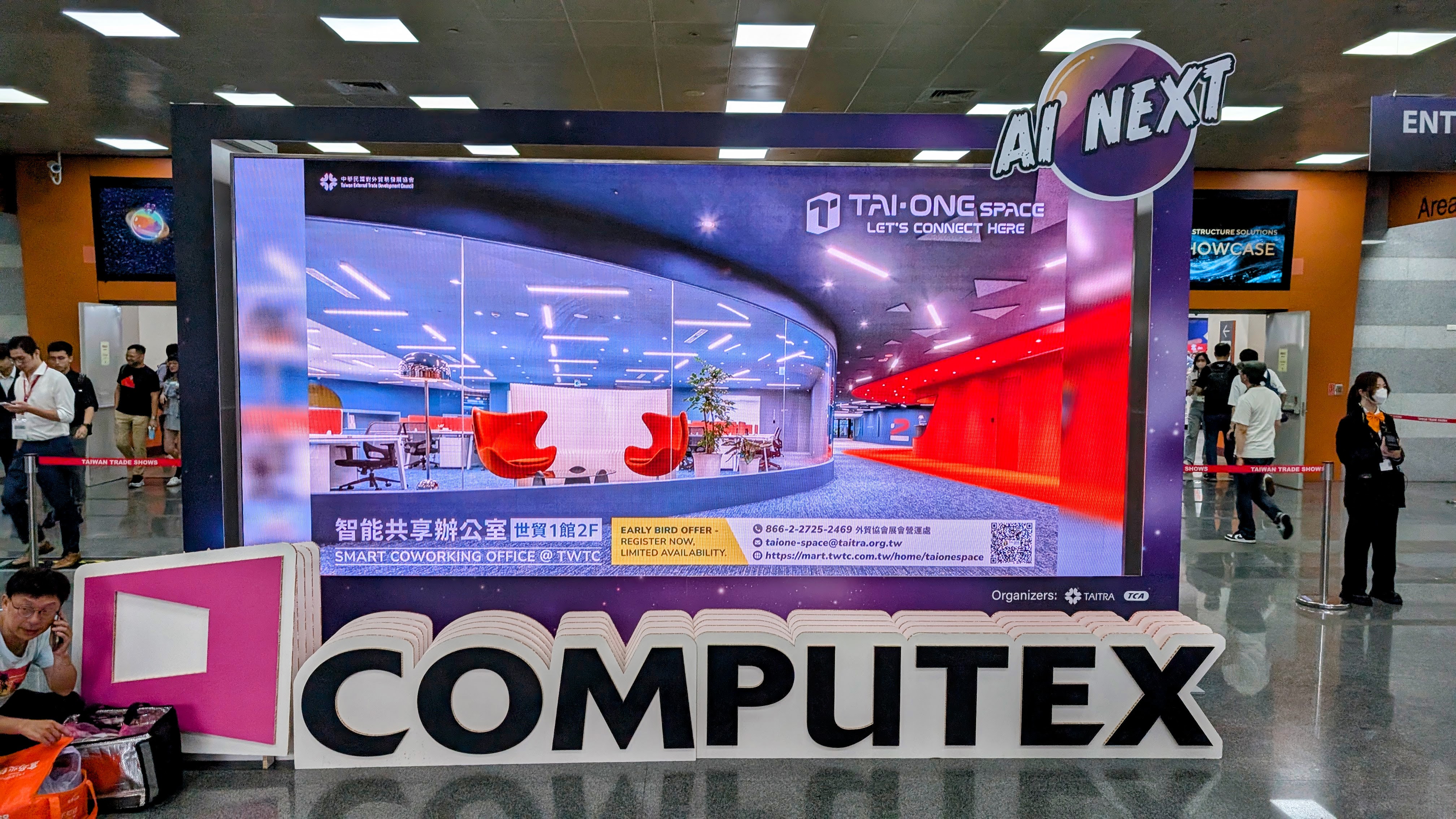
If there’s one non-AI trend that defined Computex 2025, it’s LCDs crammed into everything. Mostly coolers, but also PSUs, GPUs, cases, and even RAM. Laptops also stood out, with a wave of clean designs and powerful, ultra-lightweight models dipping under the 1kg mark.
Of course, AI was everywhere. It was part of almost every showcase and sometimes awkwardly shoehorned into things that had little to do with actual LLM-style transformer models. Still, we saw some genuinely useful advancements too, with Nvidia devoting most of their packed keynote to the idea of the AI factory future.
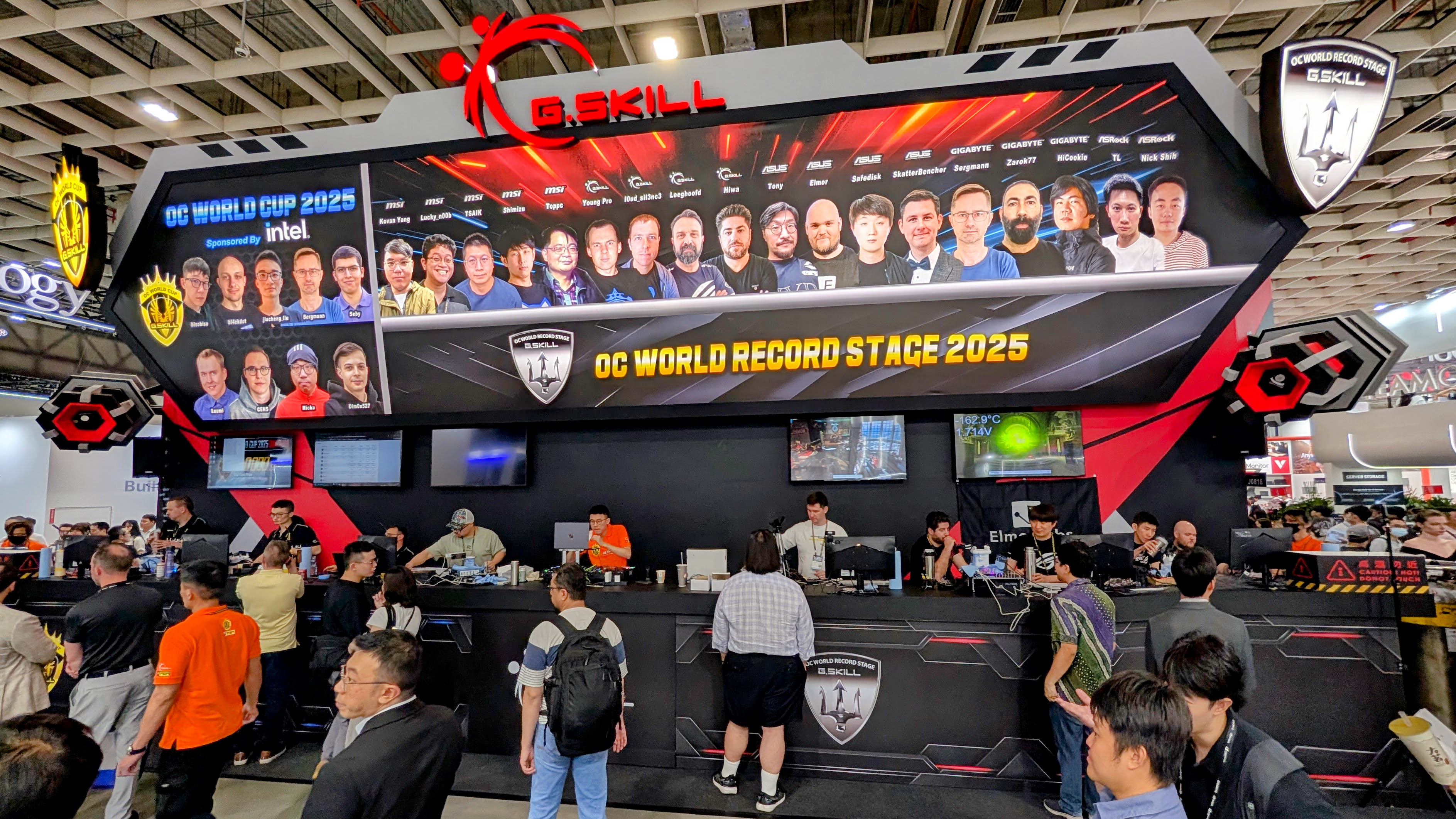


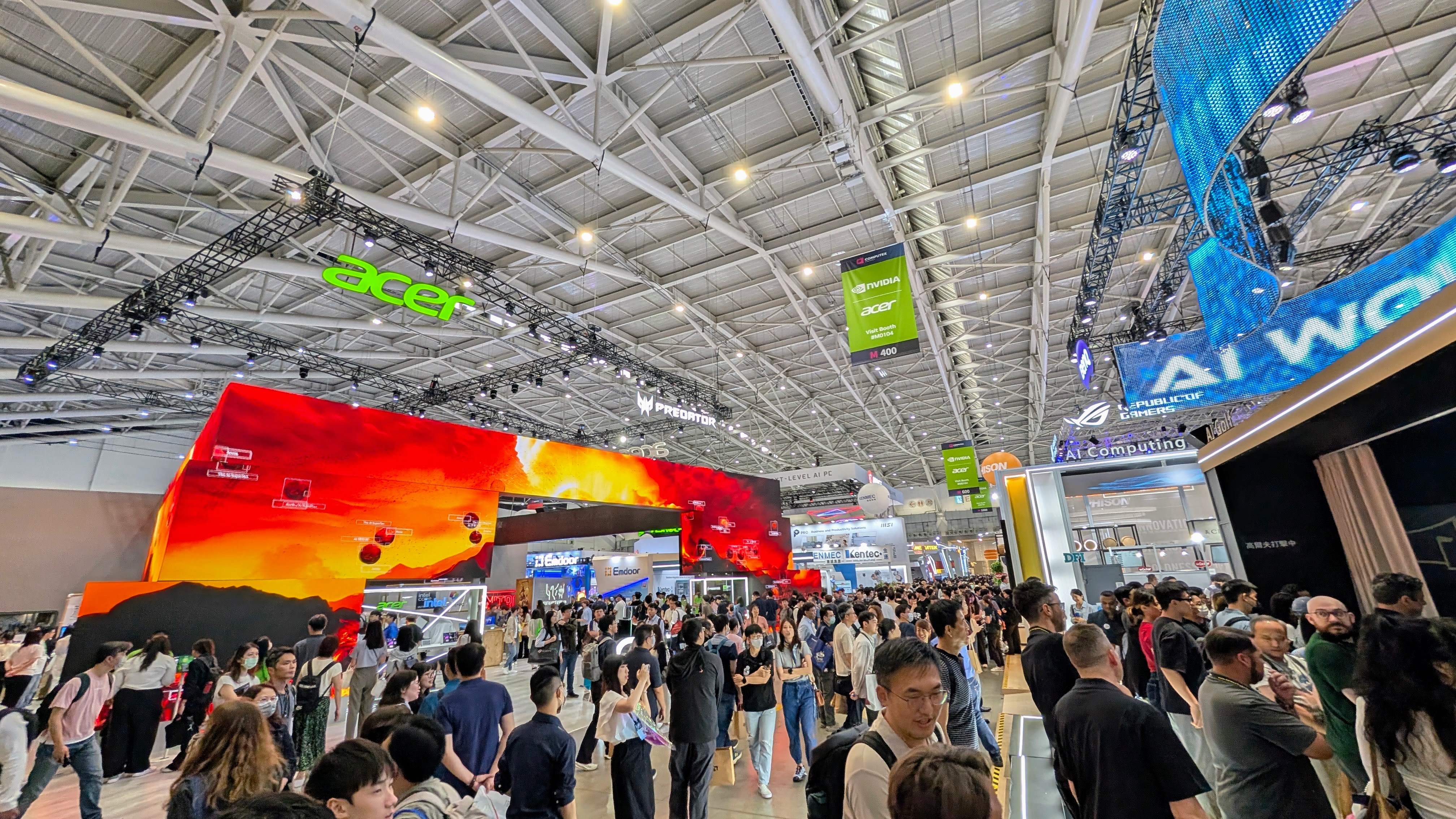

While RGB was still going strong, we also noticed a shift toward cleaner, more understated aesthetics, with more white LEDs and gear that skipped lighting entirely. Some big brands also branched out – Acer had a range of electric scooters and bikes on display.
And Computex got back to its grittier roots a bit, with G.Skill hosting the grand finale of its 2025 OC World Cup right on the show floor.
Read on for our full report on the latest from our favourite brands.
We already have separate deeper dives into the latest from MSI, Corsair and Synology, so follow the links below to find out more.
Sign up for breaking news, reviews, opinion, top tech deals, and more.
MSI (PC Gamer): I went hands-on with MSI's upcoming gaming kit at Computex 2025 – here's what was most exciting
Corsair: Sleek cases, smarter cooling and serious DIY spirit: Corsair's Computex 2025 highlights
Synology: At Computex 2025, Synology kept it practical and powerful – with just a hint of AI
Intel skips the fanfare but brings the future
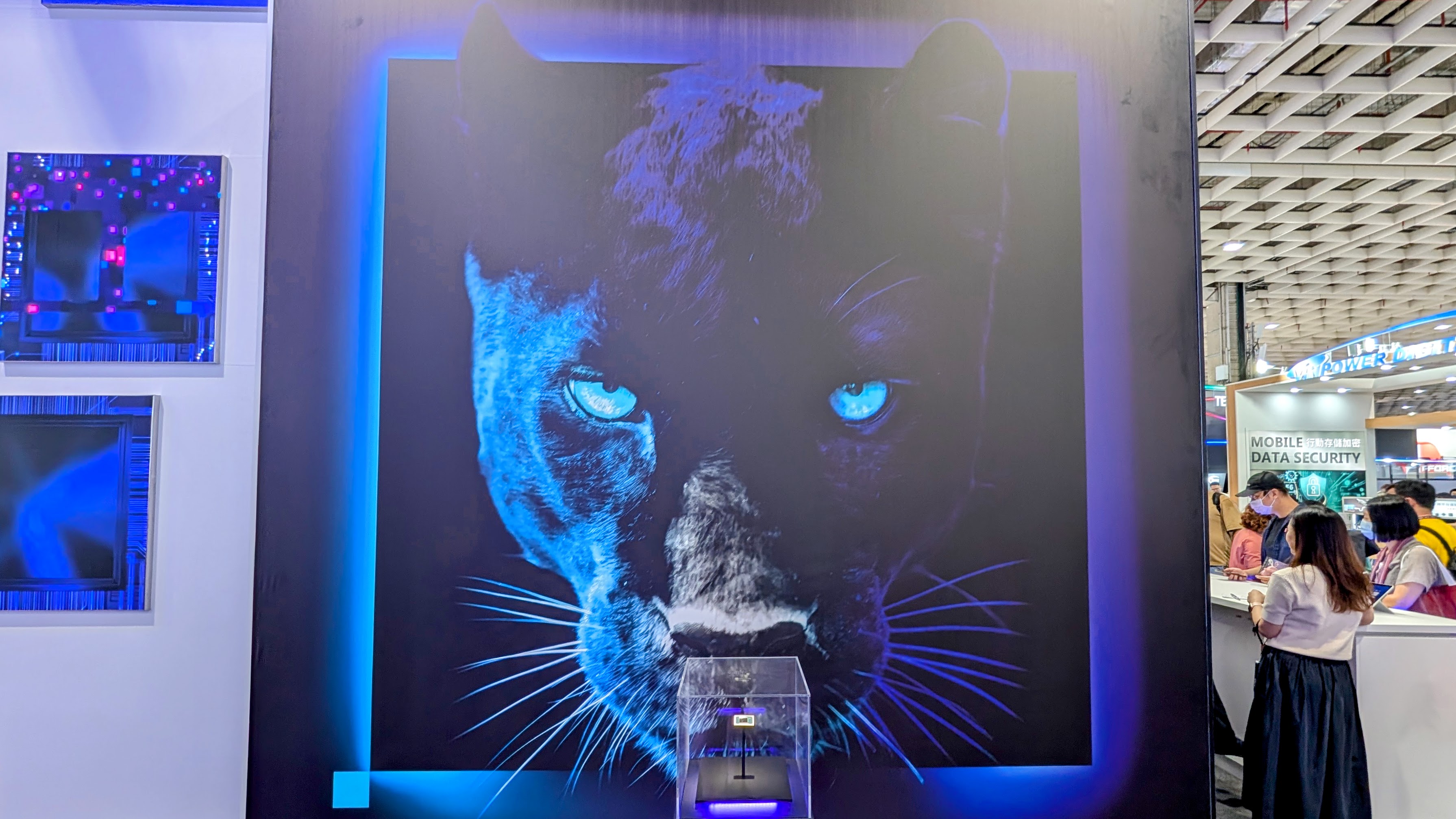
Despite it being Intel’s 40th anniversary at Computex, things were unusually quiet from the chipmaker at Computex 2025. No keynote. No press conference. But tucked into a few low-key demos were some meaningful updates on what’s coming next for CPUs, GPUs, and AI acceleration.
The giant picture of a Panther in the Intel booth was a dead giveaway, and Intel announced that the next-gen Panther Lake CPU family will launch in the second half of 2025. These chips are named the Core Ultra 300 series and are the first to be built on Intel’s advanced 18A process. They pair new Cougar Cove performance cores with Darkmont efficiency cores, plus integrated Xe3 graphics.
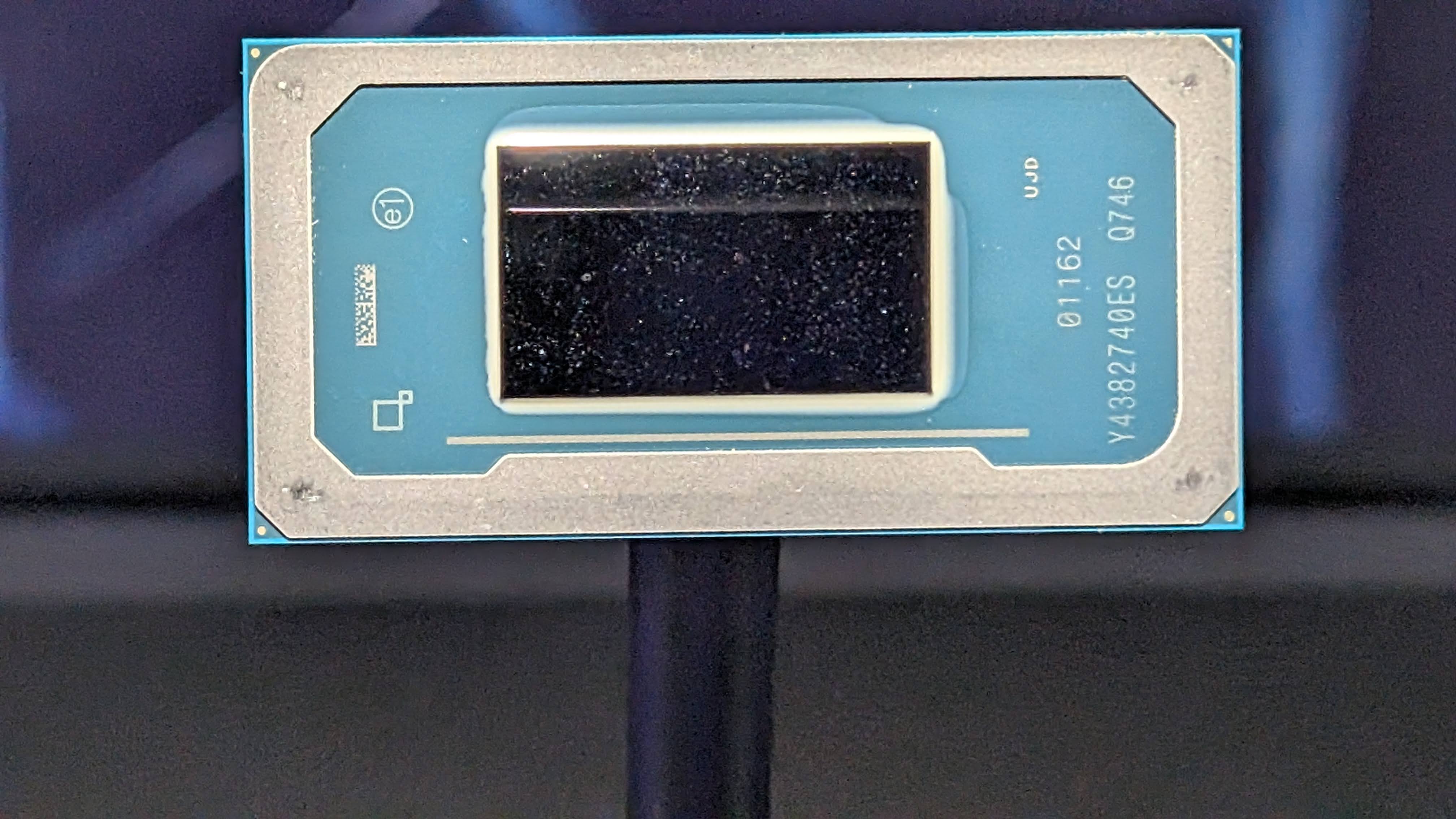
Intel ran a few demos to show off Panther Lake’s AI chops. One showed AI-assisted video editing in DaVinci Resolve, and with a 50 TOPs NPU and 120 TOPS from the iGPU, can reportedly give about 50% better performance in these sorts of workloads compared to the current Lunar Lake CPUs. Which, by all accounts, is impressive, and we are excited by Intel's CPUs again – for laptops at least anyway.
On the GPU side, Intel expanded its professional Arc lineup with the Arc Pro B60 and B50. Built on the Xe2 architecture, both cards are made for AI inference and workstation tasks. The B60 comes with 24GB of memory while the B50 offers 16GB. Both include Intel’s Xe Matrix Extensions (XMX) for AI workloads and advanced ray tracing units for rendering and simulation.
AMD’s quiet confidence shows in GPUs, CPUs, and AI smarts
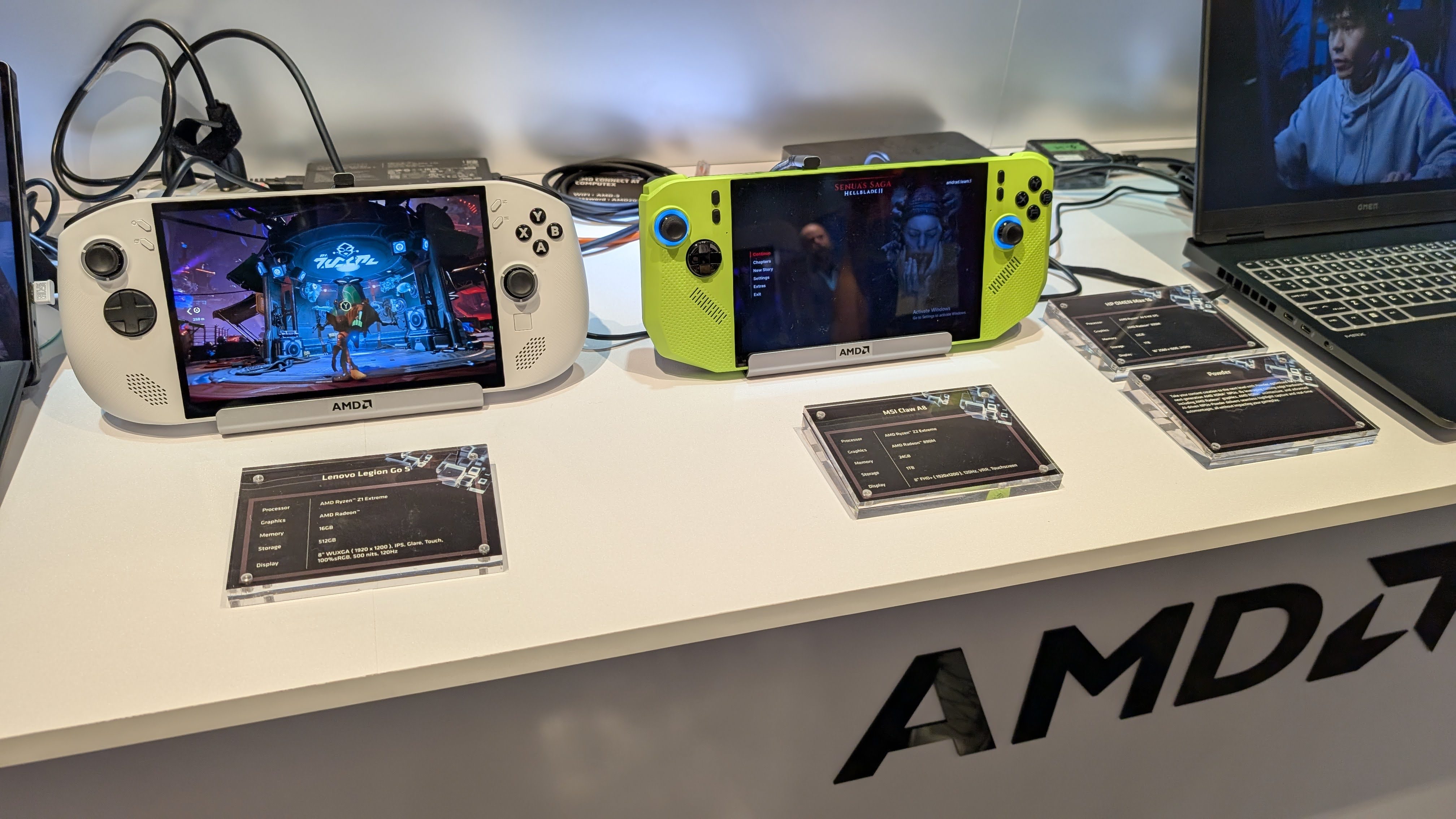
AMD didn’t do anything too flashy this year, but showed off new gear for gaming, AI, and high-end compute.
First up was the Radeon RX 9060 XT, a mid-range RDNA 4 graphics card aimed at 1440p gamers. With 32 compute units and up to 16GB of GDDR6 memory, it looks set to give solid mid-range performance at higher resolutions. FSR 4 is built in, now with extra machine learning smarts, and early demos seem to show decent frame rates. We don’t yet have Australian pricing, but it starts at US$299 and will hopefully give another bang-for-buck option for gamers by the end of June.
AMD didn't forget about AI, and introduced the Radeon AI PRO R9700, a workstation GPU with 128 AI accelerators, 32GB of GDDR6 memory, and 1,531 TOPS of performance. It’s built to handle local AI workloads, from development to deployment, without relying on cloud infrastructure.
On the CPU side, AMD revealed the Ryzen Threadripper 9000 Series, codenamed "Shimada Peak." Built on Zen 5 and TSMC’s 4 nm process, the flagship 9995WX features 96 cores, 192 threads, and a boost clock up to 5.4 GHz. With support for 128 PCIe 5.0 lanes and 8-channel DDR5-6400 ECC memory, it’s aimed at pros in VFX, simulation, and AI. The chips launch globally in July and will slot into the existing sTR5 socket.
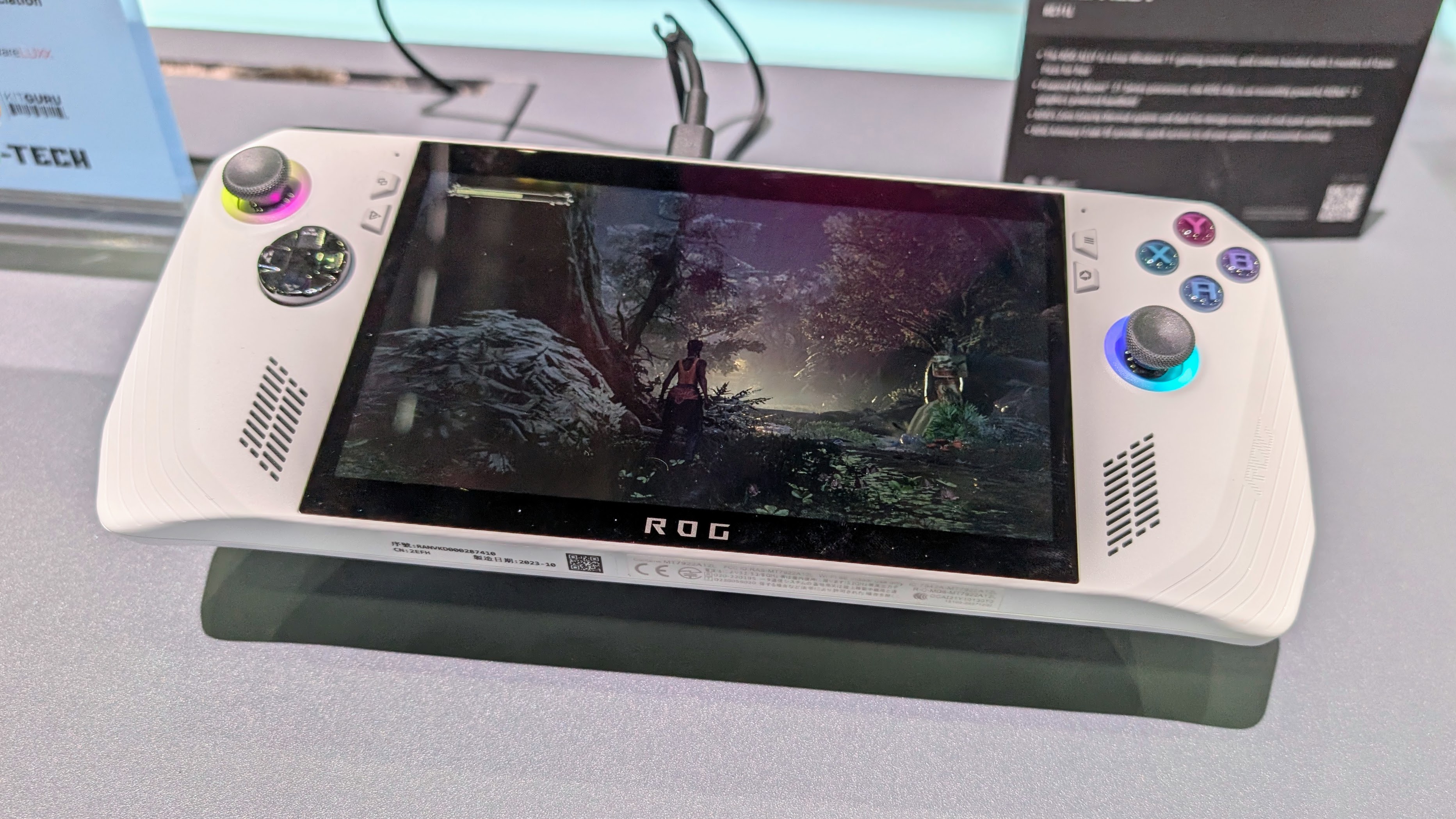
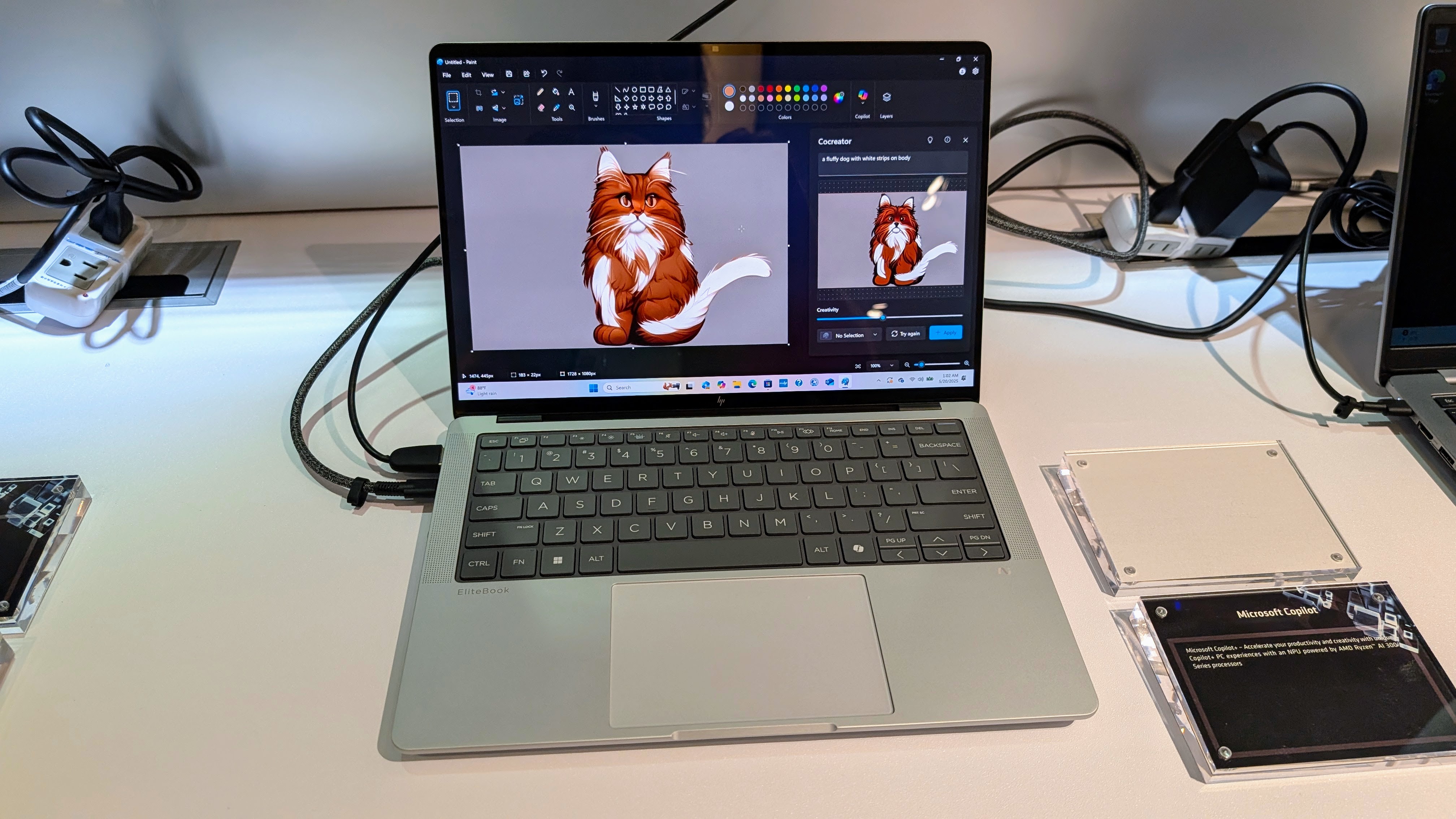
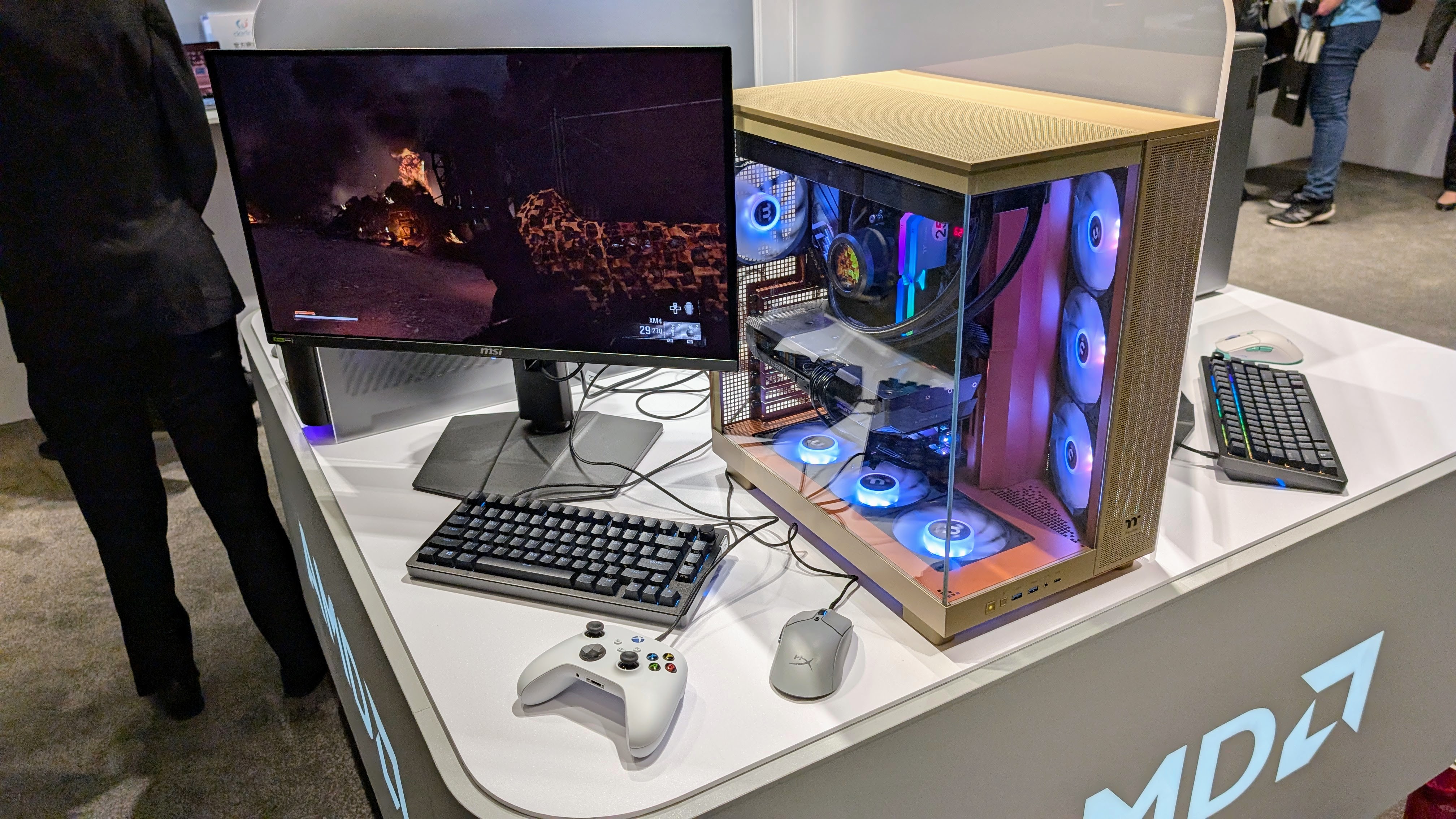

We also saw new Ryzen AI PRO 300 and AI Max+ CPUs in laptops like Asus’s ExpertBook P3, not to mention the AMD Ryzen Z2 Extreme chip in handheld gaming devices like the MSI Claw.
Nvidia’s AI empire expands, with just enough GPU love to keep gamers calm
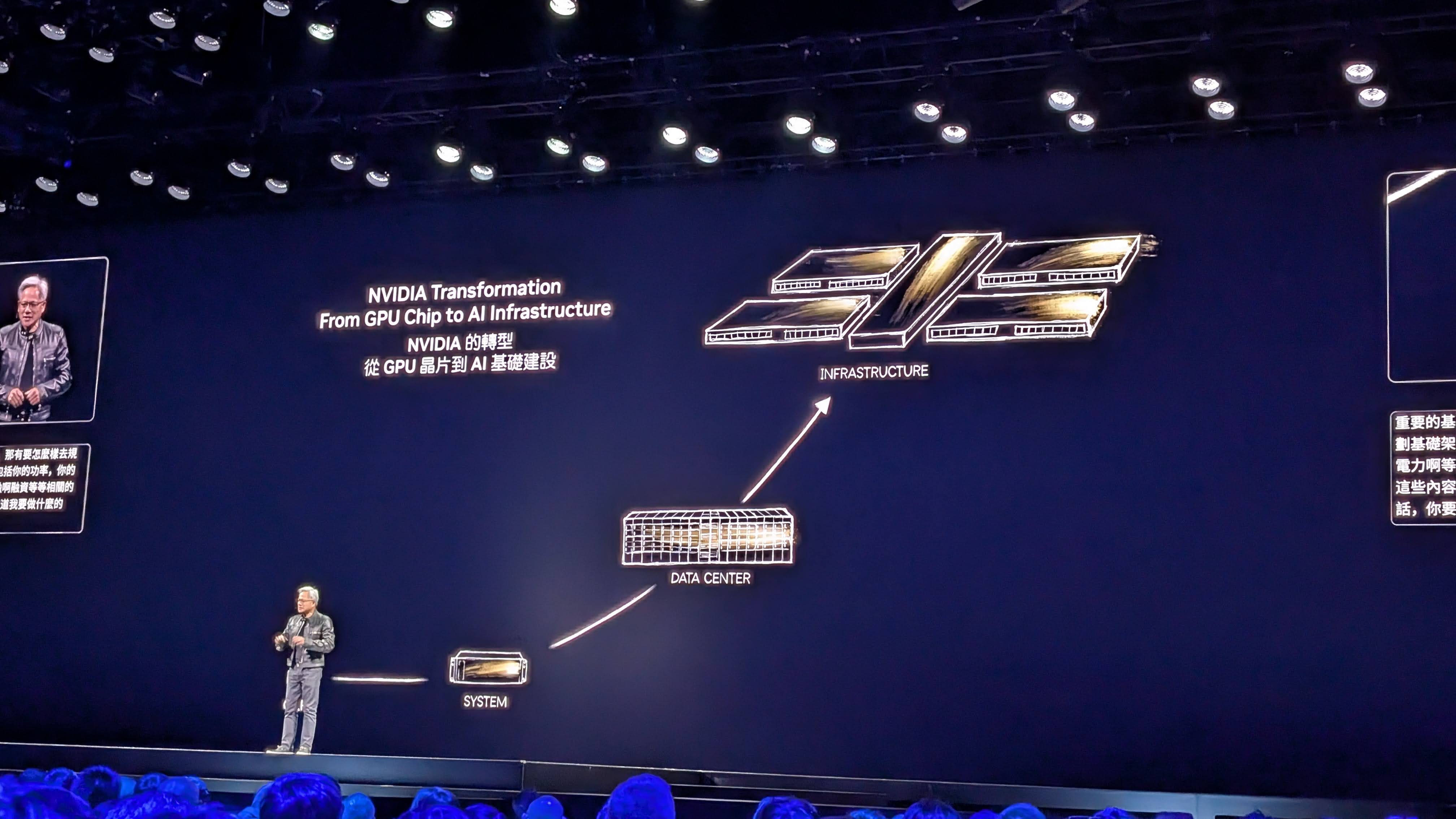
Nvidia was, unsurprisingly, all-in on AI at Computex 2025. From data centres to desktop systems and even robot gyms, Team Green made sure to remind everyone that it’s not just about gaming anymore. That said, Jensen Huang did toss in a cheeky “we haven’t forgotten about GeForce” during his keynote, as a nod to the company's history.
The big gaming reveal was the GeForce RTX 5060, a new mid-range GPU built on the Blackwell architecture. It features 8GB of ultra-fast GDDR7 memory and promises about 18 percent better performance over the RTX 4060. It is designed for 1080p and 1440p gaming, with the usual suite of next-gen ray tracing and AI-enhanced rendering.
Of course, DLSS 4.0 was front and centre. Nvidia touted major gains in frame generation and latency reduction, now supported in over 125 titles. But not everyone’s thrilled. DLSS 4 is exclusive to RTX 50-series cards, and unlike earlier versions, it does not run at all on older GPUs. It is a smart move for performance, but it does leave plenty of RTX 40-series owners feeling a bit sidelined. Strategic? Definitely. Friendly? Not exactly.

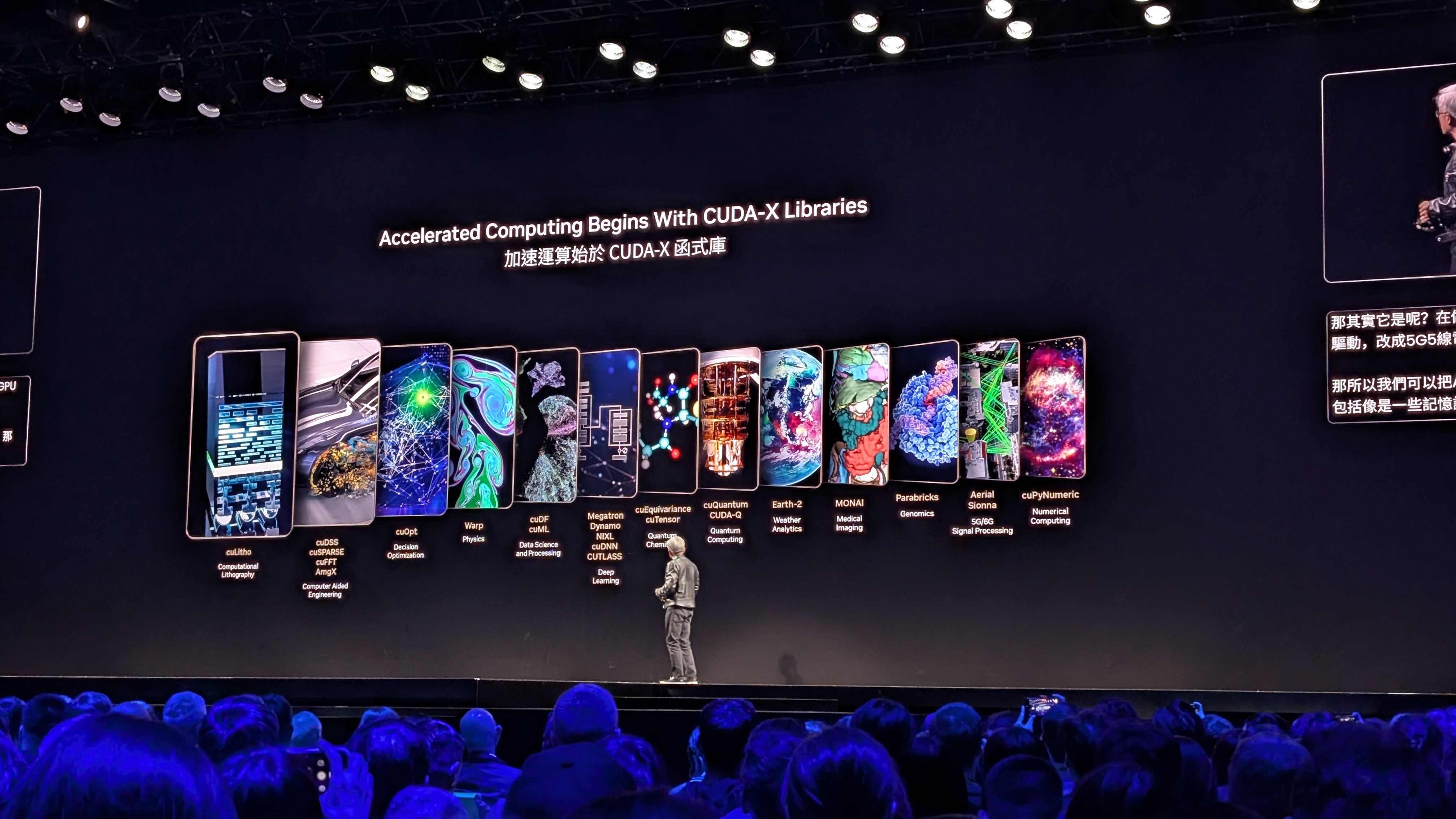

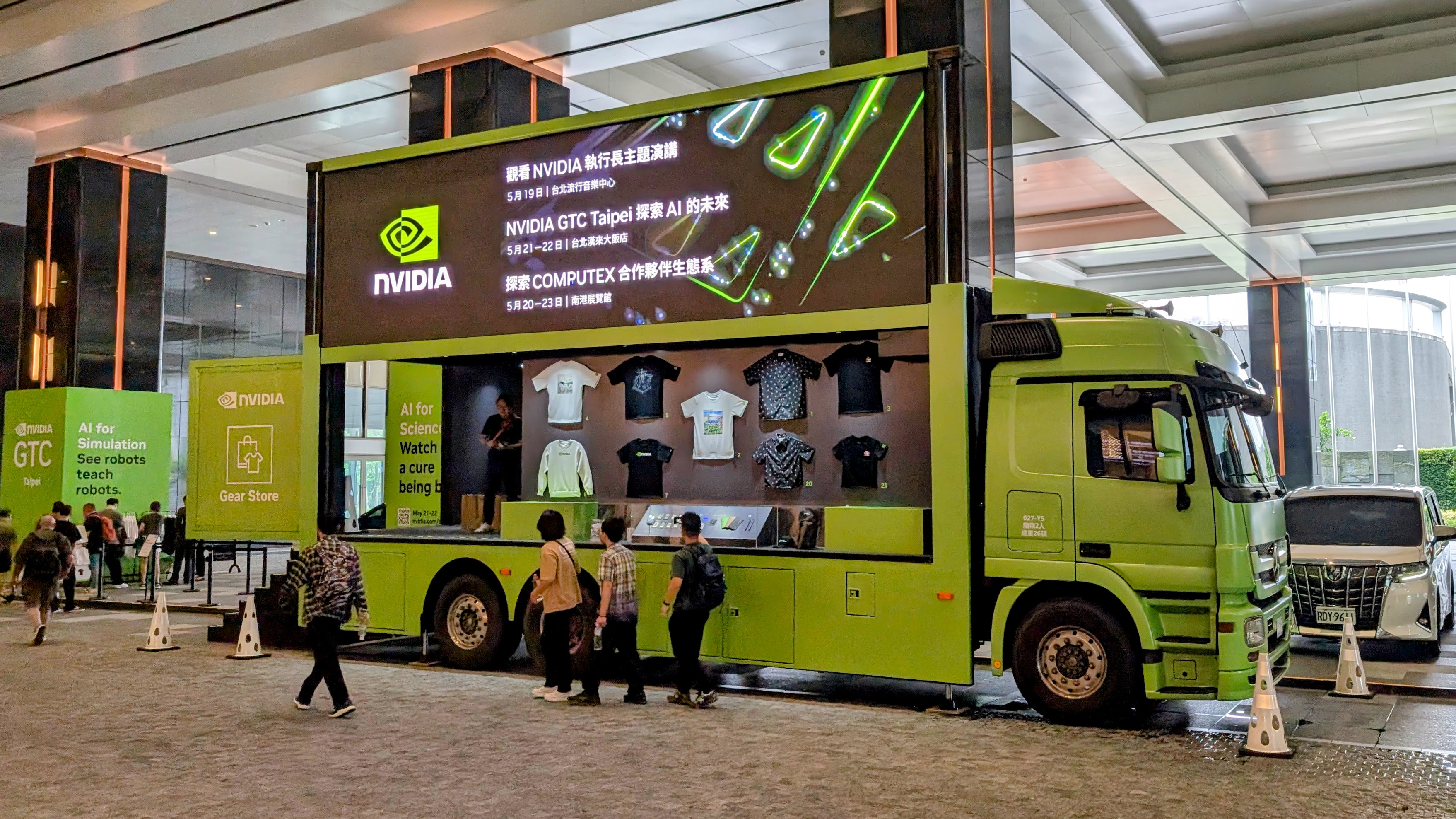
Outside of gaming, Nvidia went big on AI infrastructure. The company introduced its “AI factories,” next-generation data centres powered by Blackwell GPUs and NVLink Fusion, designed to train and deploy massive AI models. On the robotics front, the Isaac platform received an upgrade with GR00T N1.5 and a new simulator, GR00T-Dreams, built for training humanoid robots in virtual environments.
For more desktop level AI, Nvidia announced the DGX Spark – a compact AI supercomputer with 1,000 TOPS of performance that gives researchers and developers serious local AI horsepower without the need for a server room. Whether you like AI or not, the DGX Spark is a seriously cool bit of kit.
Sapphire serves up cable-free GPUs over brunch

Sapphire took us away from the showroom floor this year, and set up in a nearby restaurant. What better way to discuss custom GPUs, AI-focused mini PCs, and the new PhantomLink power system, than over a plate (or two) of pancakes.
Our favourite new bit of Sapphire tech by far is PhantomLink – a cable-free GPU power solution that pulls power directly from a special motherboard slot instead of using the traditional power connectors and cables. It delivers up to 600W and works with compatible boards like the Sapphire Nitro+ X870EA Wi-Fi, and is still interoperable with traditional 12V-2x6 plugs. And we have to say, we really do love the look of monster GPUs without the cables hanging out the top.

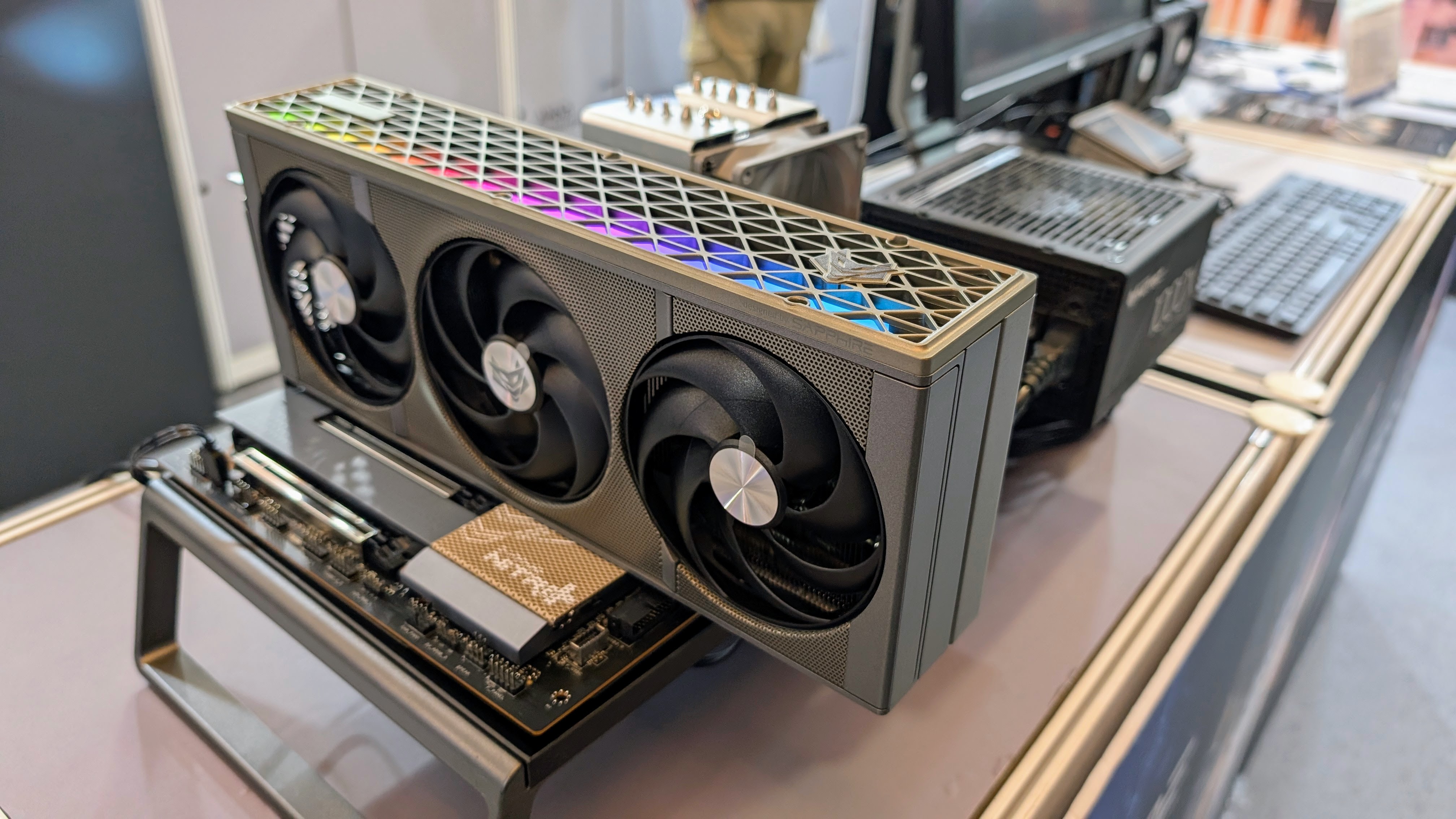
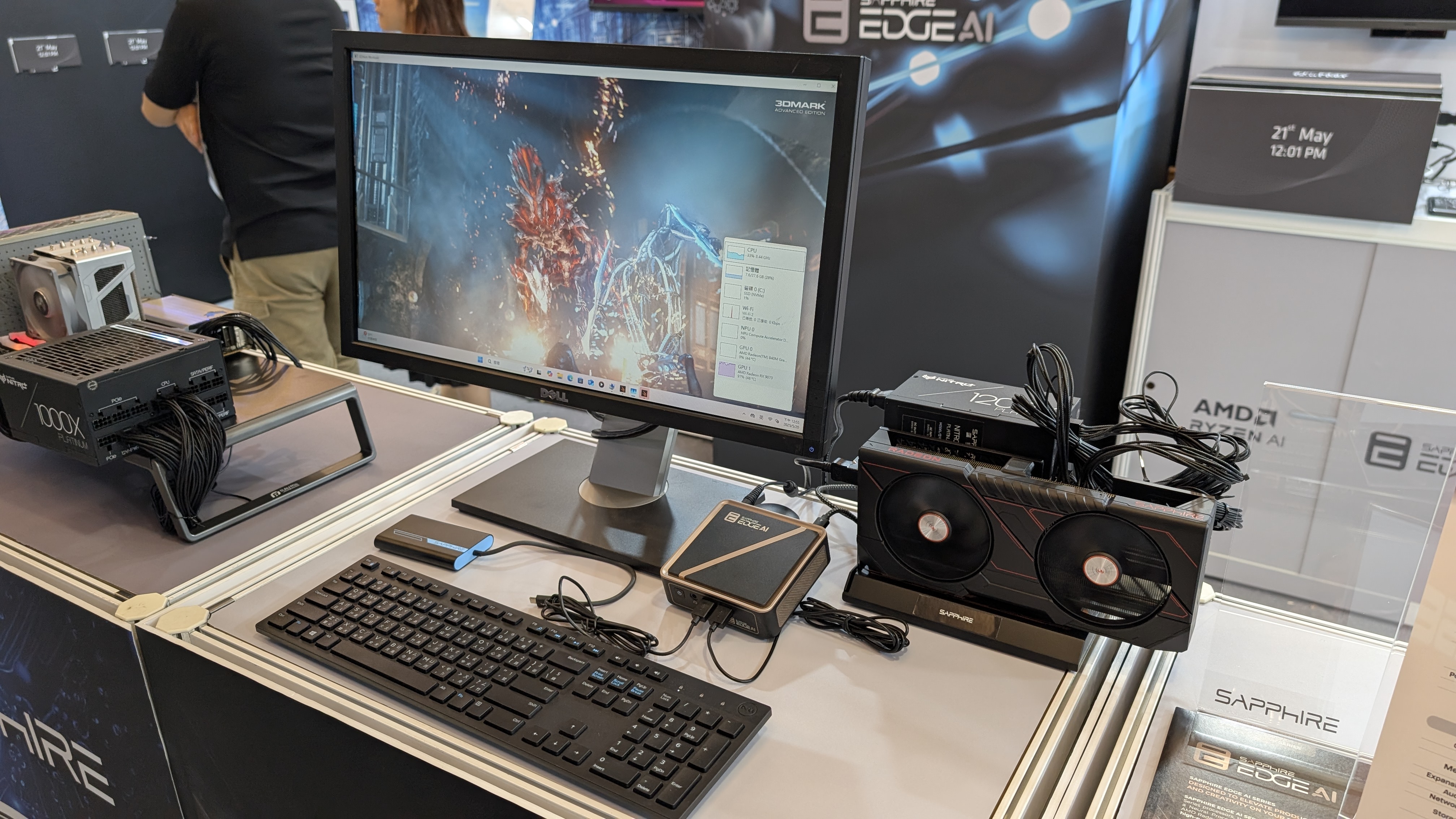
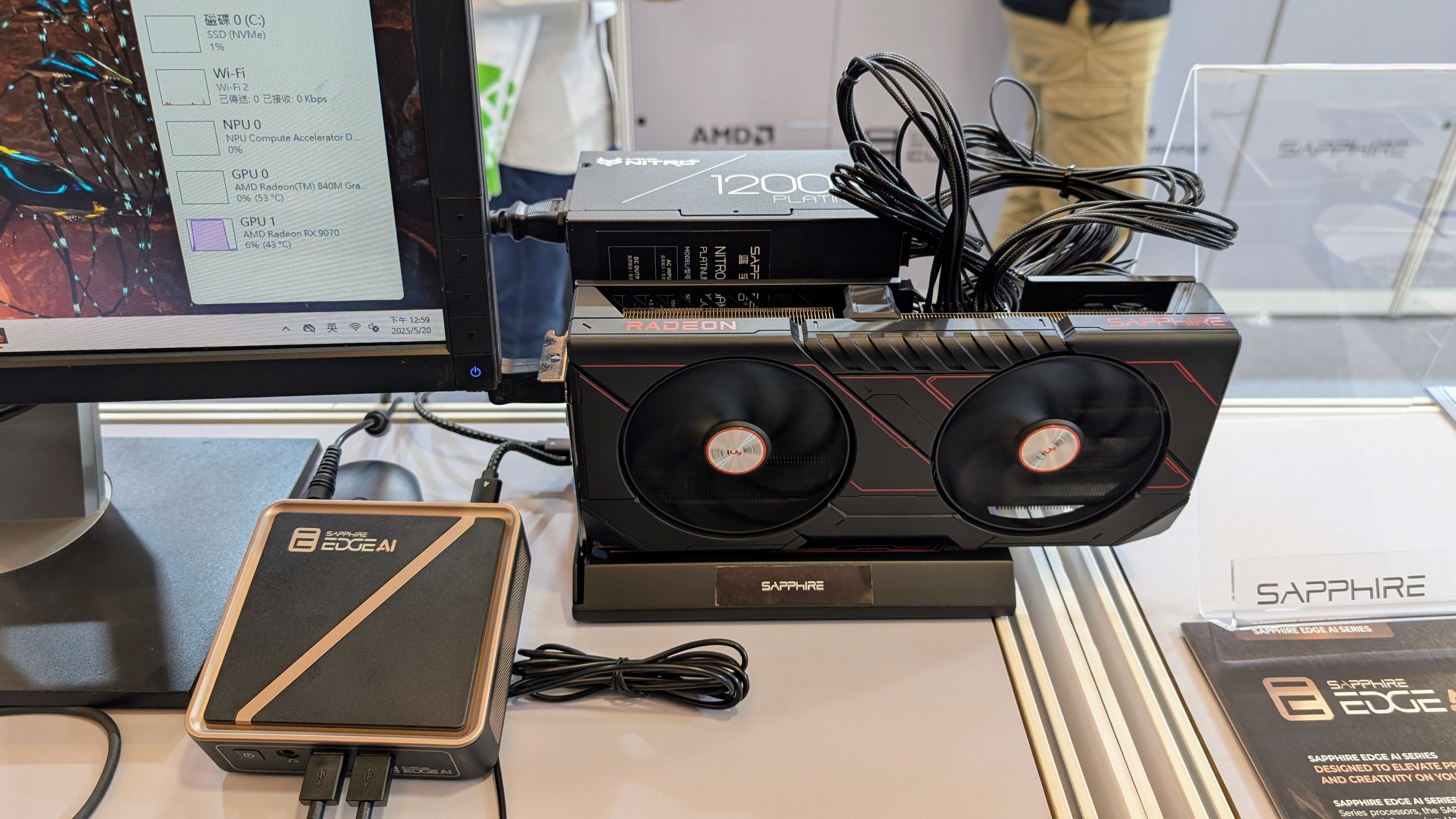
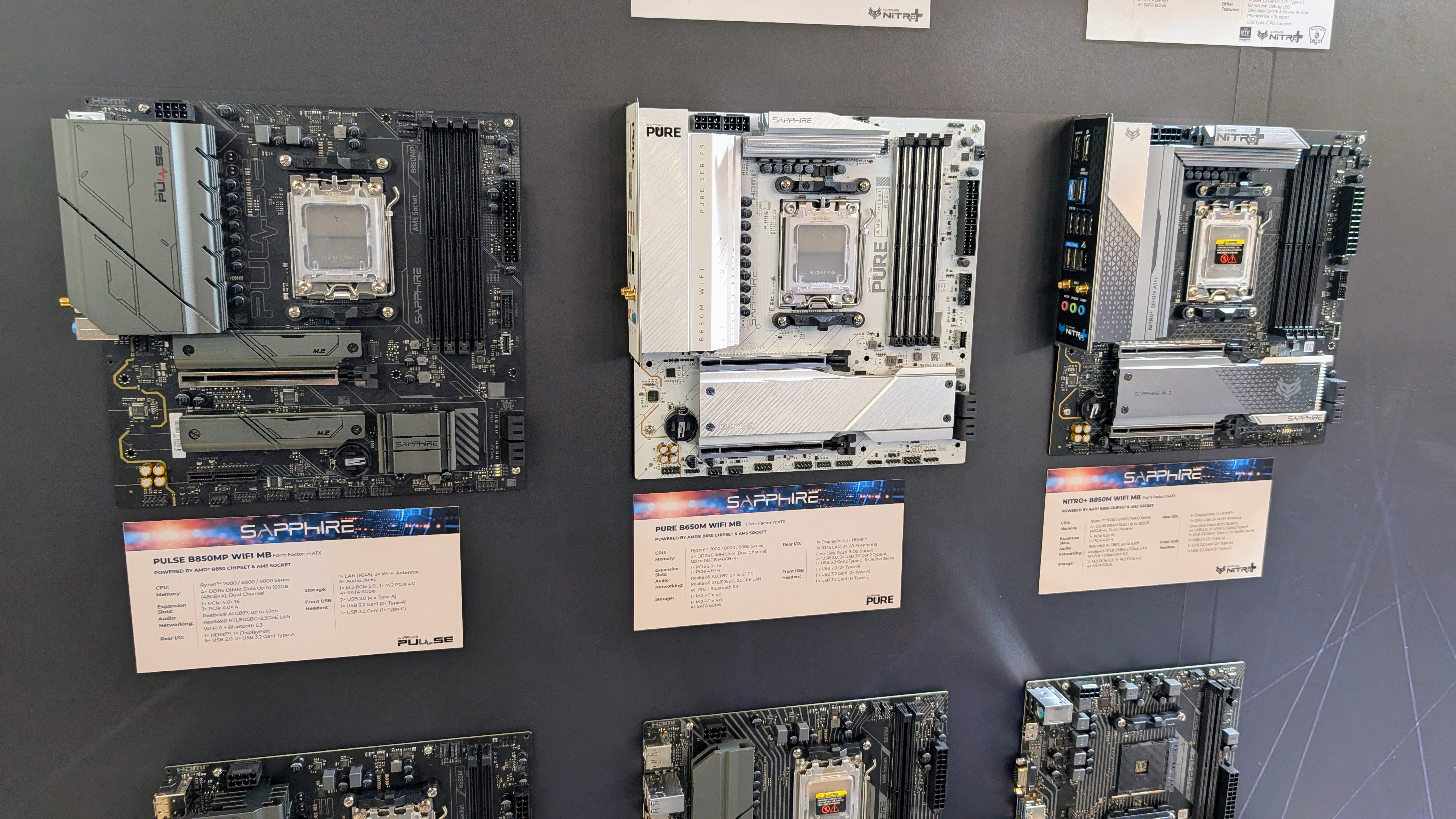

The flagship RX 9070 XT Nitro+ PhantomLink was on display, but Sapphire also showed off its RX 9060 XT cards, available with 8GB or 16GB of memory and by all accounts, solid RDNA 4 performance.
We also found the new Edge AI 370 mini PC rather appealing. It’s compact but has a powerful Ryzen AI 9 HX 370 CPU, supports up to 96GB of DDR5 memory, has 50 TOPS of AI performance, and if you are into that kind of self-abuse, it offers full Copilot+ support.
Asus packs in power, peripherals, and a 3D CPU cooler
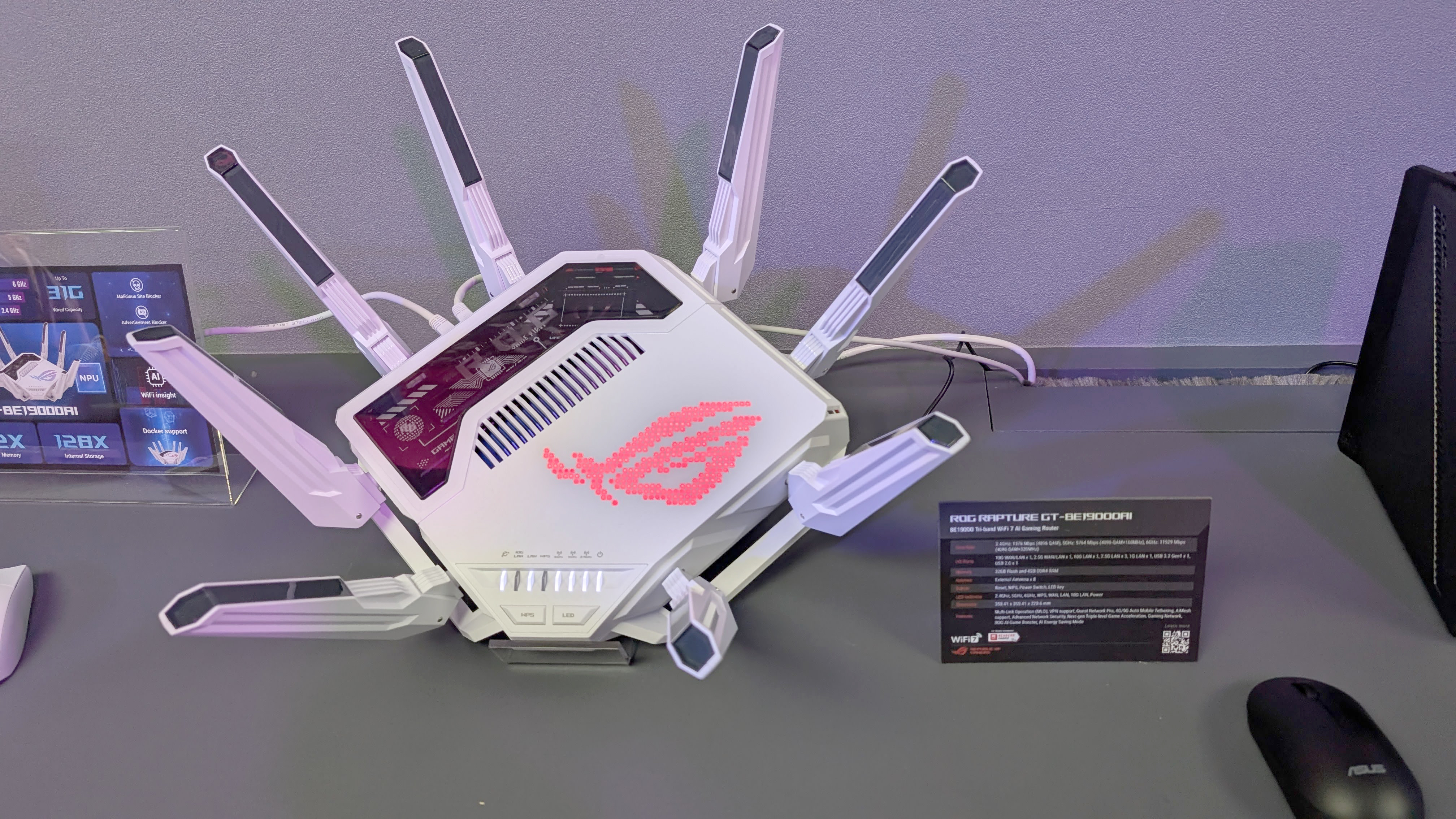
Asus had so much to show off at Computex that they filled out two huge areas on the showroom floor. AI-powered laptops, esports-grade peripherals, next-gen handhelds, enterprise PCs, hidden-cable motherboards, and yes, even a CPU cooler with a curved LCD screen.
The latest ROG gaming gear was a big drawcard for the crowds this year. We especially loved the very unique Falcata 75 percent split gaming keyboard that can be positioned in all sorts of interesting ways, is wireless, and uses hot-swappable magnetic switches. The Harpe II Ace mouse (co-designed with gamer Valorant pro Demon1) felt impressively rigid, considering the ultra-lightweight 48g weight.
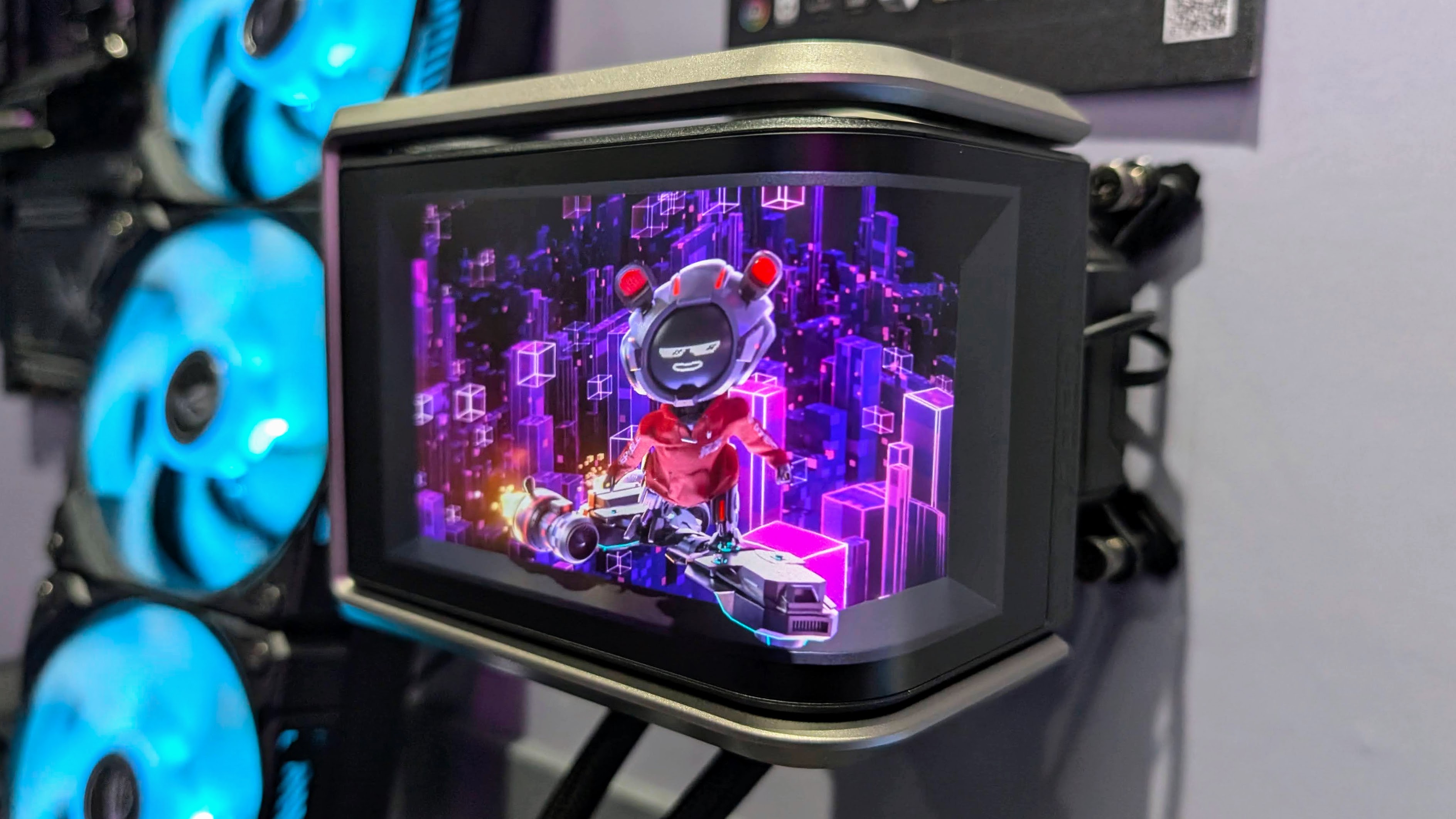
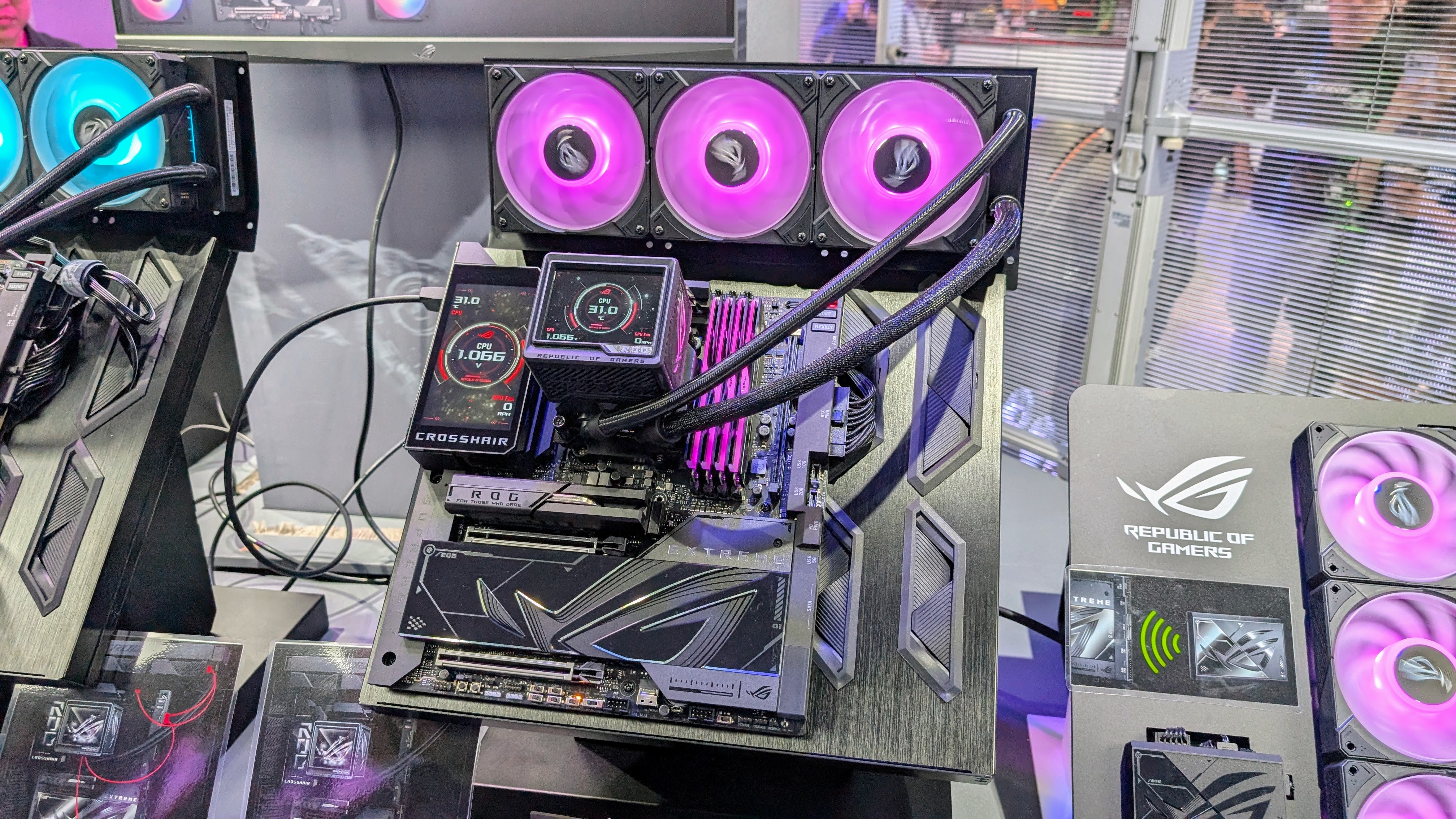
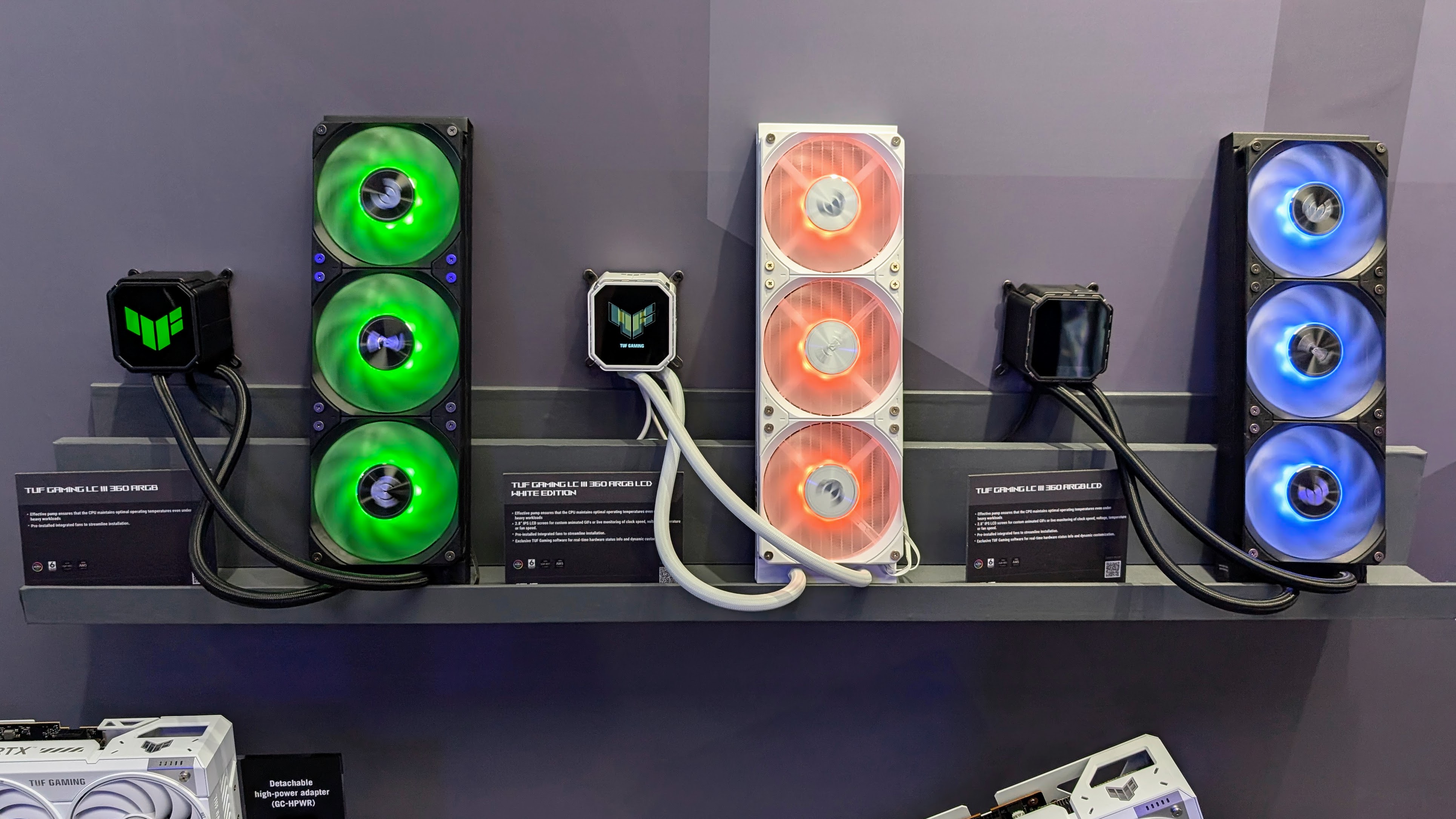
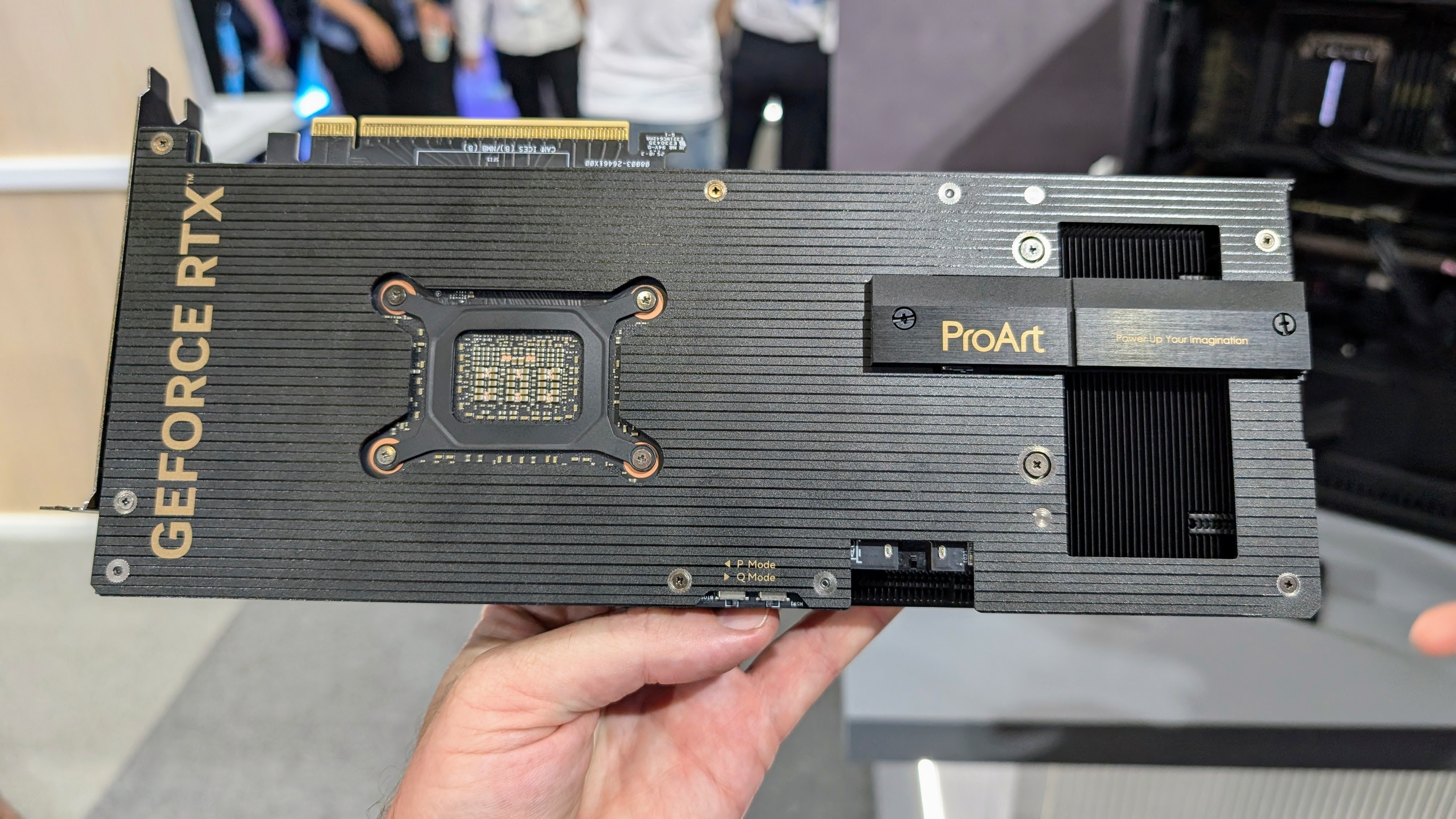
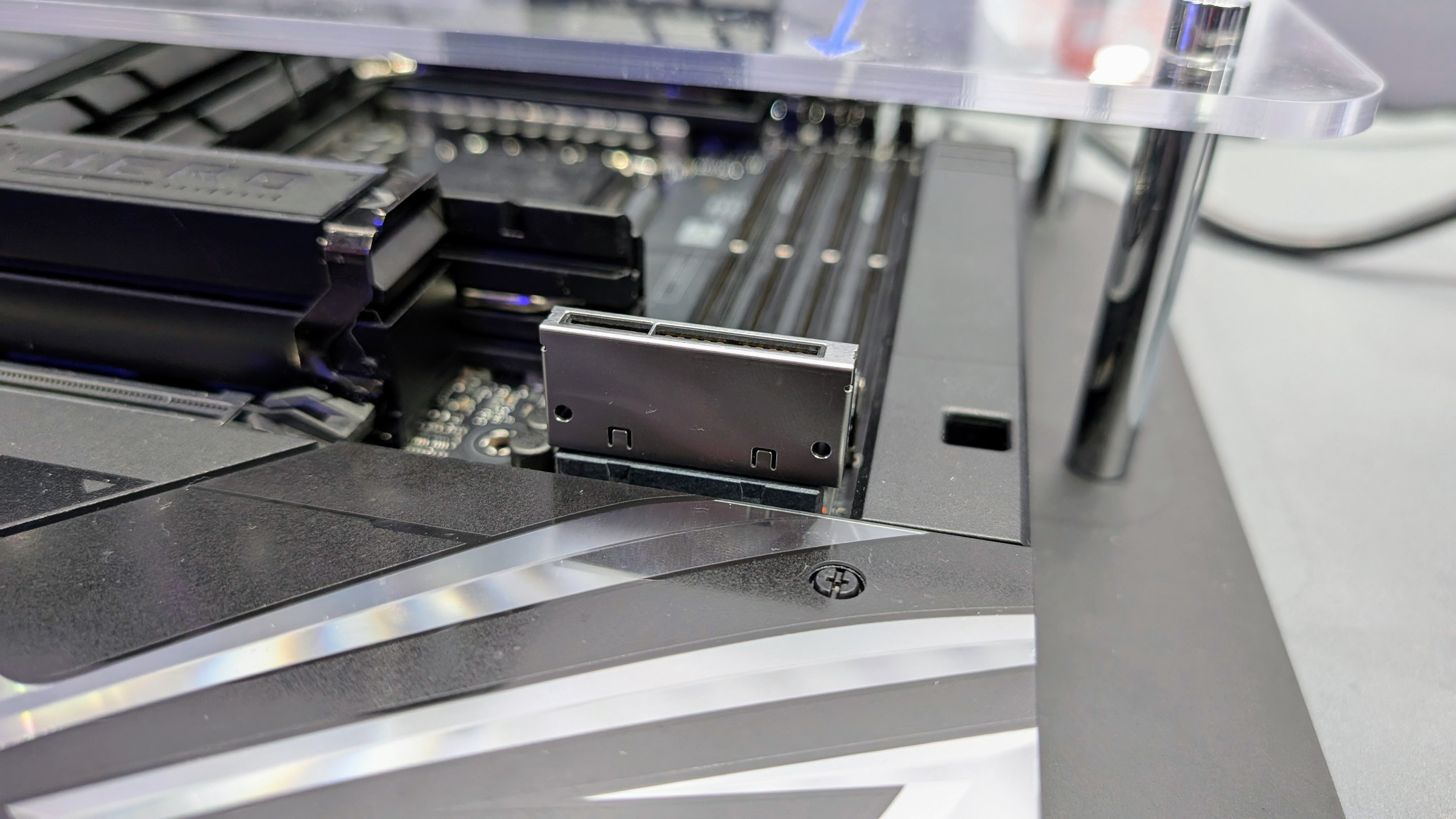
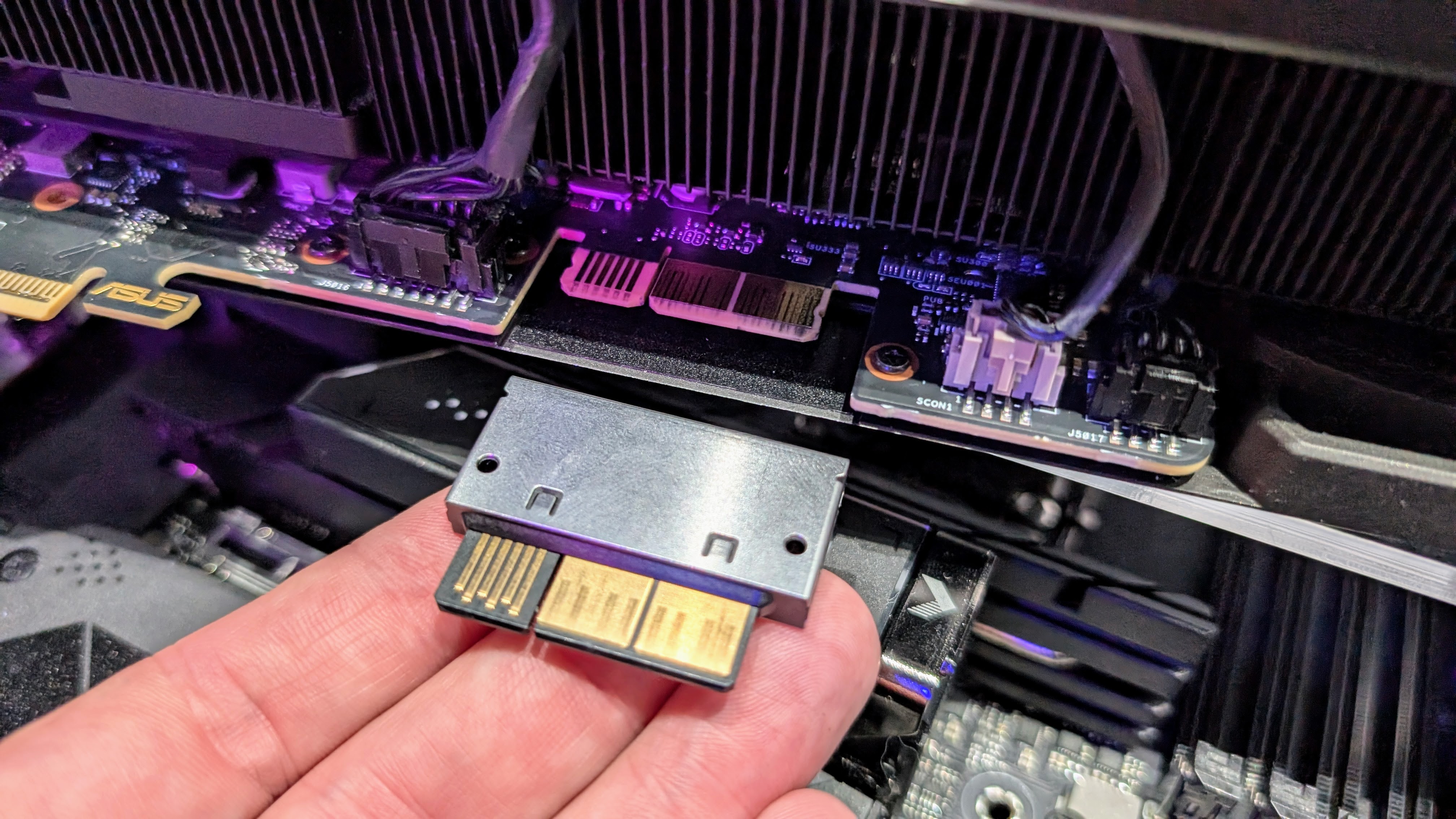
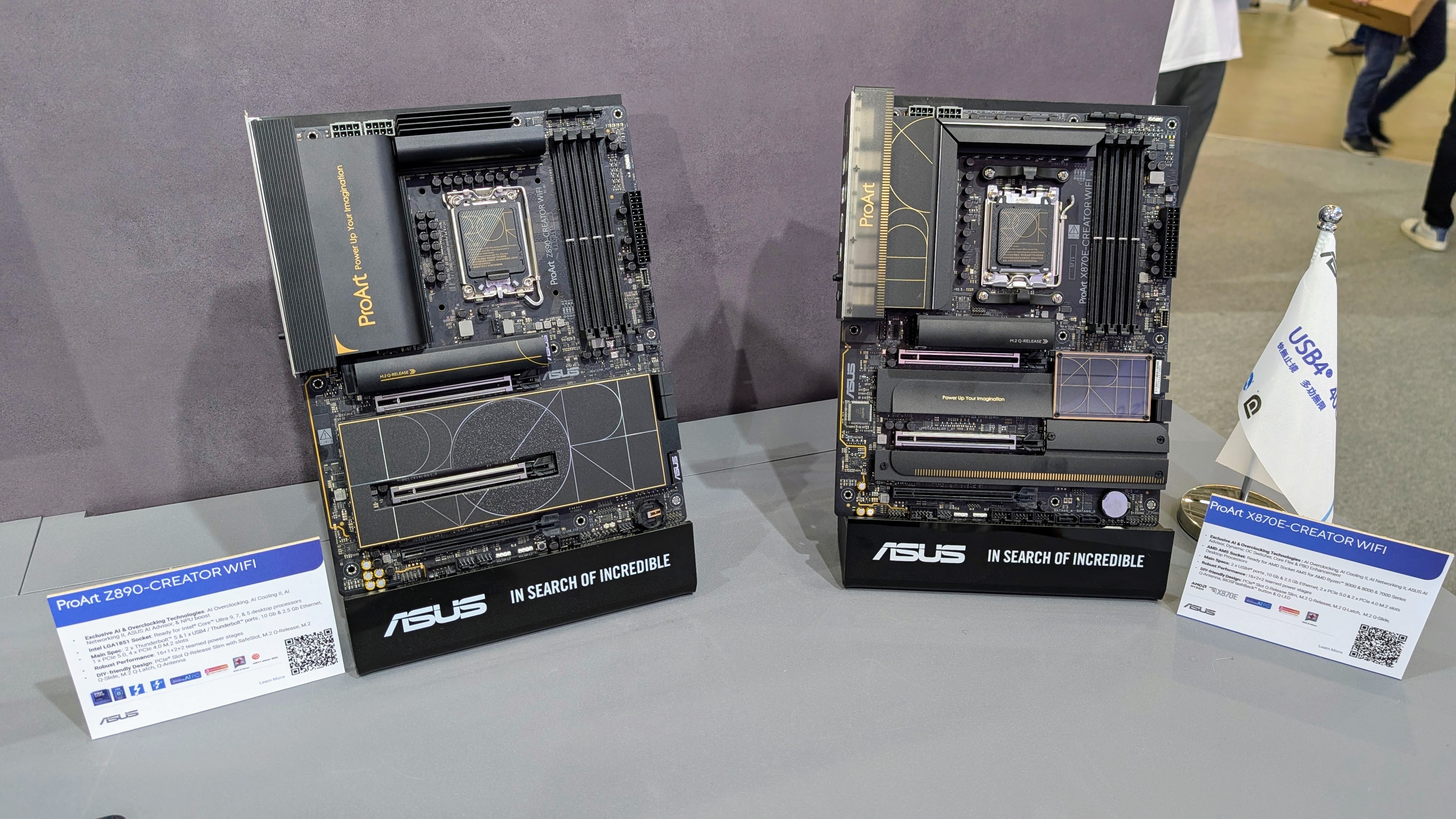
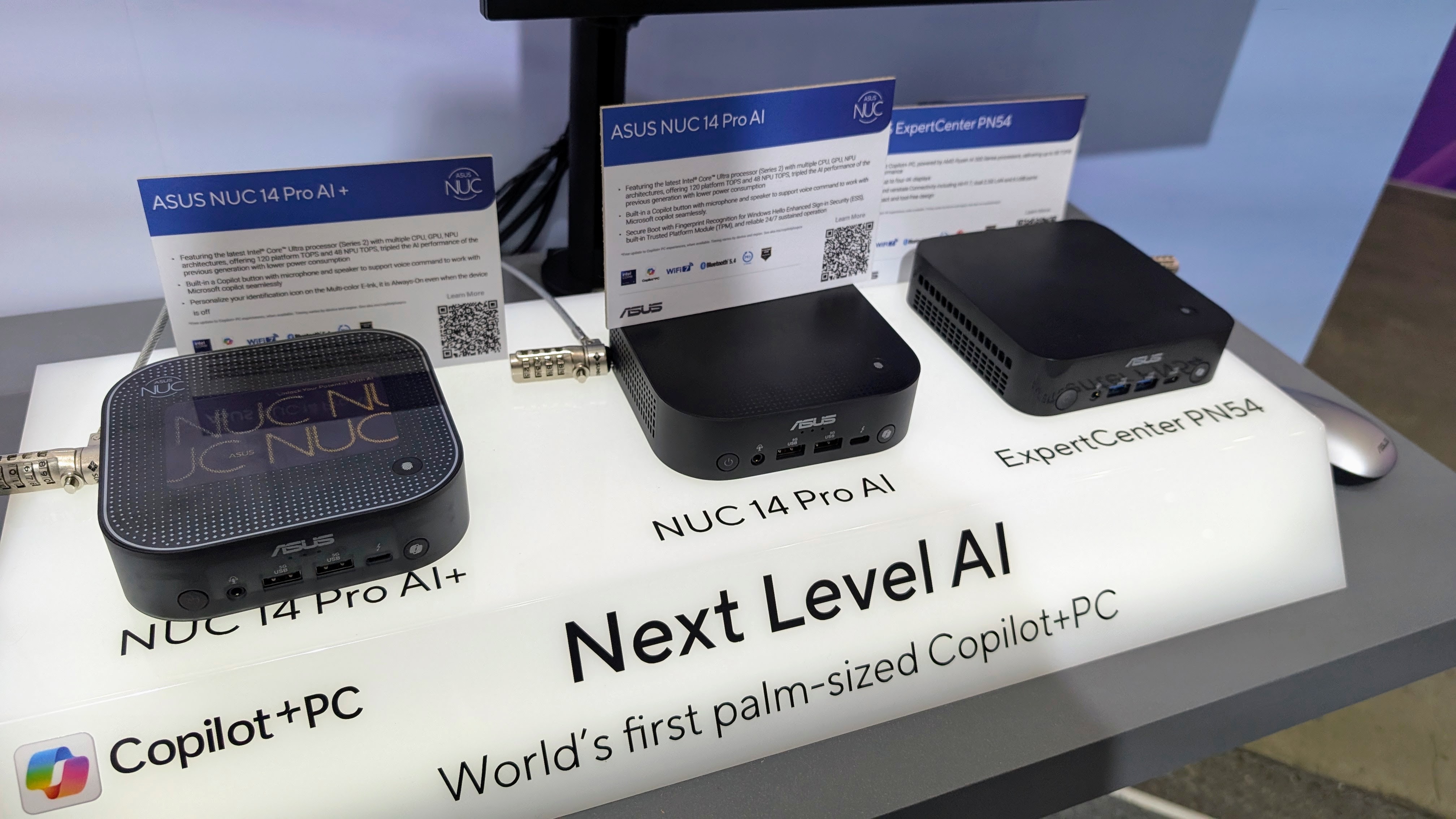
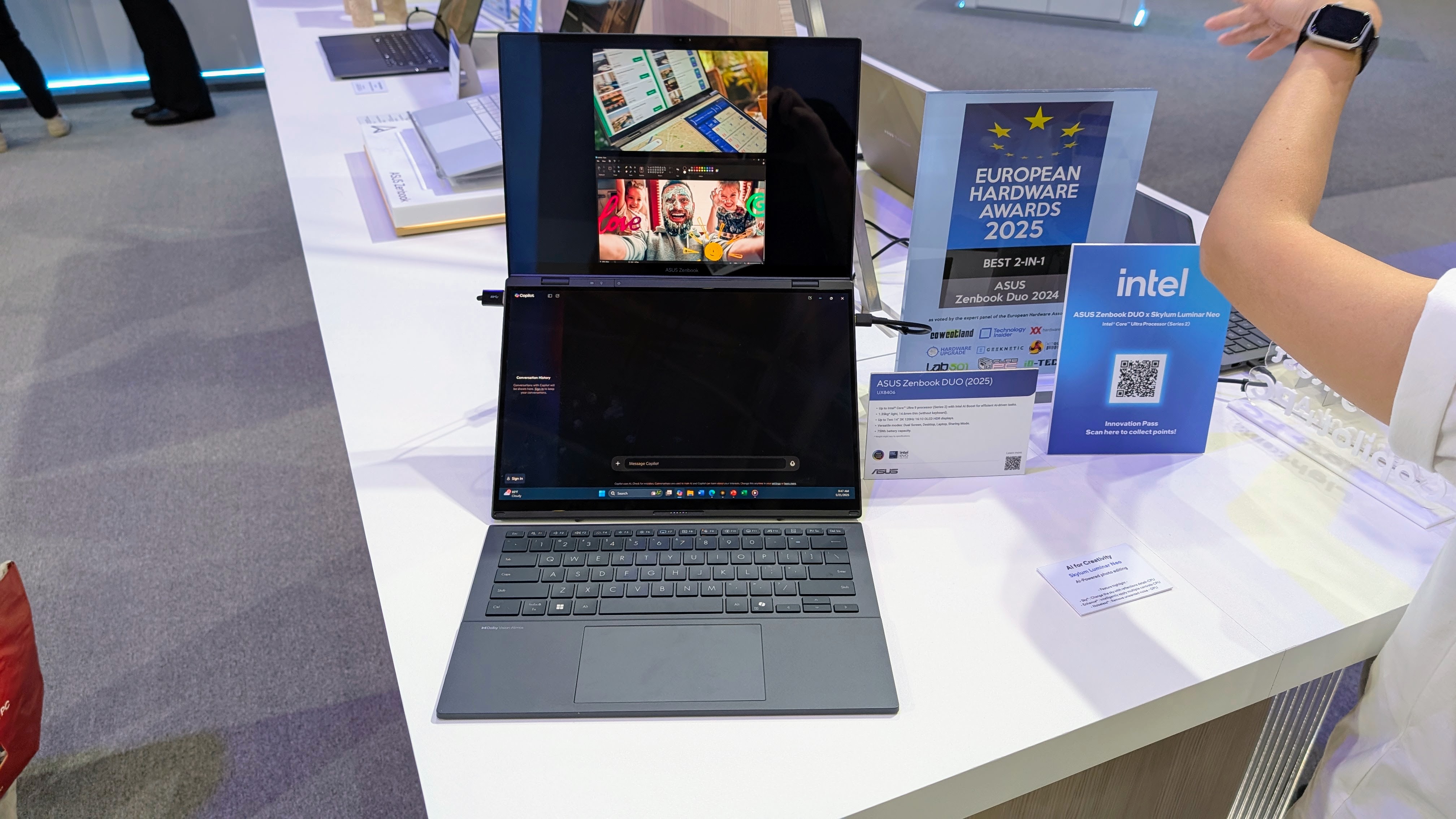
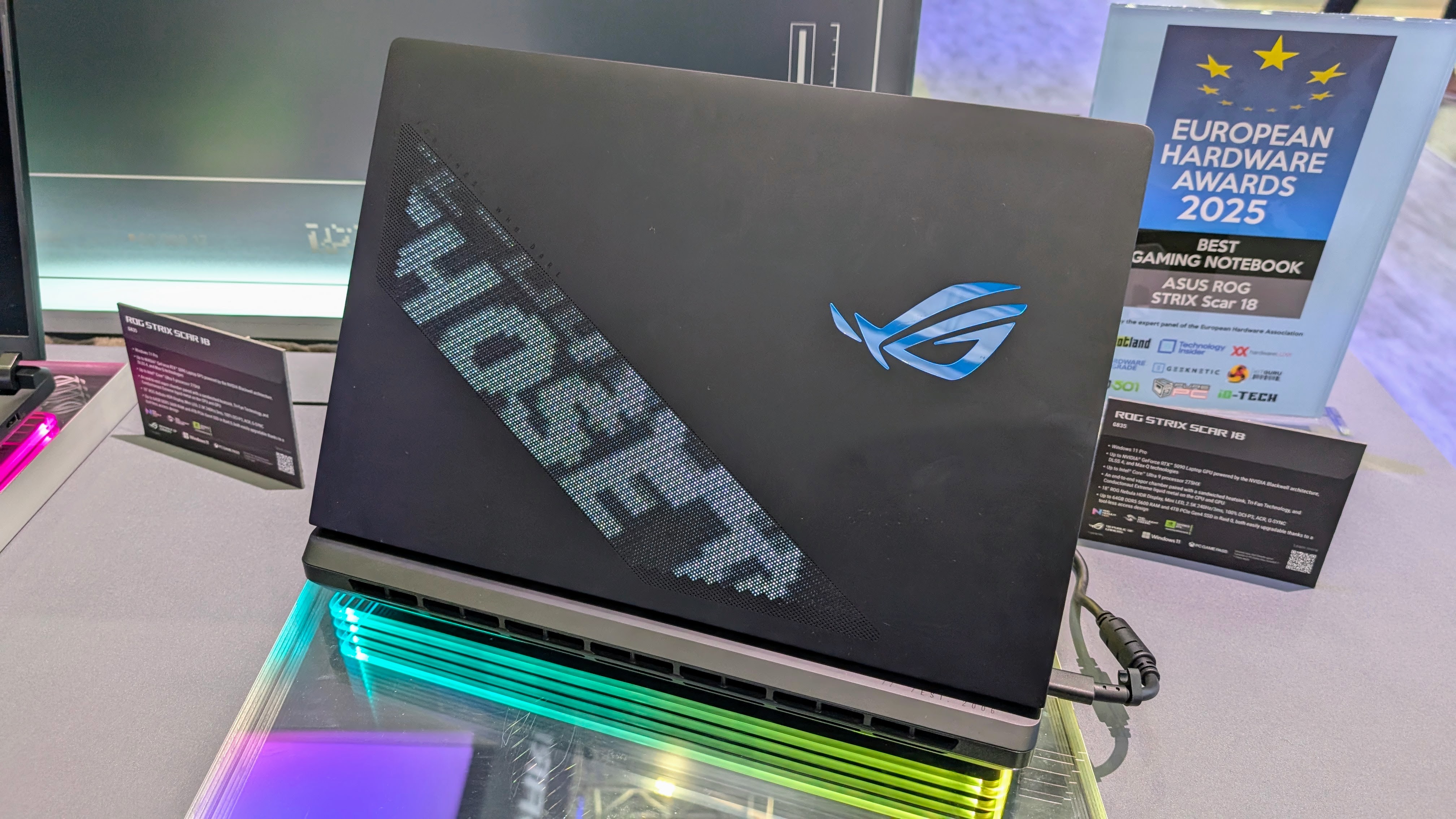
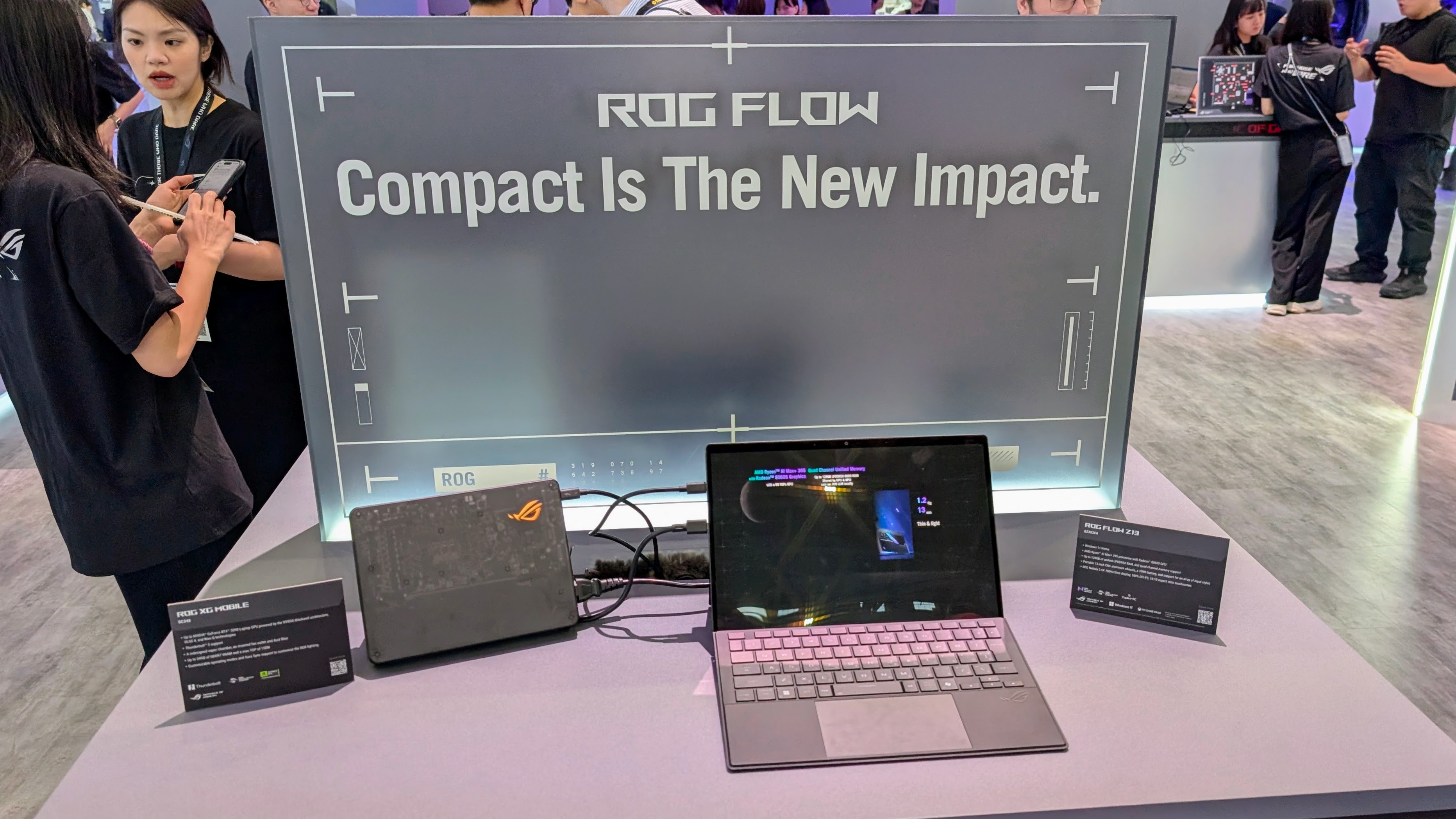

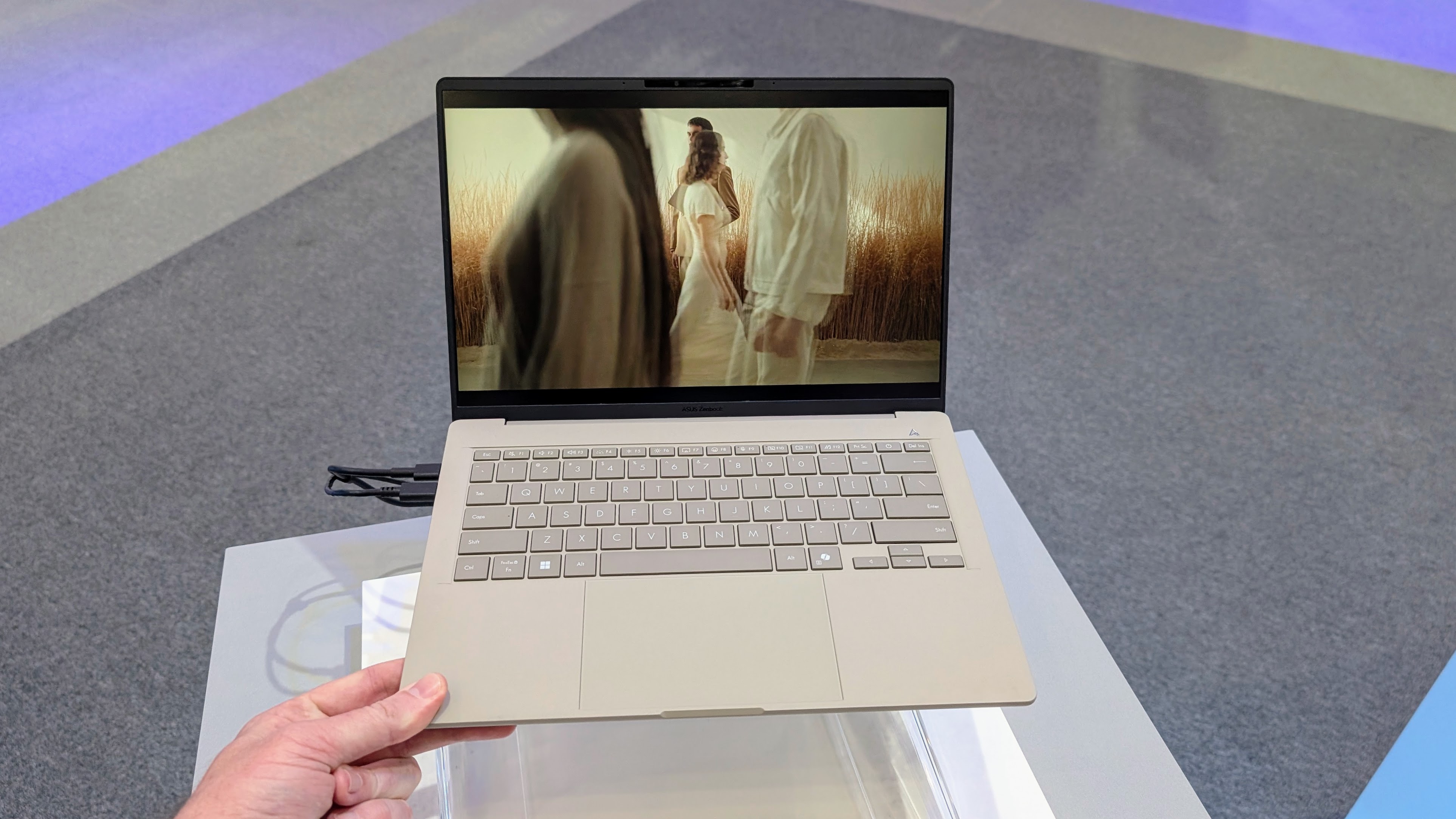
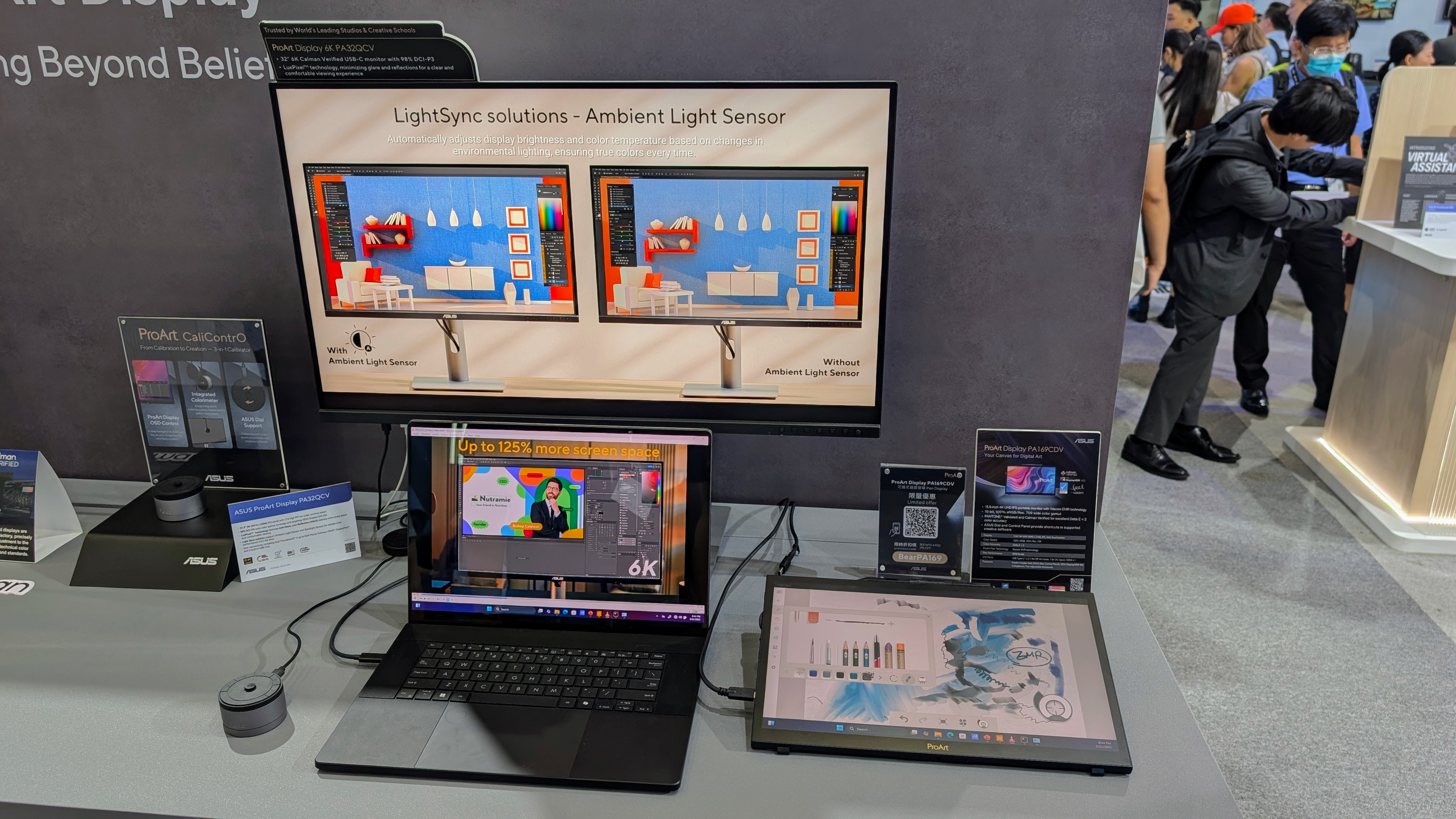
Asus also impressed us with the Strix Ace XG248 esports monitor that, just to be the fastest, uses a 610MHz refresh rate. The ROG Ally X was on show, and really felt like a well refined handheld thanks to some new tweaks like a much larger 80Wh battery, better grips and improved cooling.
Asus also had our favourite of the near endless CPU coolers with screens: the ROG Ryuo IV SLC 360 ARGB AIO unit. Cooling functionality and daisy-chainable ARGB fans aside, the standout feature is a 6.67-inch curved 2K AMOLED display that when viewed from the right angle, gives a 3D effect that actually works pretty well.
On the AI development side, Asus had the Ascent GX10 (using Nvidia’s GB10 Grace Blackwell Superchip) that provides developers 1,000 AI TOPS and 128GB of unified memory in a desktop form factor.
Gigabyte goes big, small, slim and AI
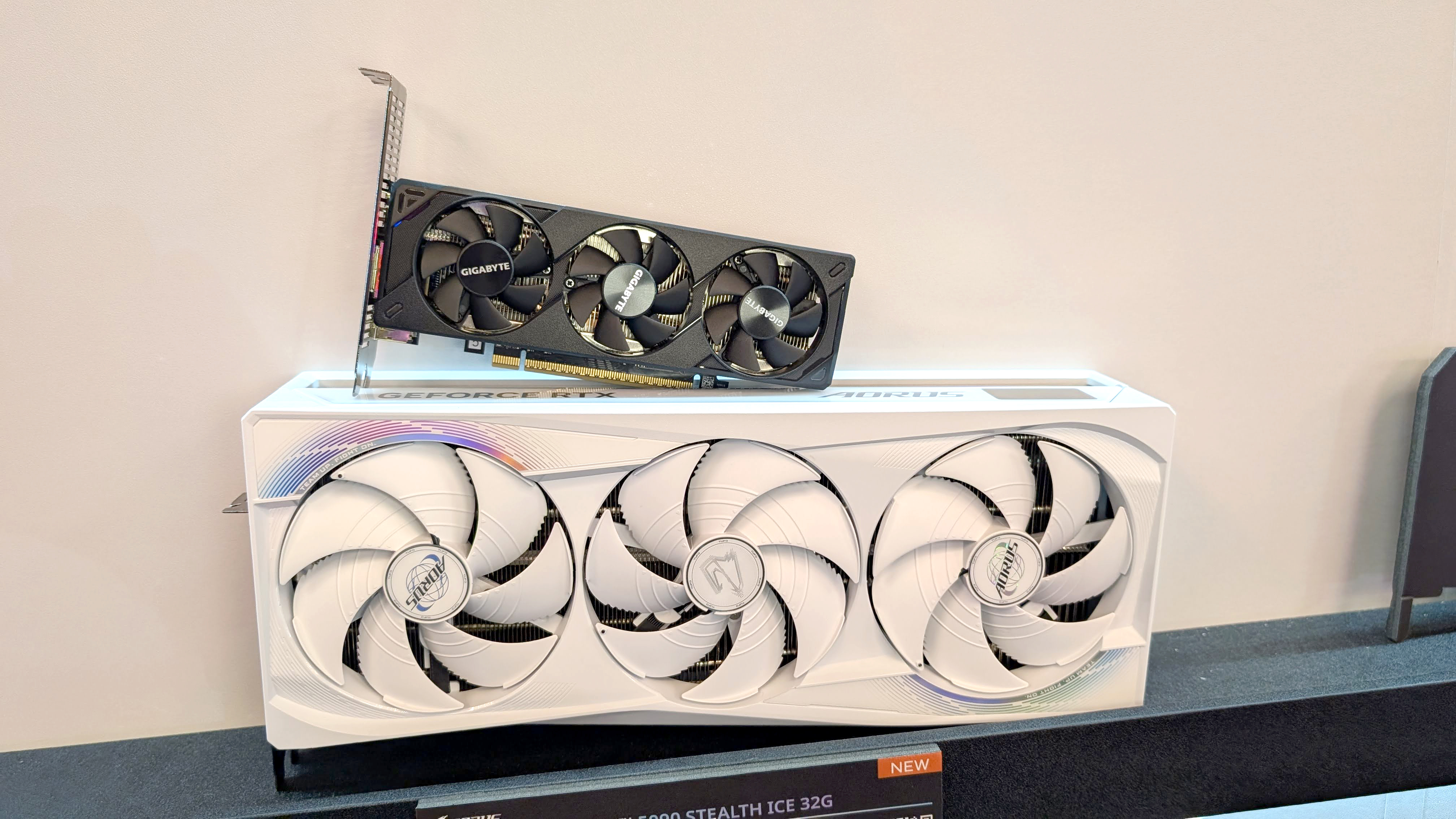
Gigabyte came to Computex 2025 with so much to demo they needed to book out a function room in a nearby hotel in addition to their spaceship? shaped stand on the showroom floor. And yes, Gigabyte did launch some new AIO water coolers with inbuilt LCDs, but one minor point of difference – the screens were round, rather than square.
Gigabyte had its take on the mid-range Radeon RX 9060 XT on hand – designed for high-refresh gaming at better than 1080p resolutions. But our surprise favourite was a little RTX 5060 OC Low Profile GPU. This half-height triple-fan card looks perfect for building a slim casual gaming rig or maybe a stealthy but powerful HTPC.
Of course, Gigabyte also had their share of heavy-duty AI hardware featuring the latest from Nvidia. The Aorus RTX 5090 AI Box is especially interesting, and is a water-cooled external GPU that connects to your PC via Thunderbolt 5. It is built to handle gaming or AI workloads, and the claim is it’s as little as 14% slower than the same GPU in a desktop machine.
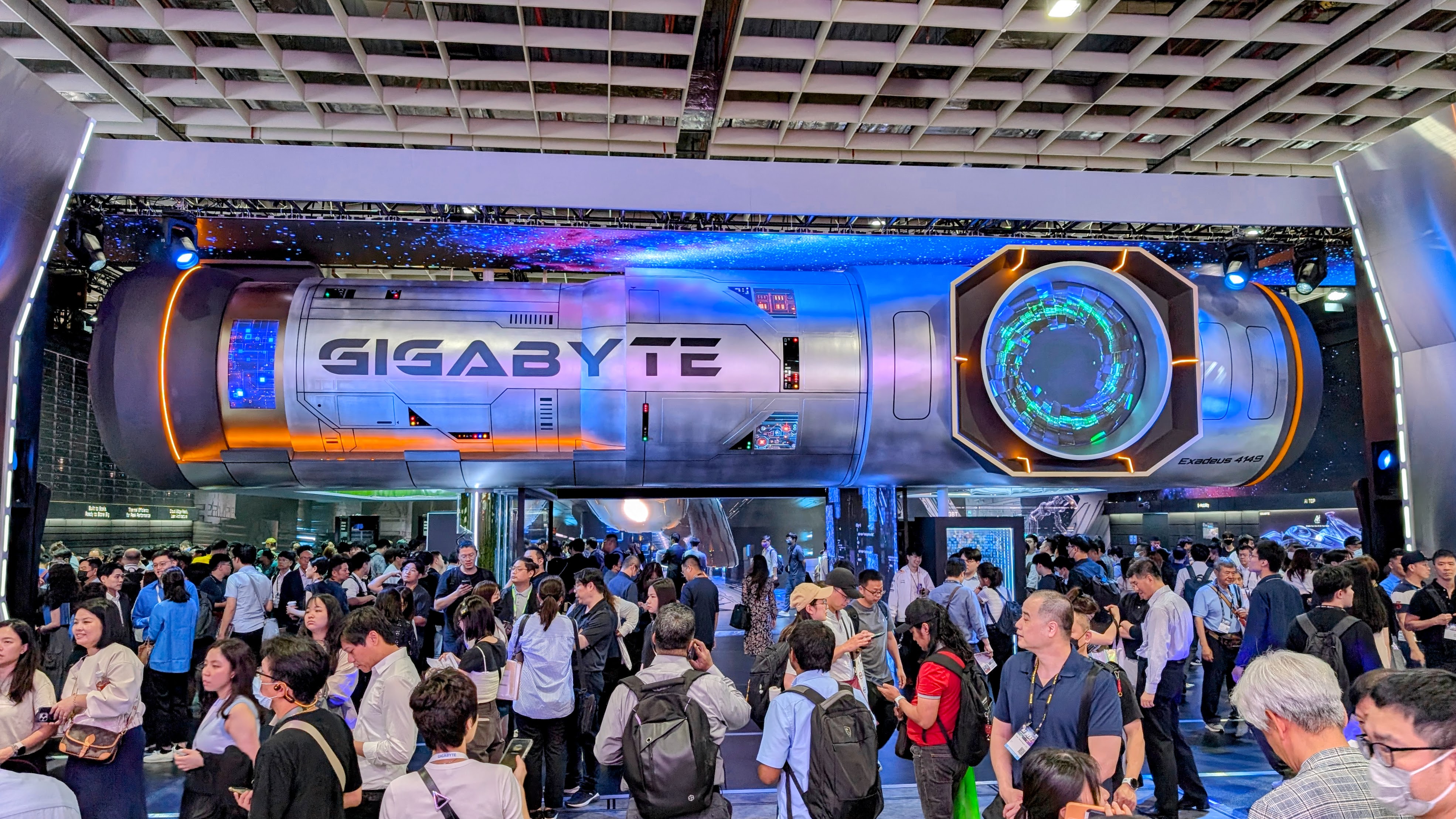
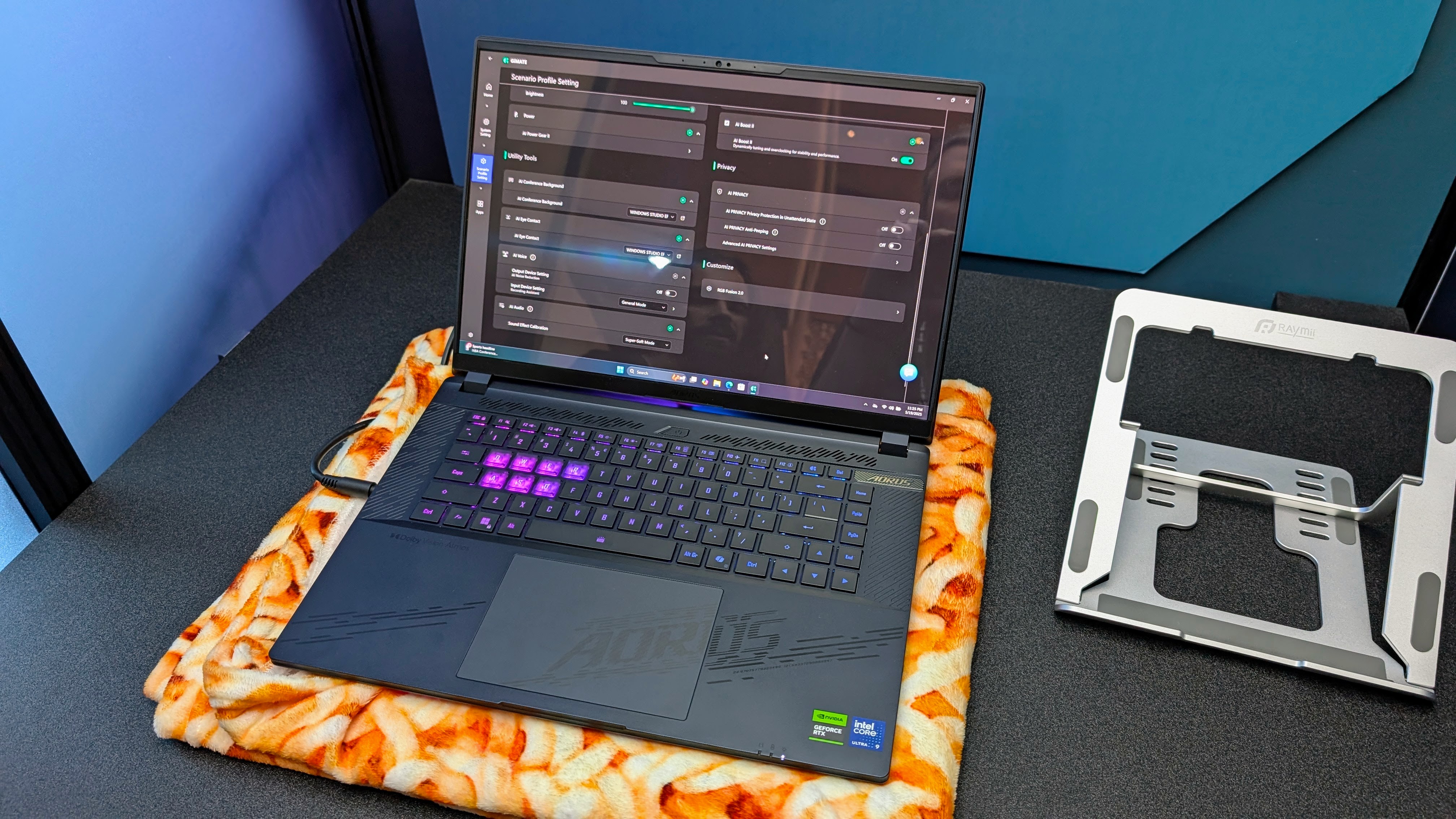
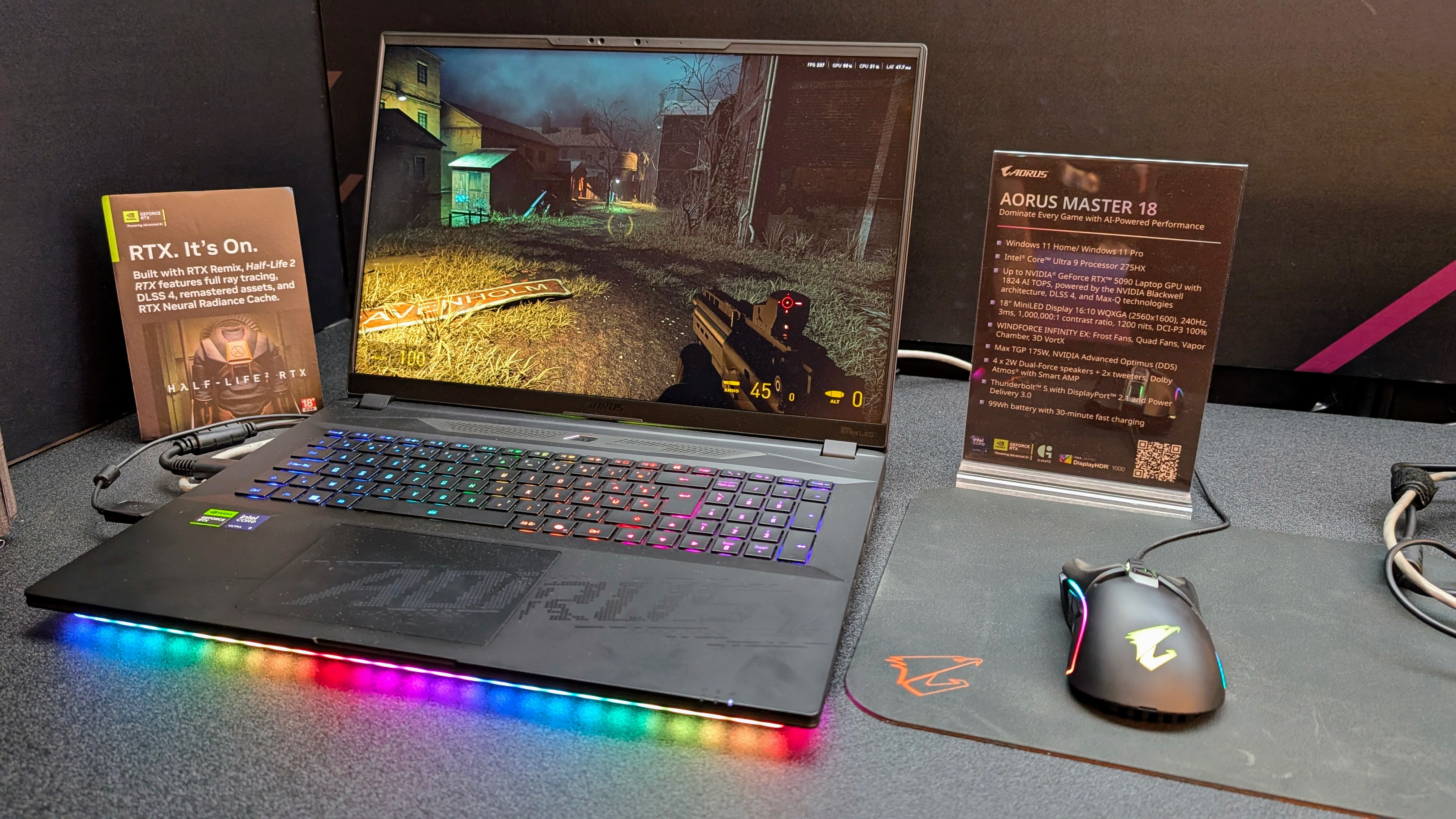
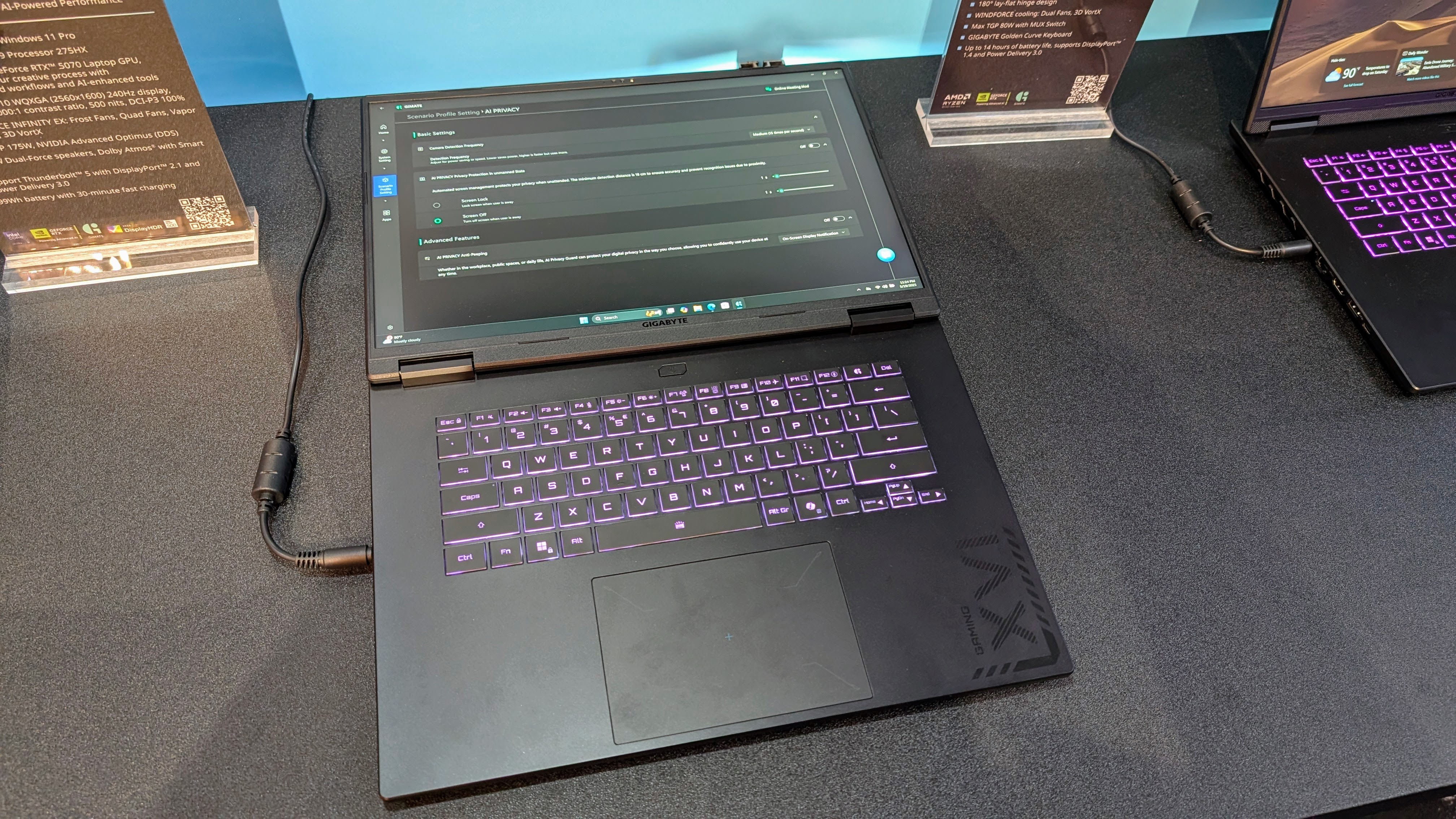
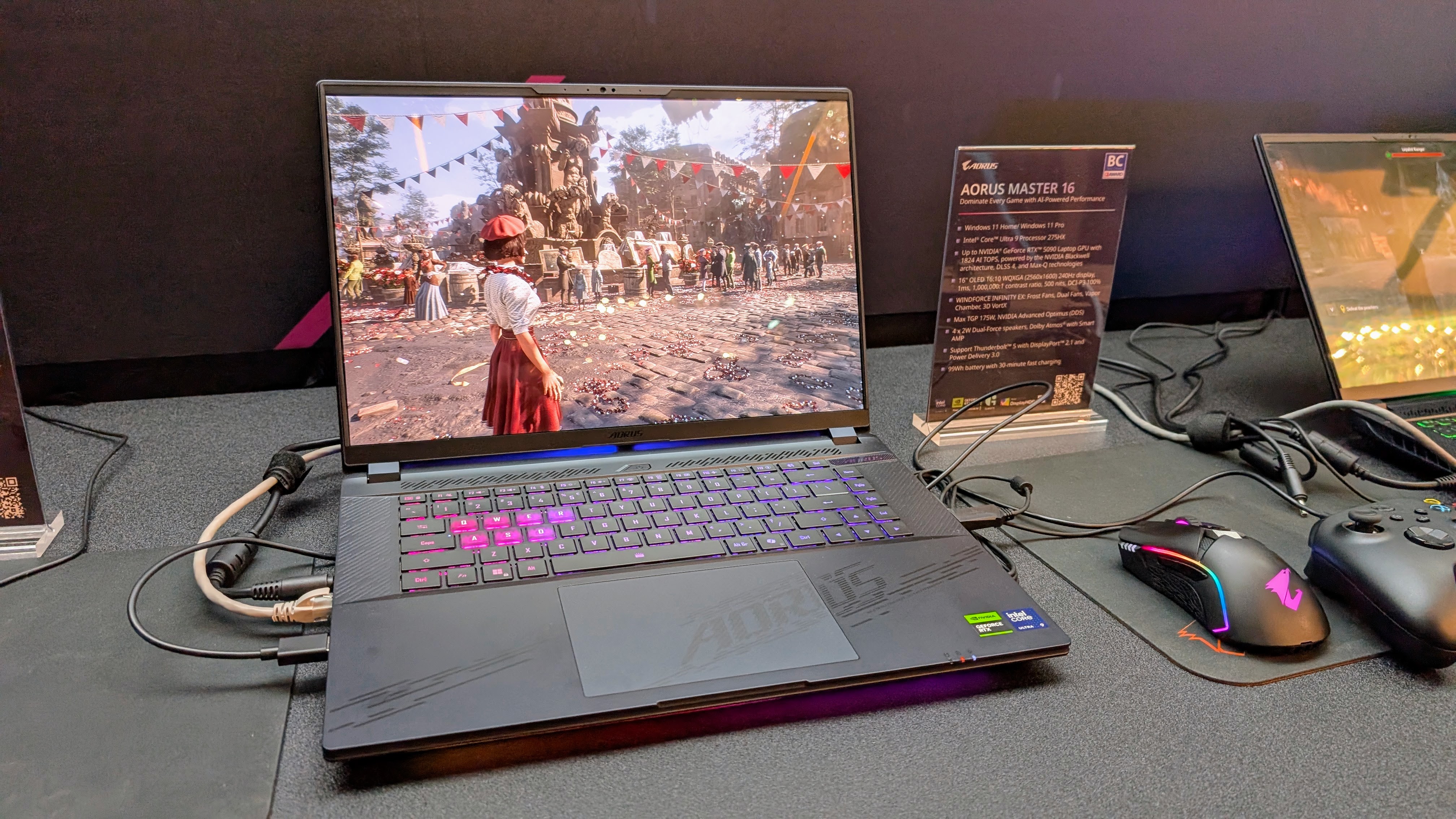
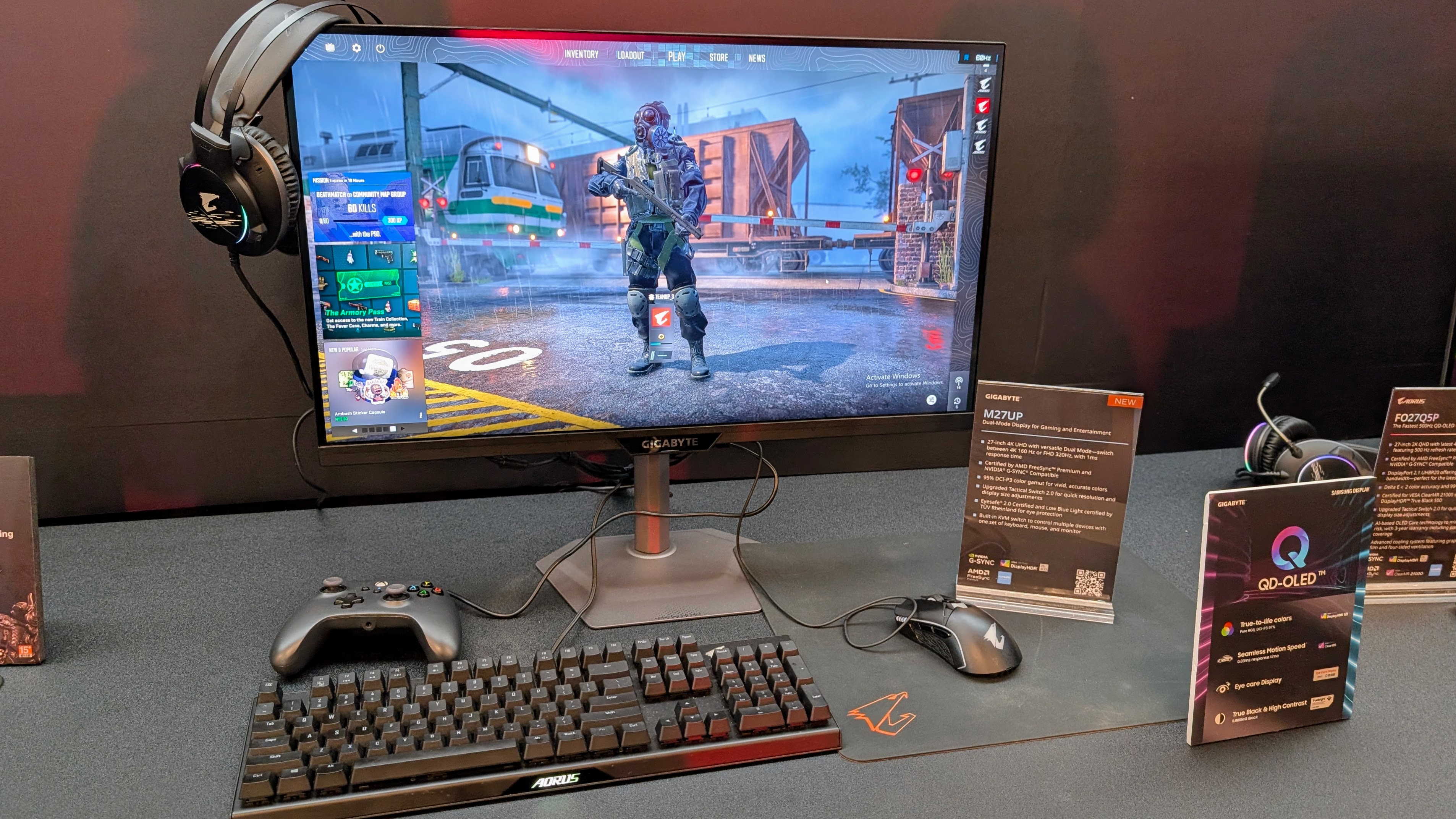
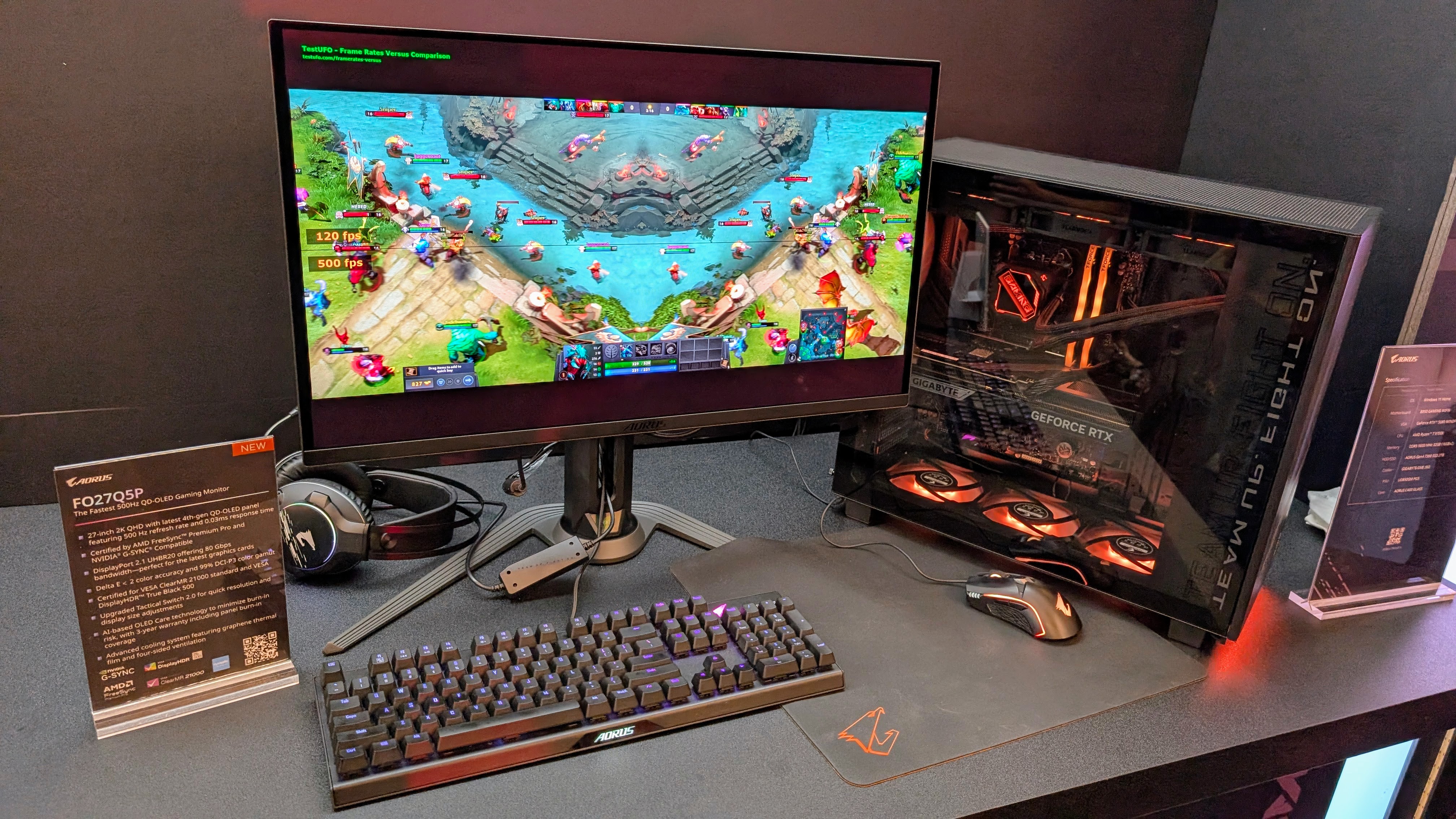
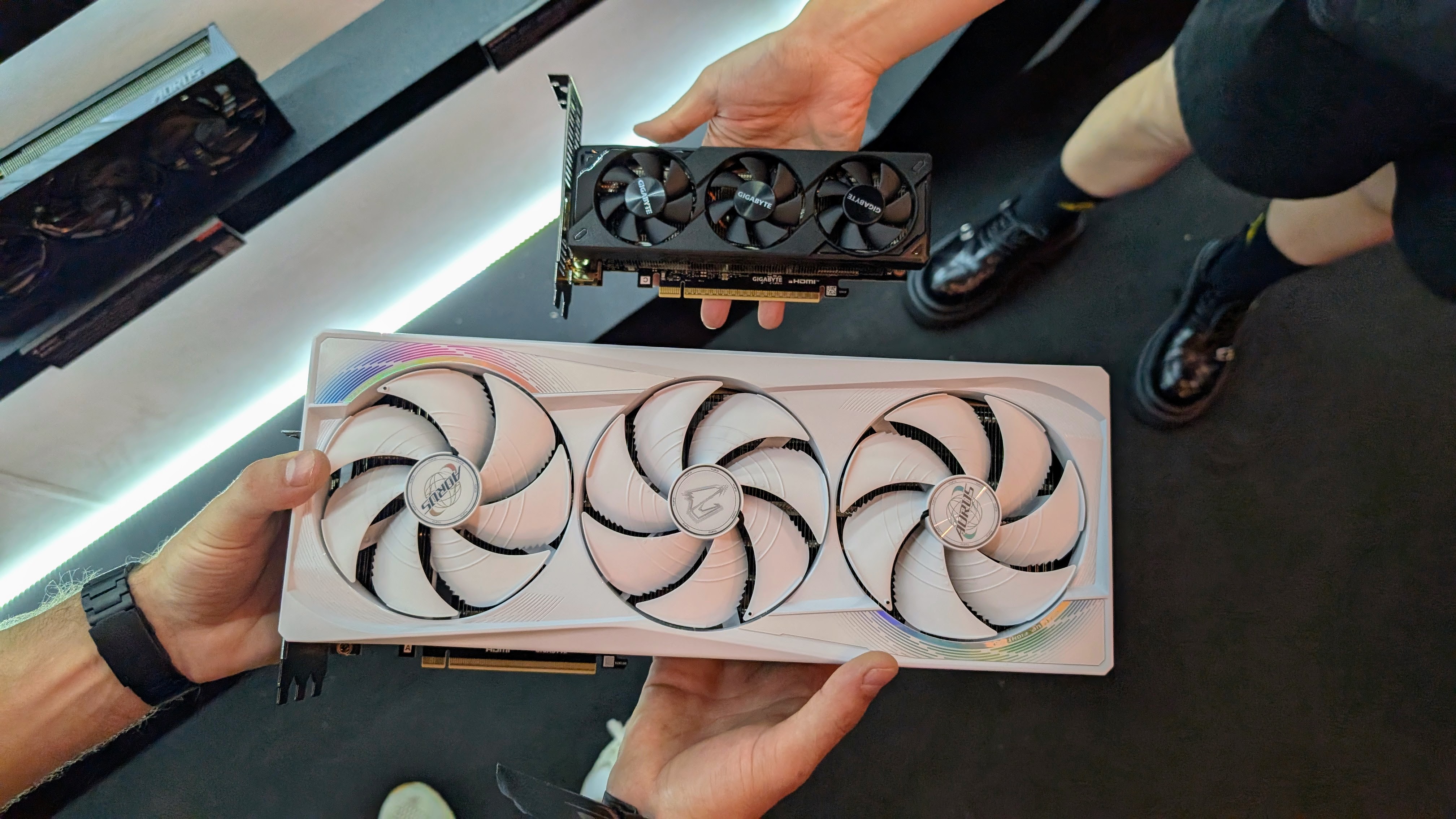
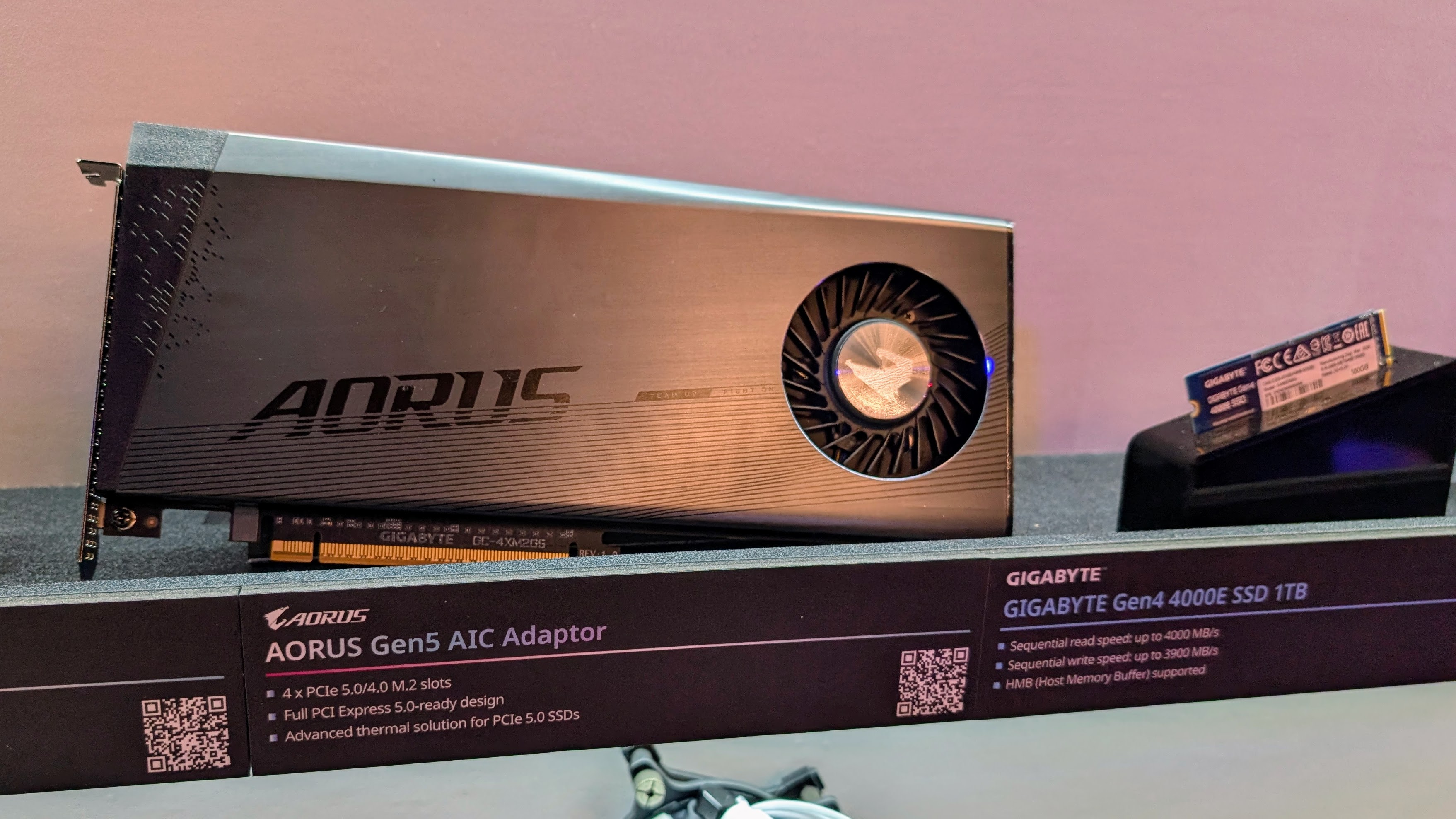
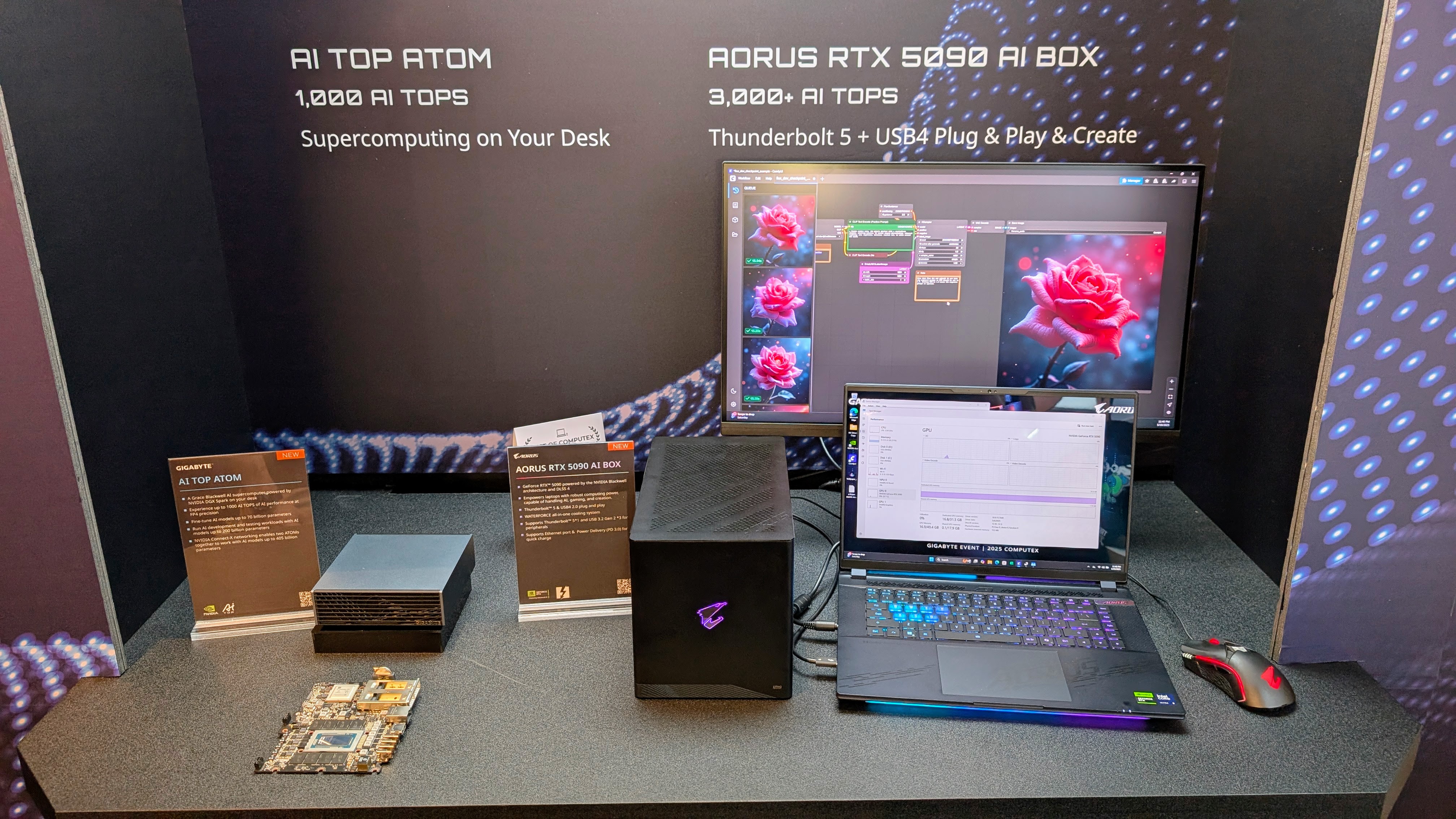
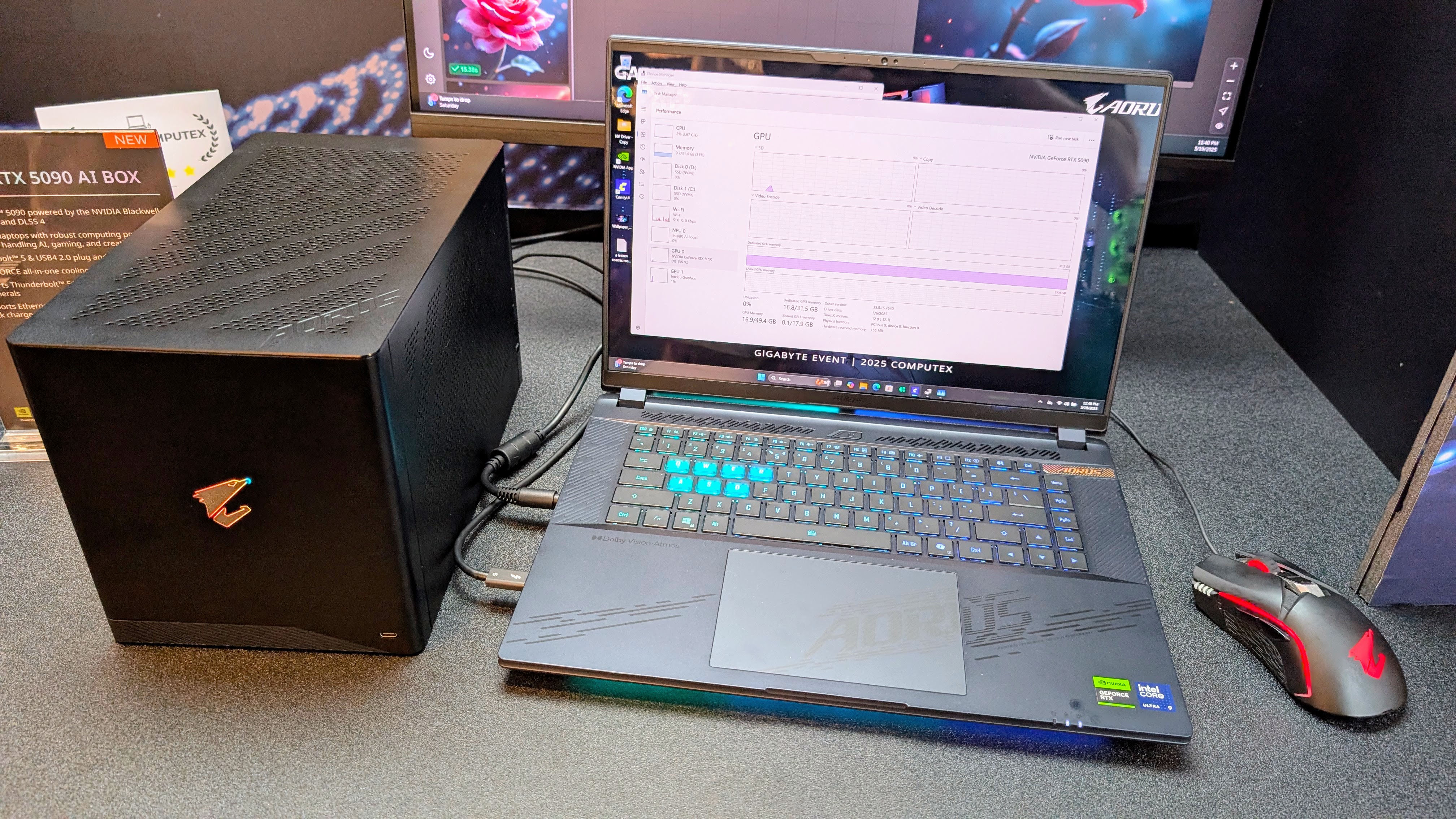
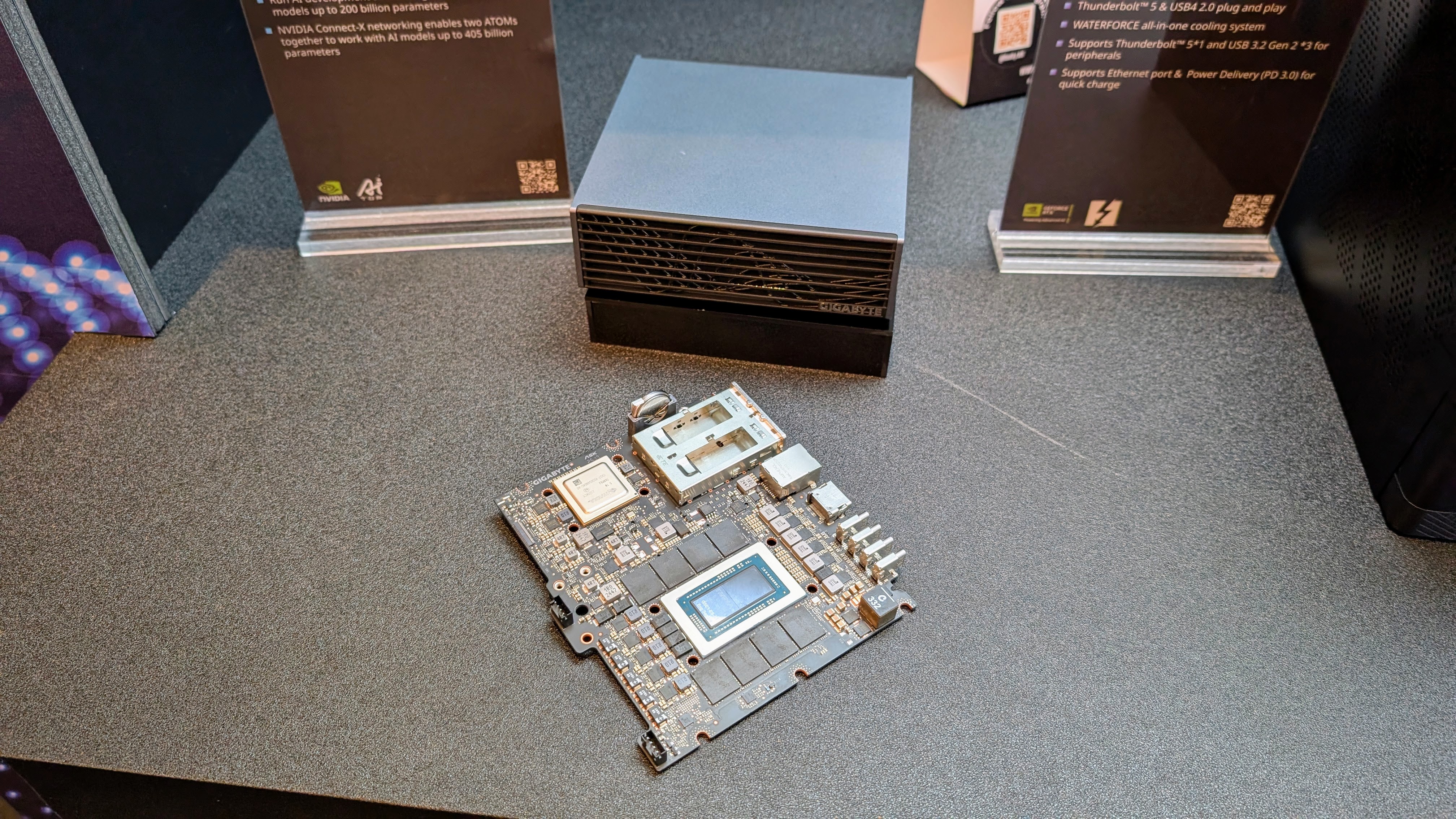
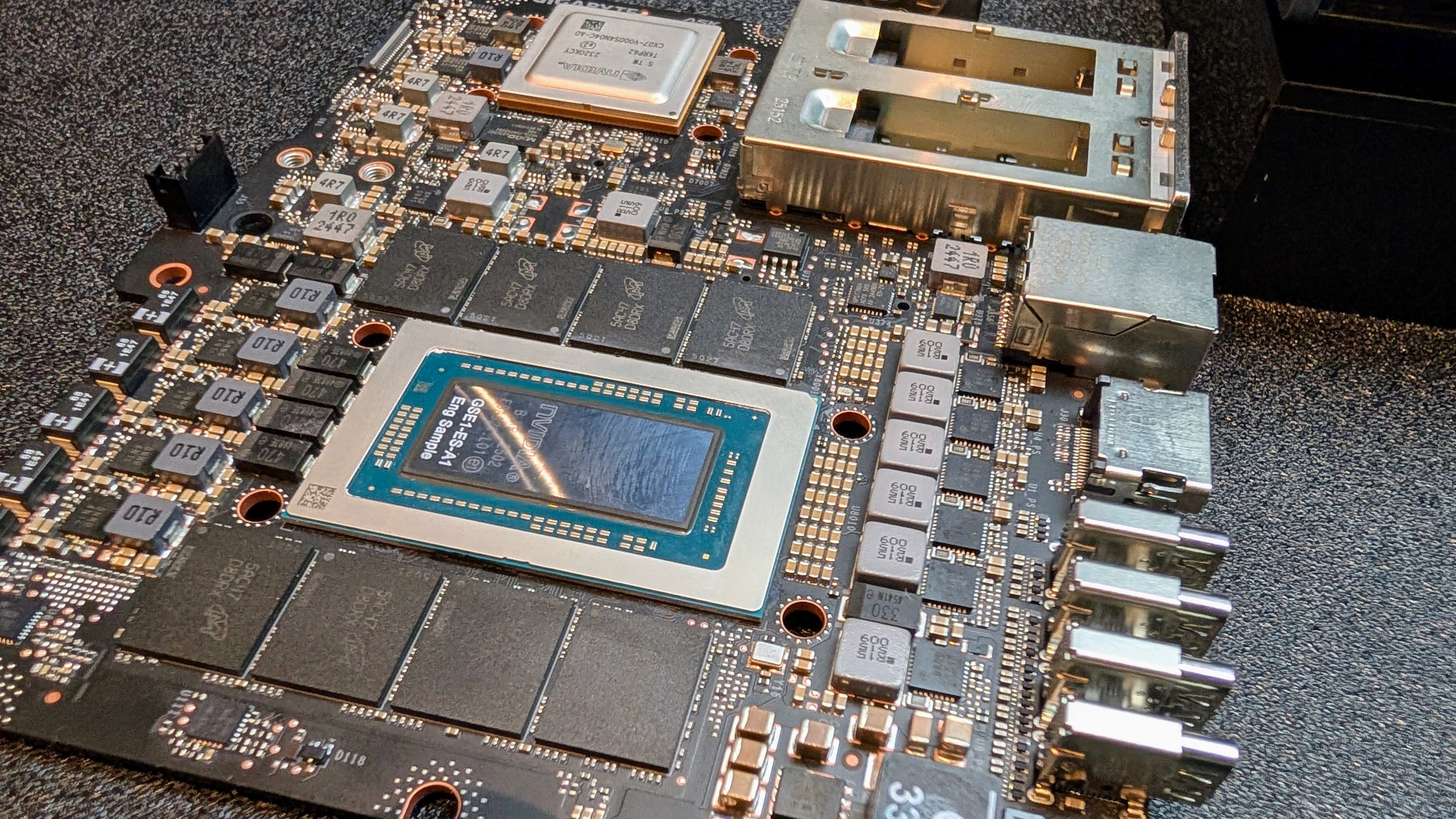
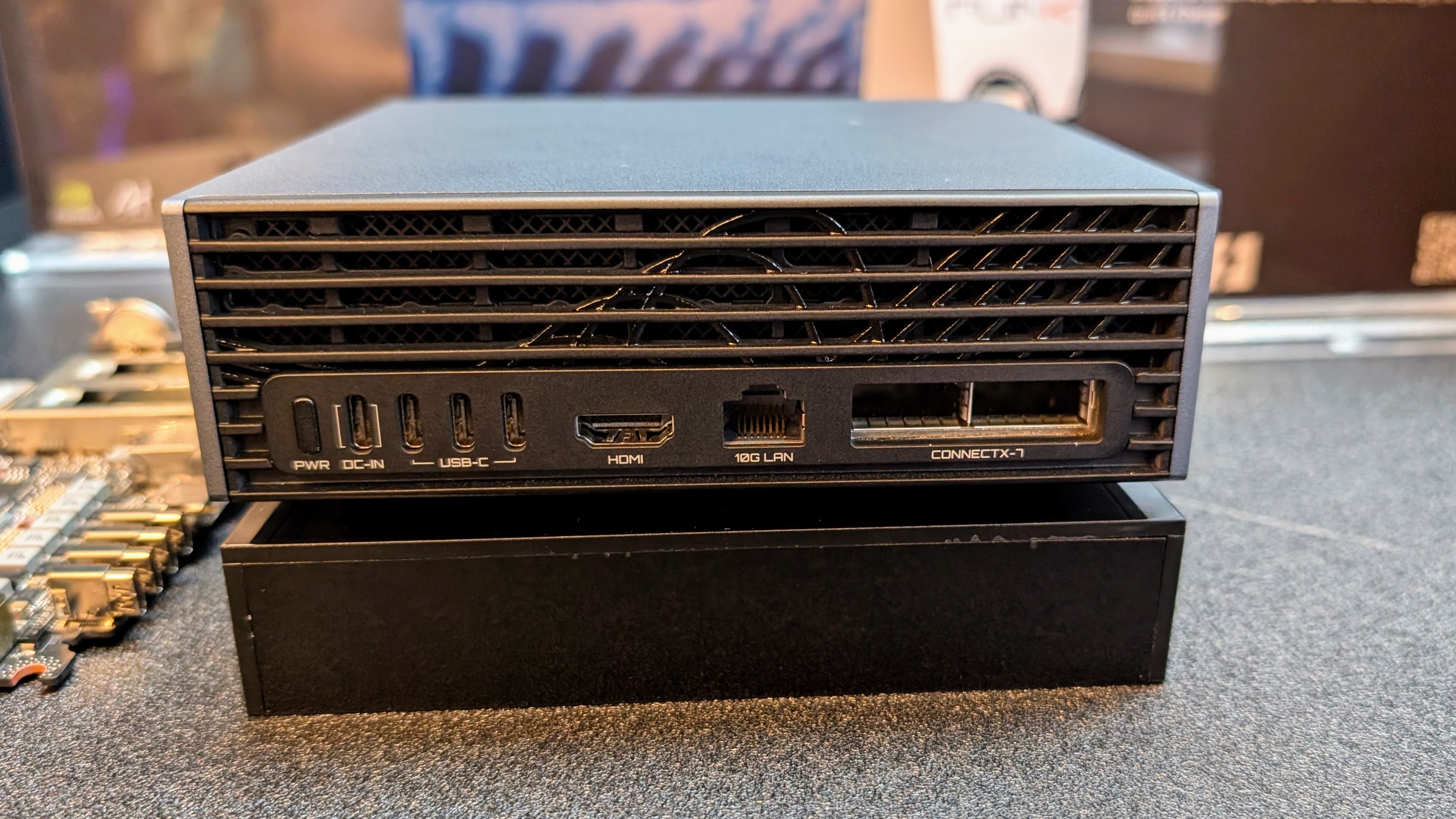

Then there is the AI TOP Atom – personal desktop AI dev rig running Nvidia’s Grace Blackwell chip, with 1,000 TOPS of performance and 128GB of memory.
Gigabyte had loads of new gaming laptop models to show off (like the Gaming A16 and A18) but were more interested in talking about the built-in AI tools. We look forward to trying them out, as options like the GiMATE Coder for beginner-friendly programming and automatic sound adjustment when the laptop is on soft surfaces actually seem pretty useful.
Kingston at Computex: fast drives and the future of RAM
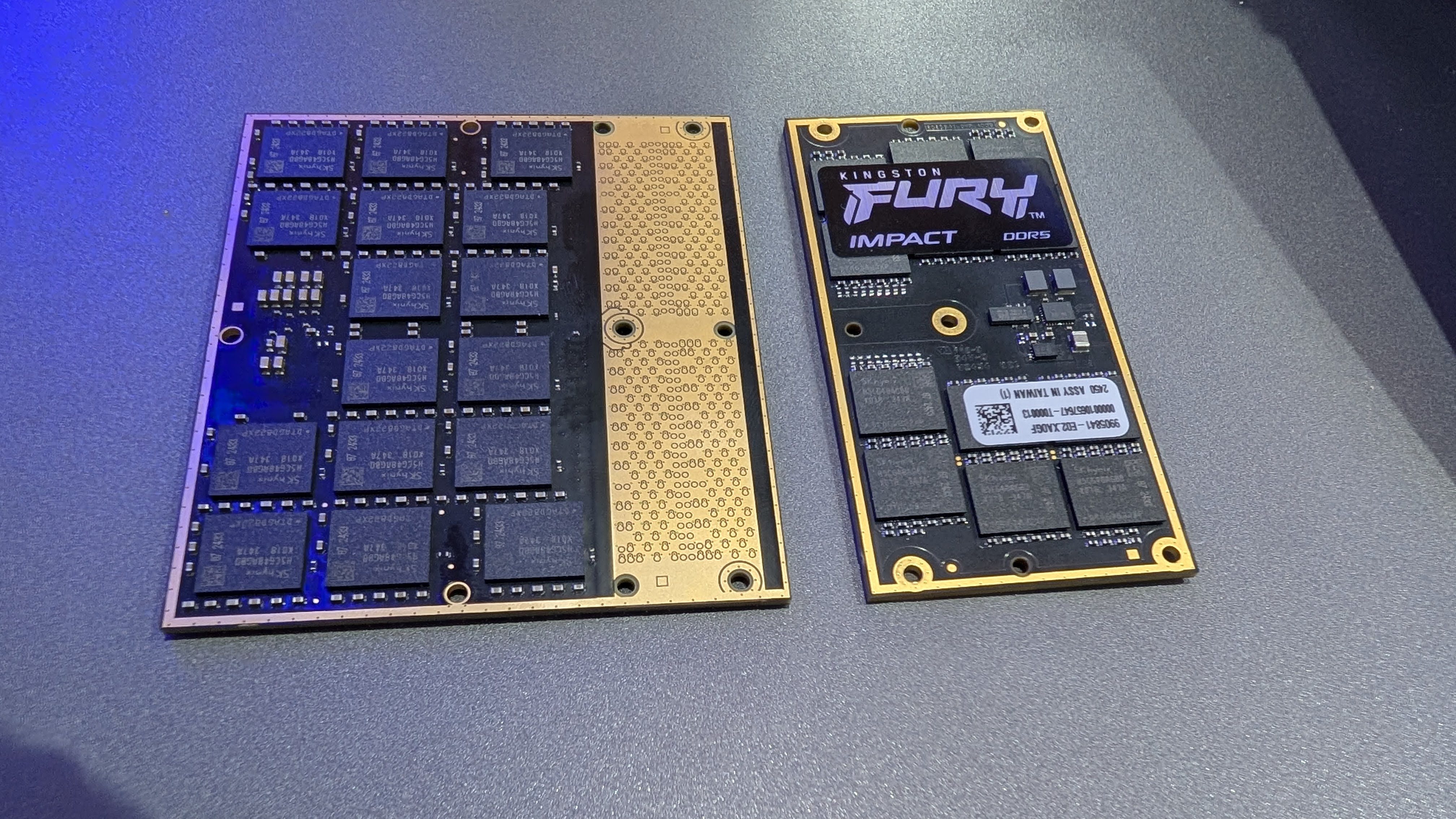
Kingston was spread out over multiple hotel rooms this year, showing off high speed storage and RAM, plus a robot and a rocket to showcase industrial uses of their enterprise products.
Kingston launched its new Fury Renegade G5 PCIe 5.0 SSD that can hit read speeds up to 14,800 MB/s (plus the similar DC3000ME PCIe 5.0 U.2 SSD aimed at enterprise use), as well as new DDR5 CUDIMM modules rated at 8,800 MT/s. They also debuted Fury Impact DDR5 CAMM2 modules, offering up to 128GB for laptops and mobile workstations. And while CAMM2 still isn’t mainstream, this was our first time seeing the 128GB high-capacity modules in the flesh.
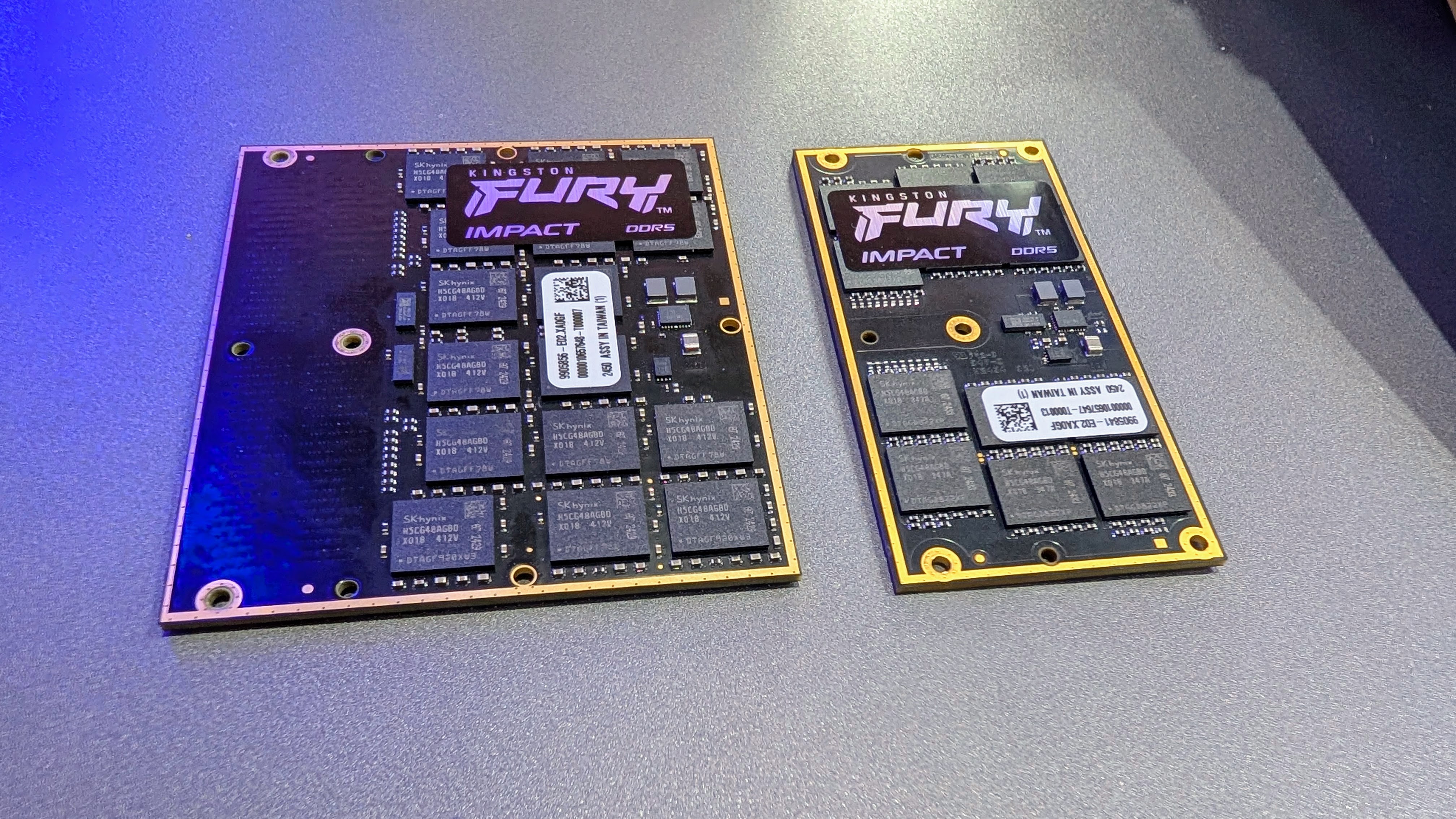
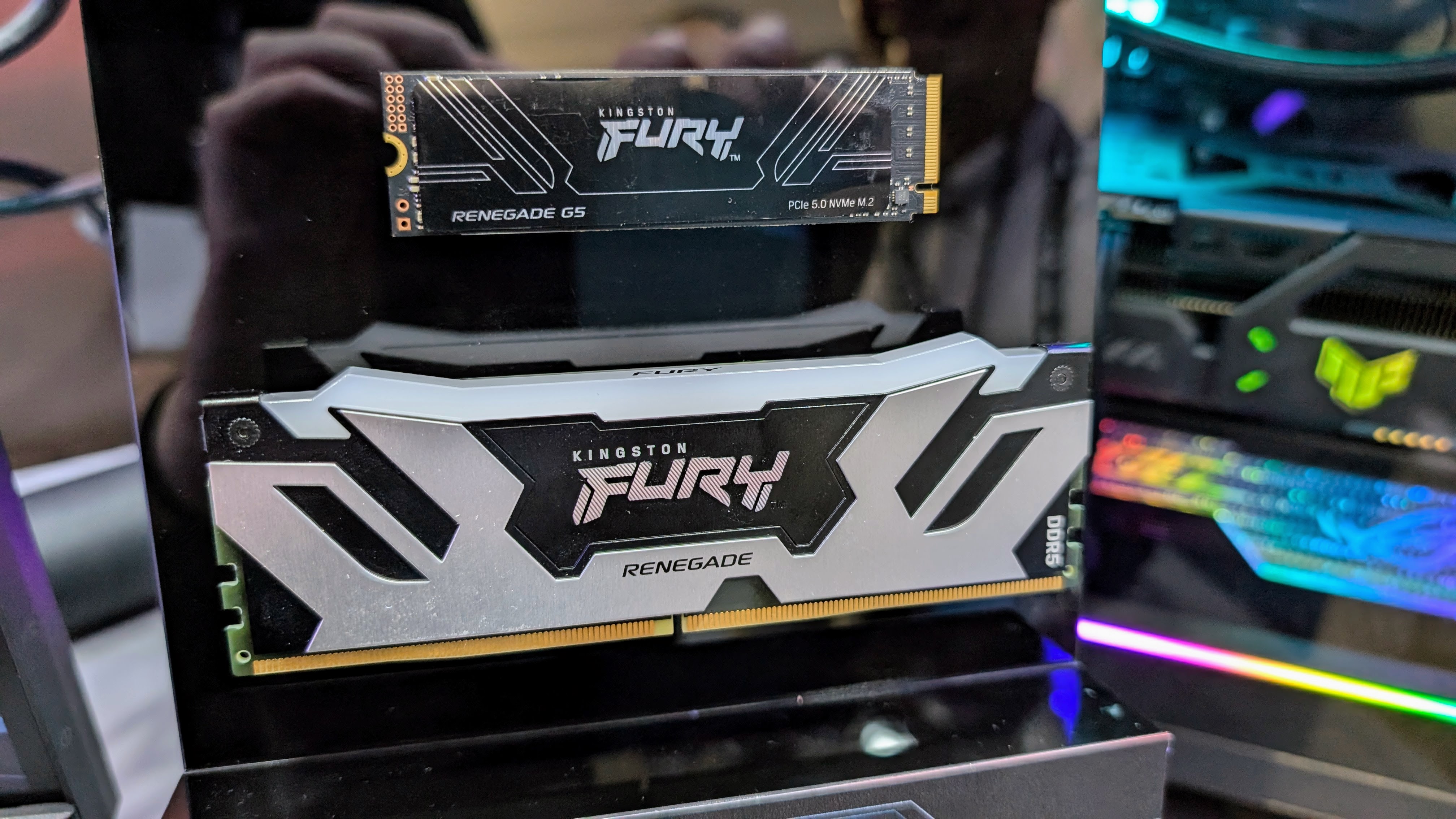
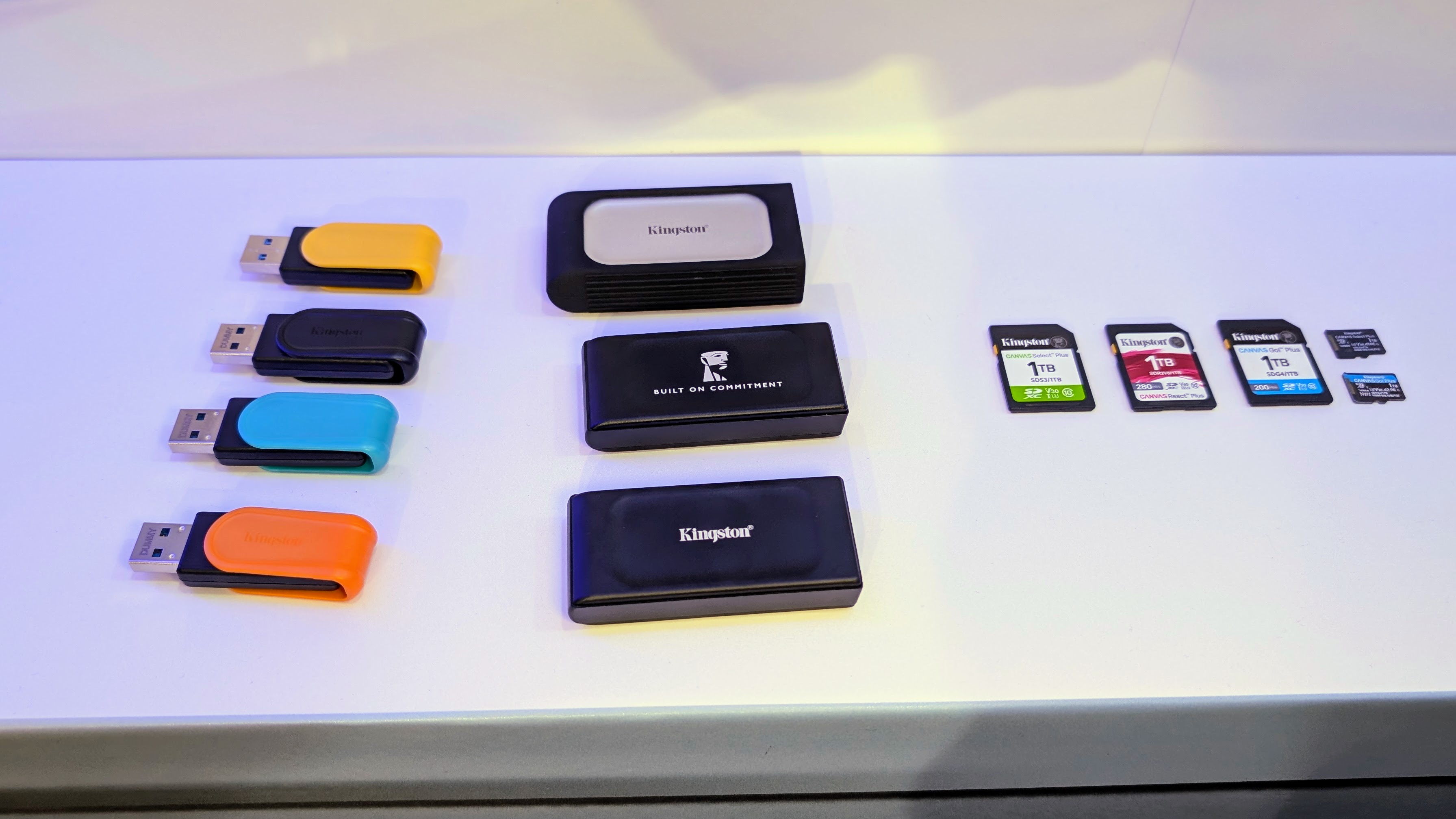
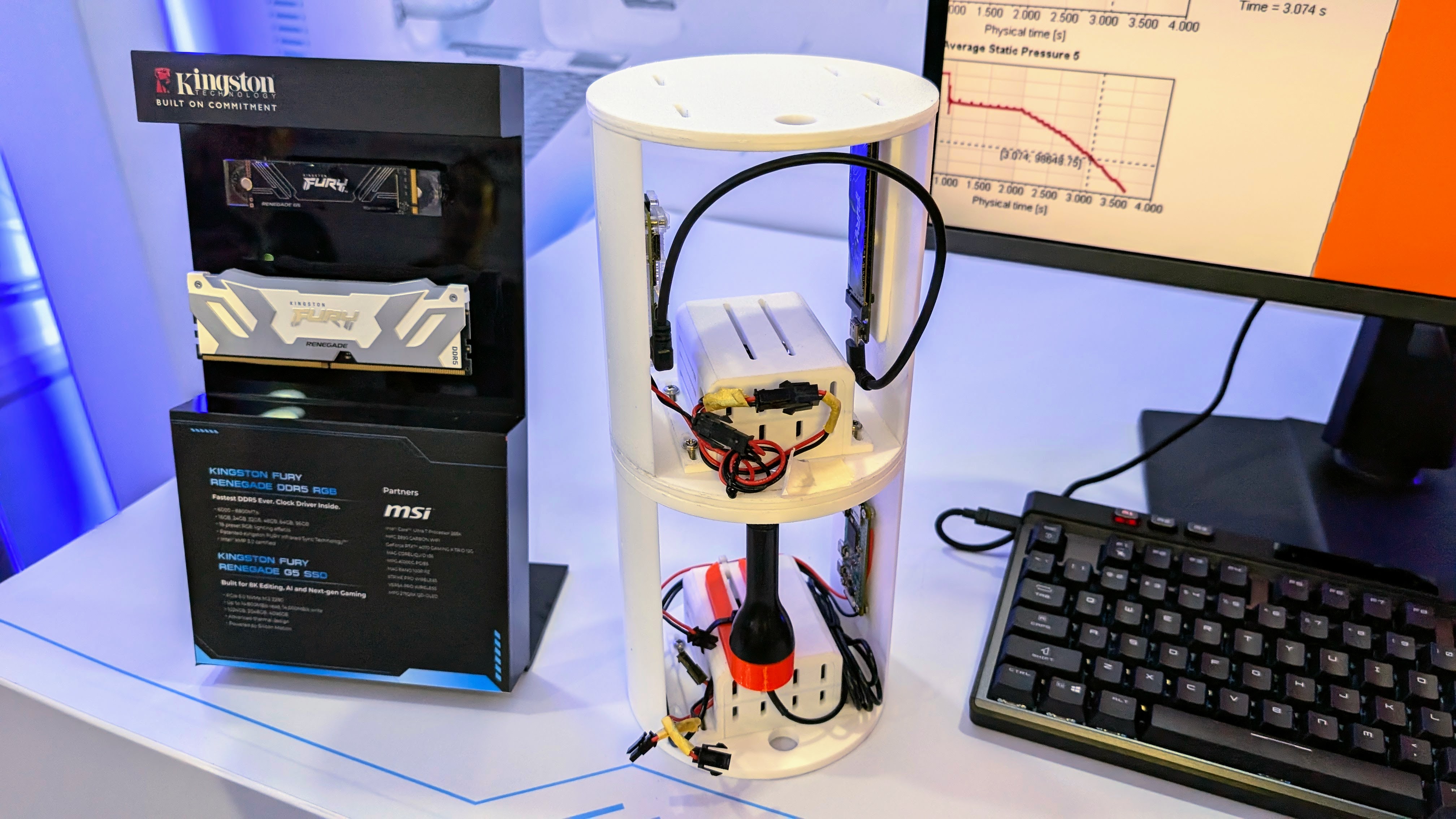
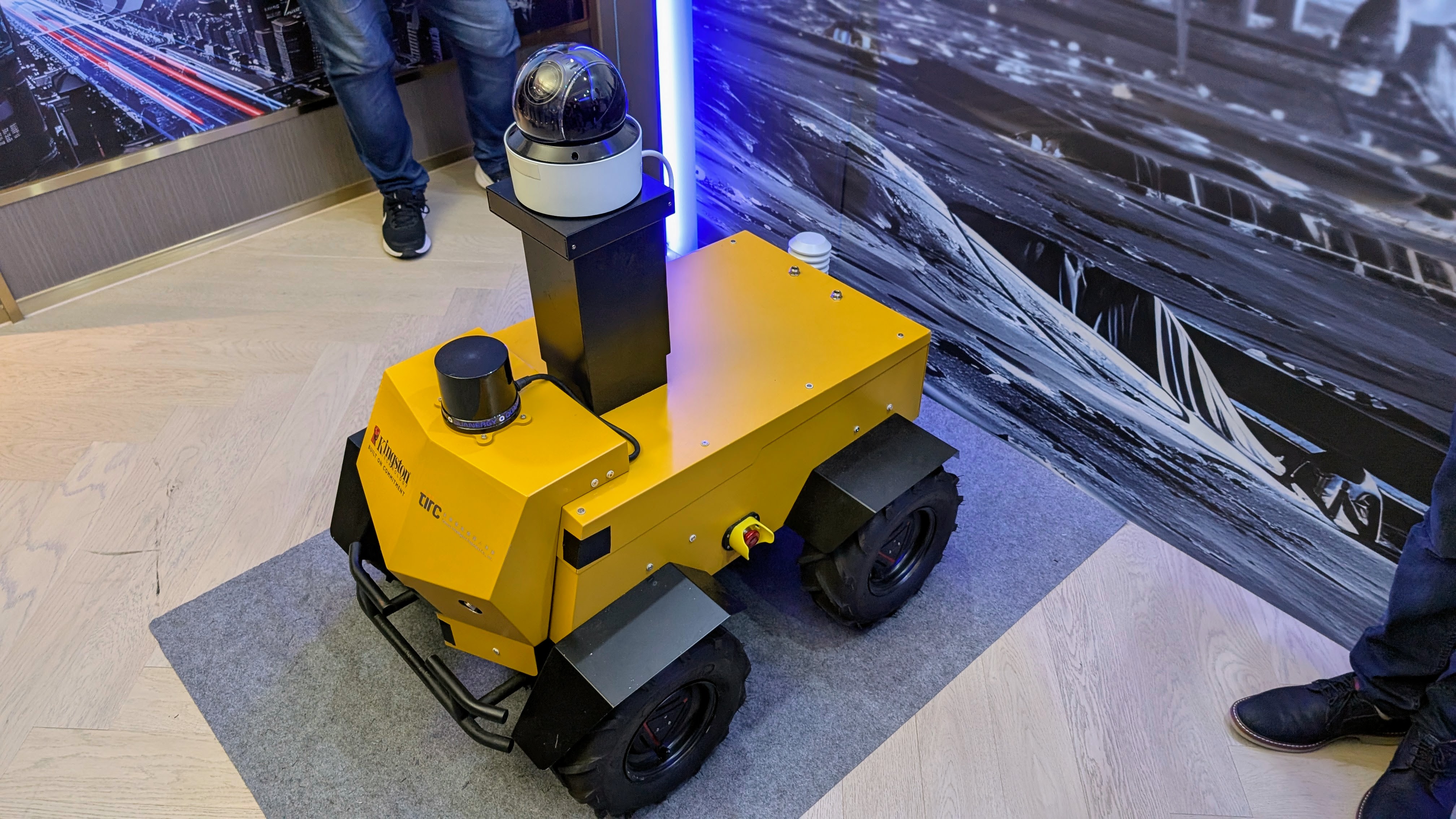
Kingston introduced the DataTraveler Exodia S USB drive, which isn’t super fast but is available up to 512GB, and refreshed its Canvas Plus SD and microSD cards. While not setting any performance records, it was nice to see some products that aim to be a bit more affordable.
Micron shows off next-gen speed and technology
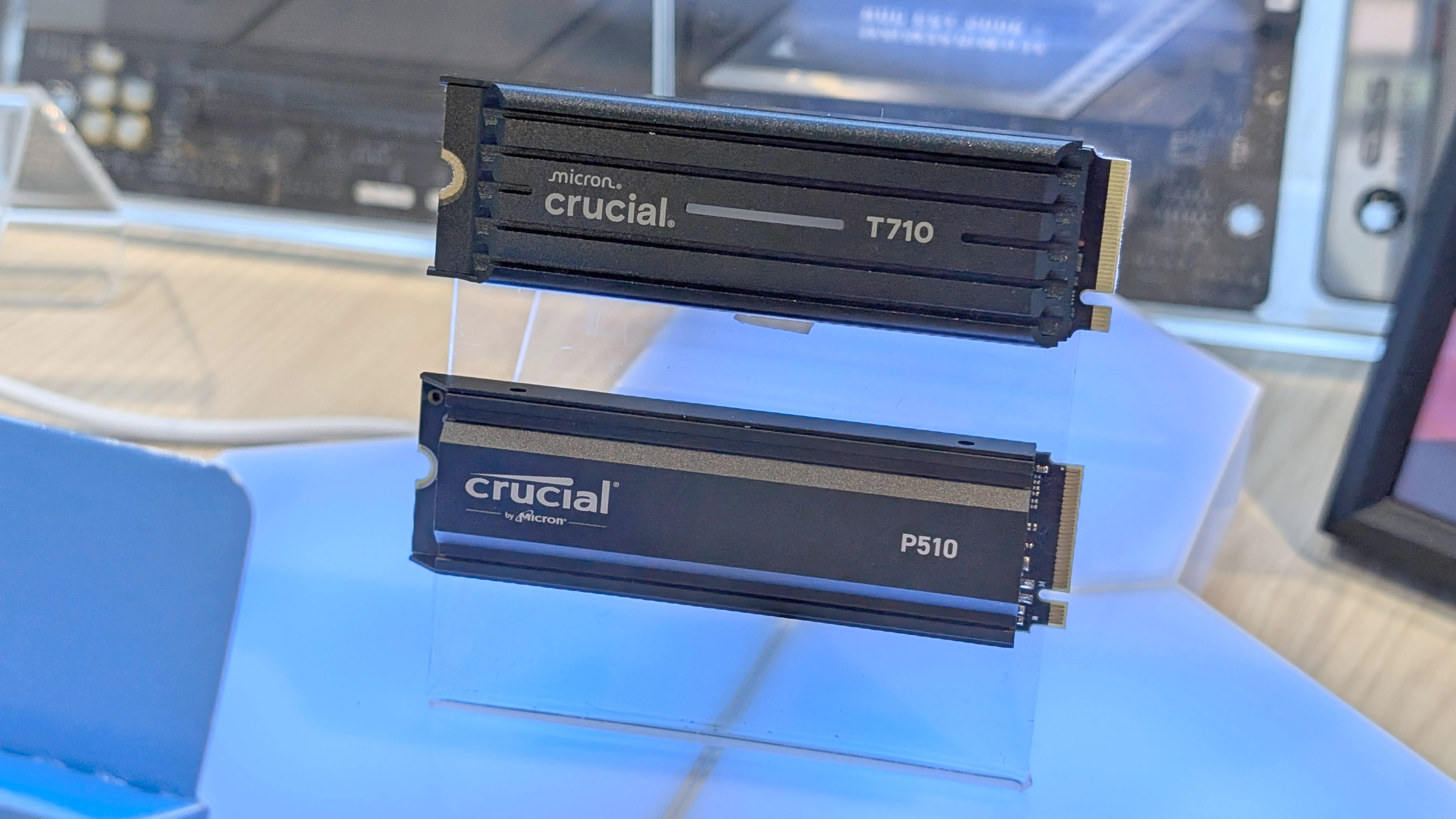
This year, Micron gave us a one-on-one showcase of next-gen SSDs, rugged portable storage, and compact memory modules. Micron stands out as one of the few full-stack memory producers, designing and manufacturing DRAM, NAND, and storage from the wafer up.
The new Crucial T710 was our favourite – a PCIe Gen5 NVMe SSD built with Micron’s 276-layer TLC NAND and the SM2508 controller. It promises impressive read speeds up to 14.9 GB/s and write speeds up to 13.8 GB/s, with capacities reaching 4TB.
We also had a play with the new Crucial X10 portable SSD – rated for 2.1 GB/s over USB 3.2 Gen 2×2 and available up to an impressive 8TB size.
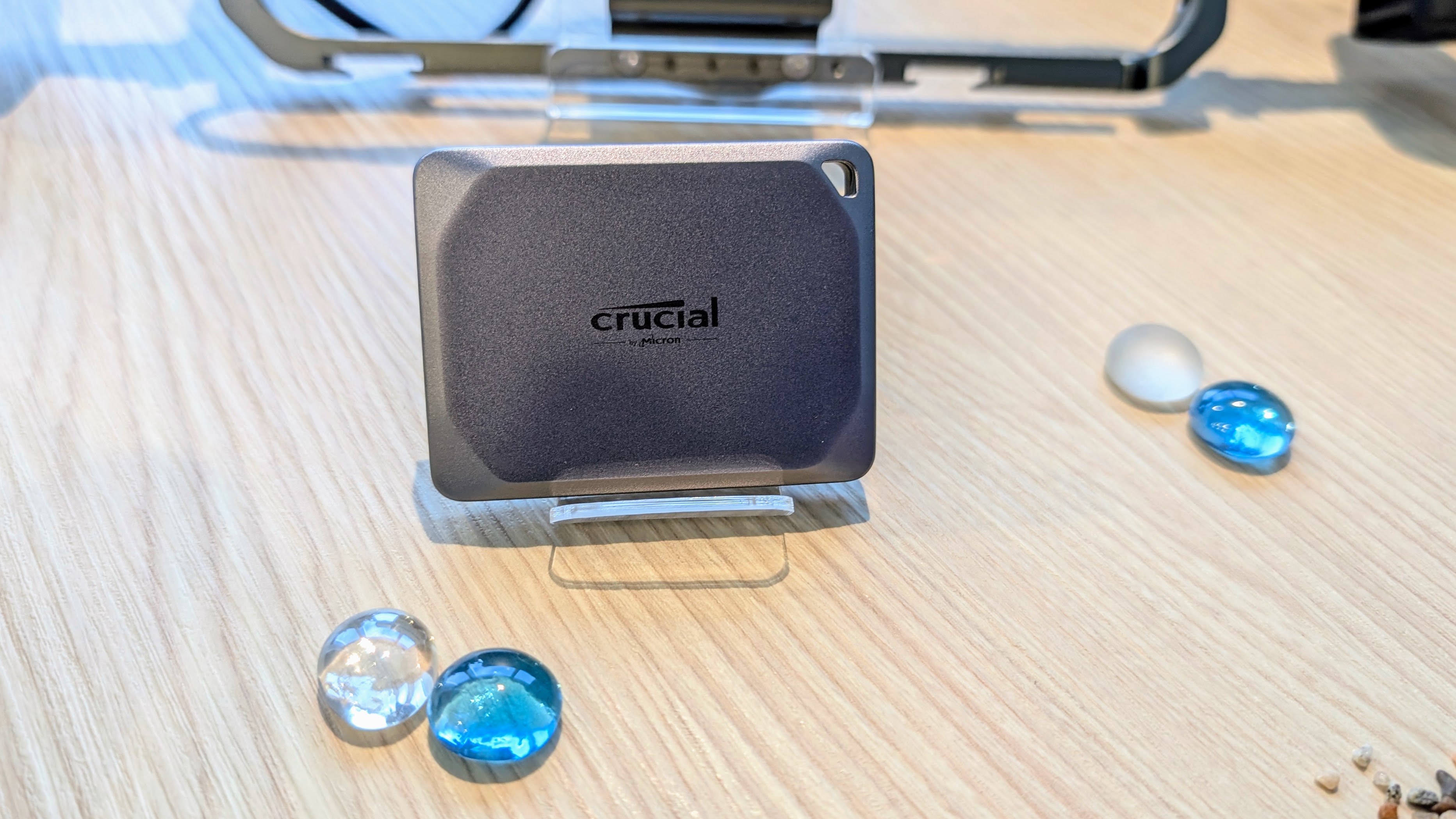
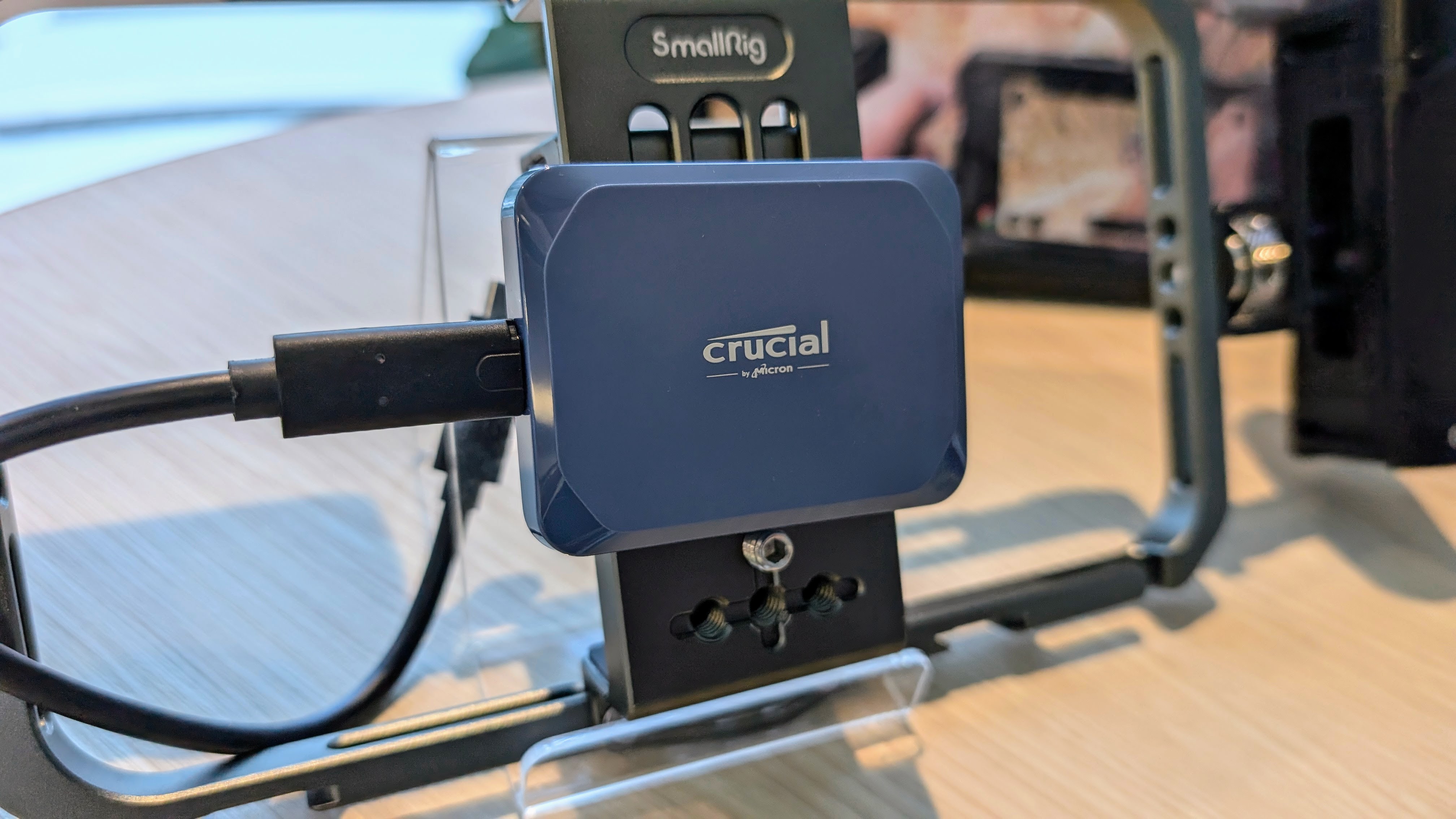
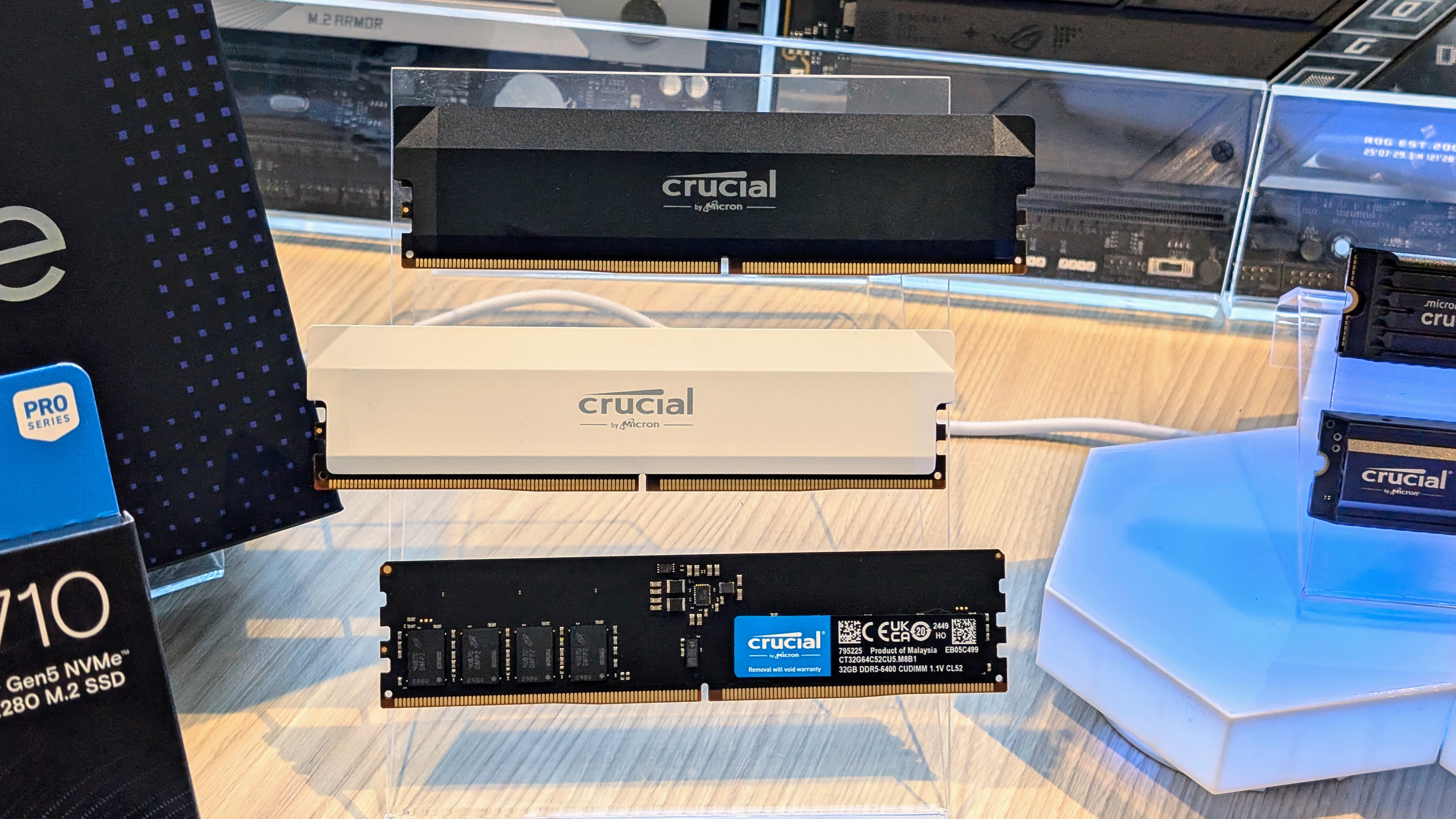

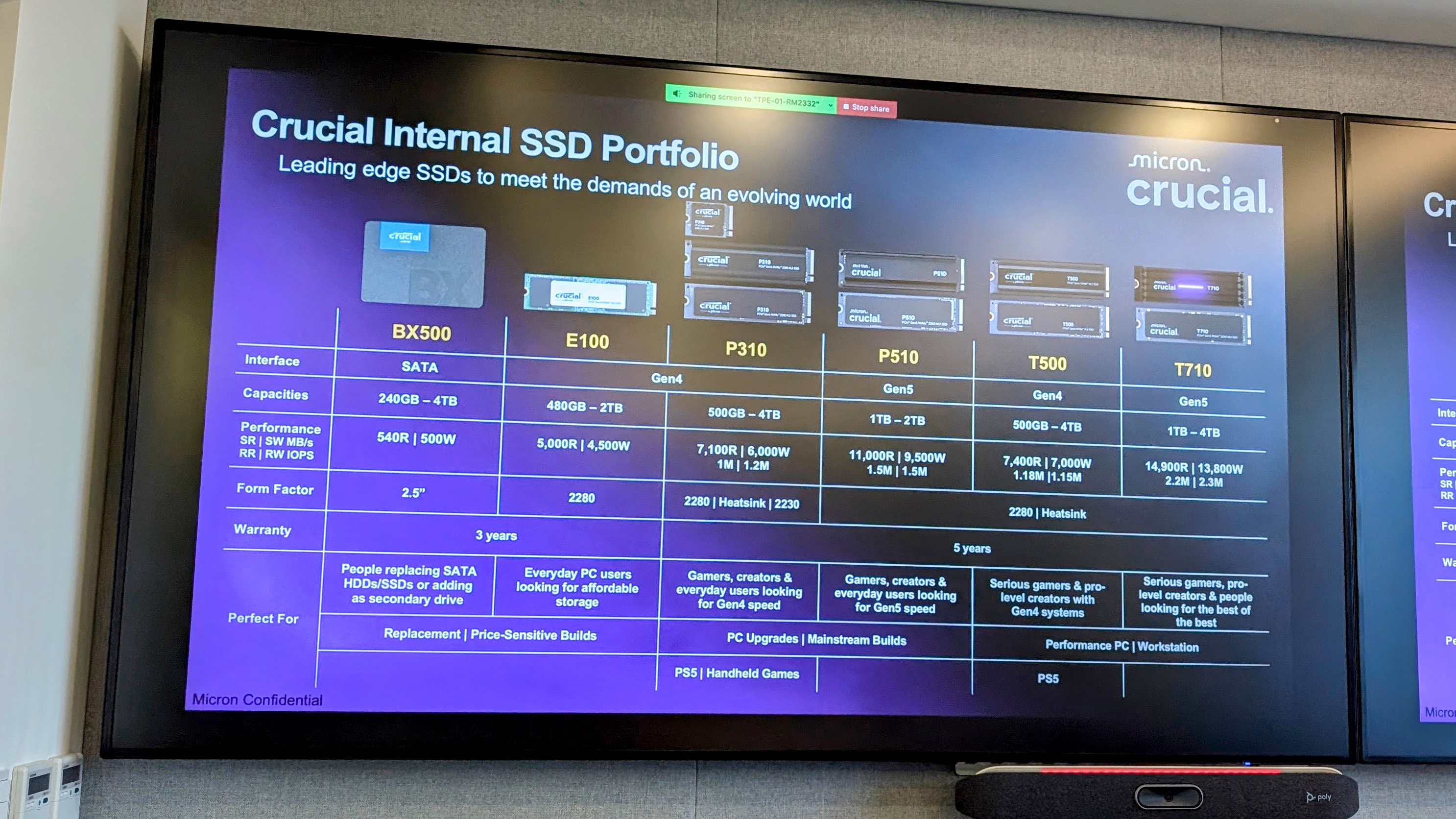
While not yet available for consumers, Micron also had LPCAMM2 memory modules showcasing what might be next for compact laptops, plus a very cool PCIe 6.0 SSD prototype capable of 30.25 GB/s throughput.
Adata showcases speed, screens and serious storage

Adata had a big stand this year, focused on AI-ready storage, high-speed memory, and small but mighty gaming gear.
From its gaming brand XPG, the standout to us was the Mars 980 M.2 SSD with a Silicon Motion SM2508 controller. It reportedly hits read speeds up to 14,000 MB per second and writes up to 13,000 MB per second. You can cool it with air, liquid, or leave it bare if feeling adventurous.
We have a certain fondness for fast portable storage, like Adata’s Project Titan – a Thunderbolt 5 external SSD with 6,000 MB/s speeds and DisplayPort out.

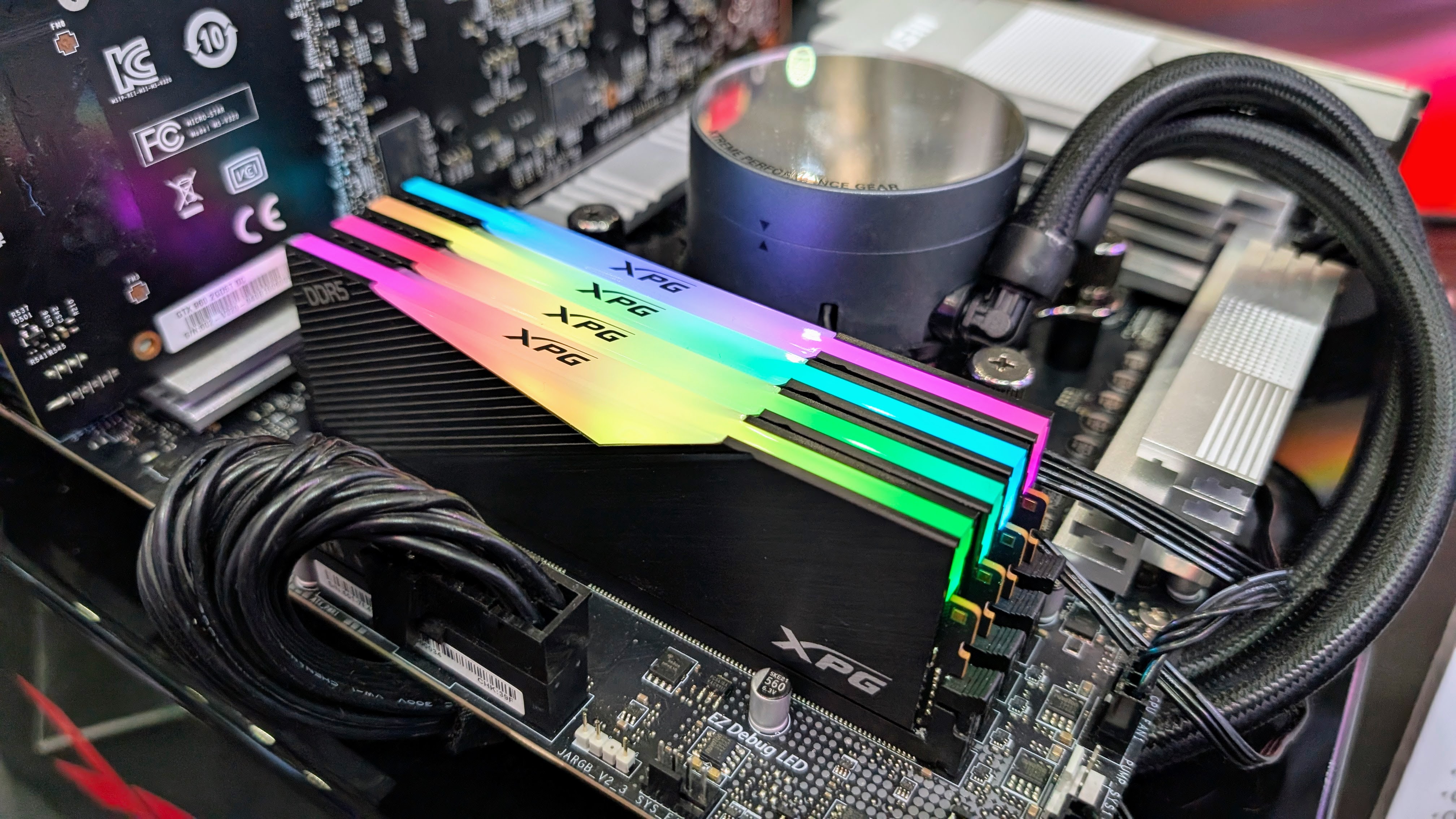
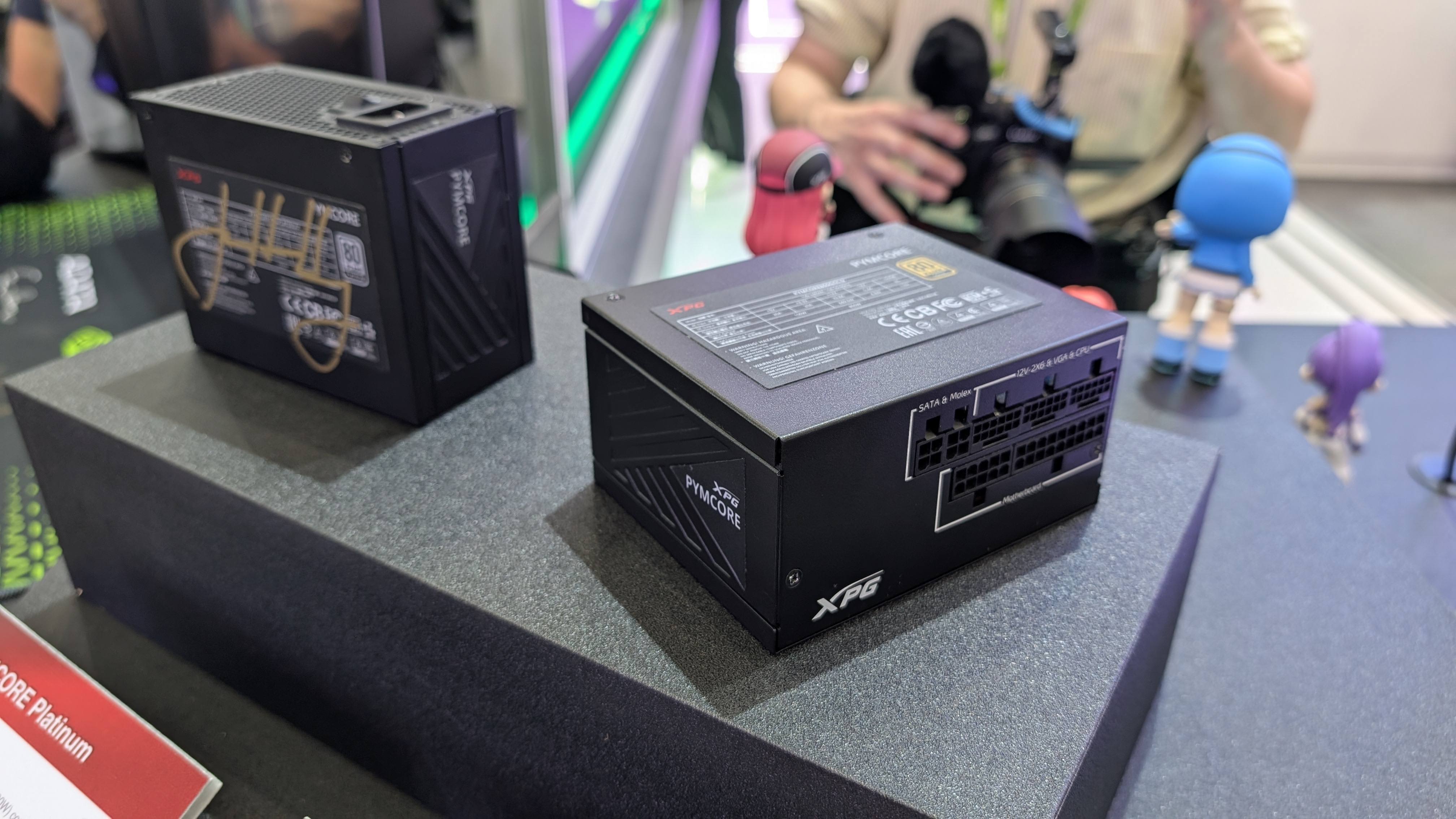

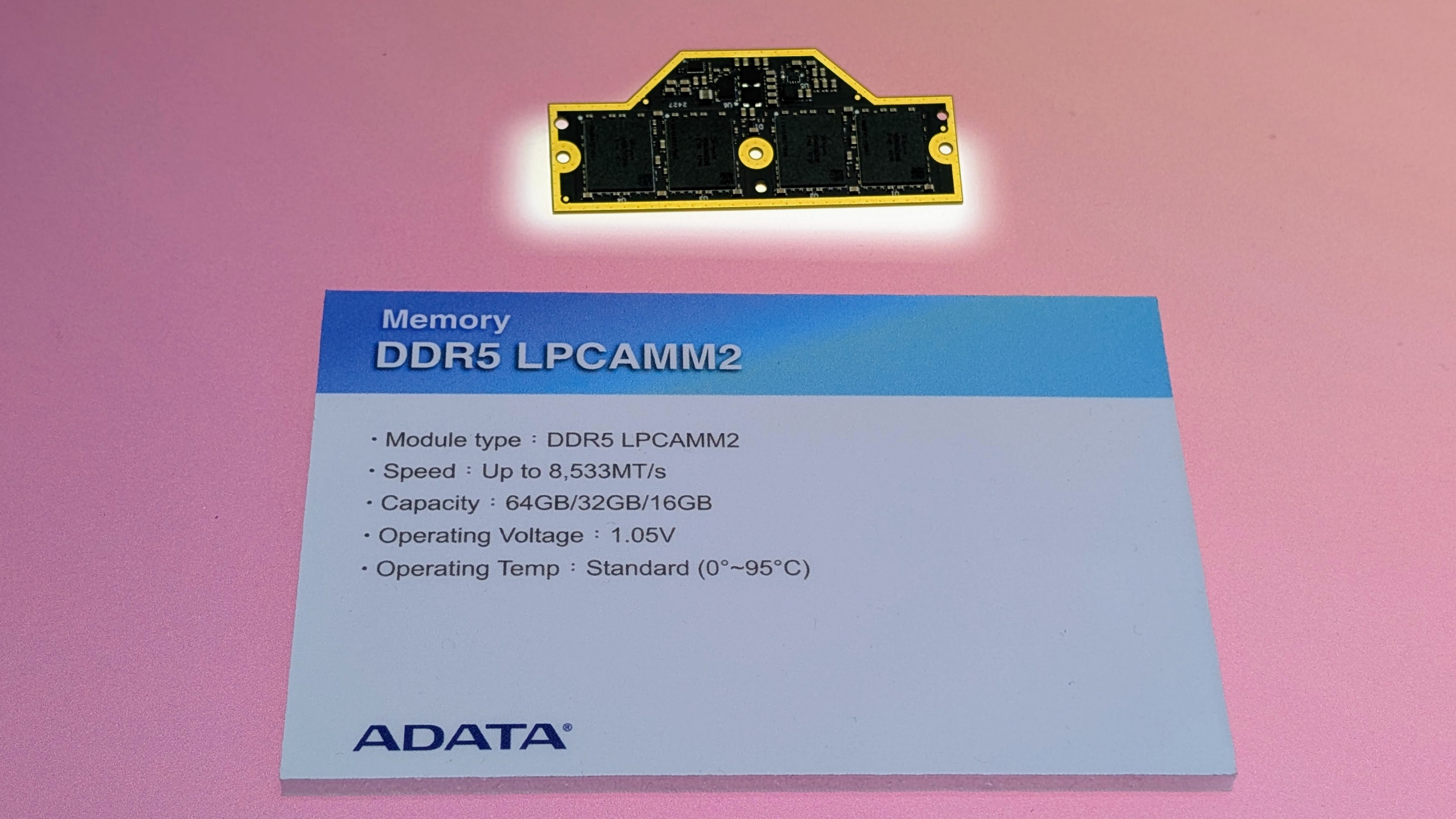
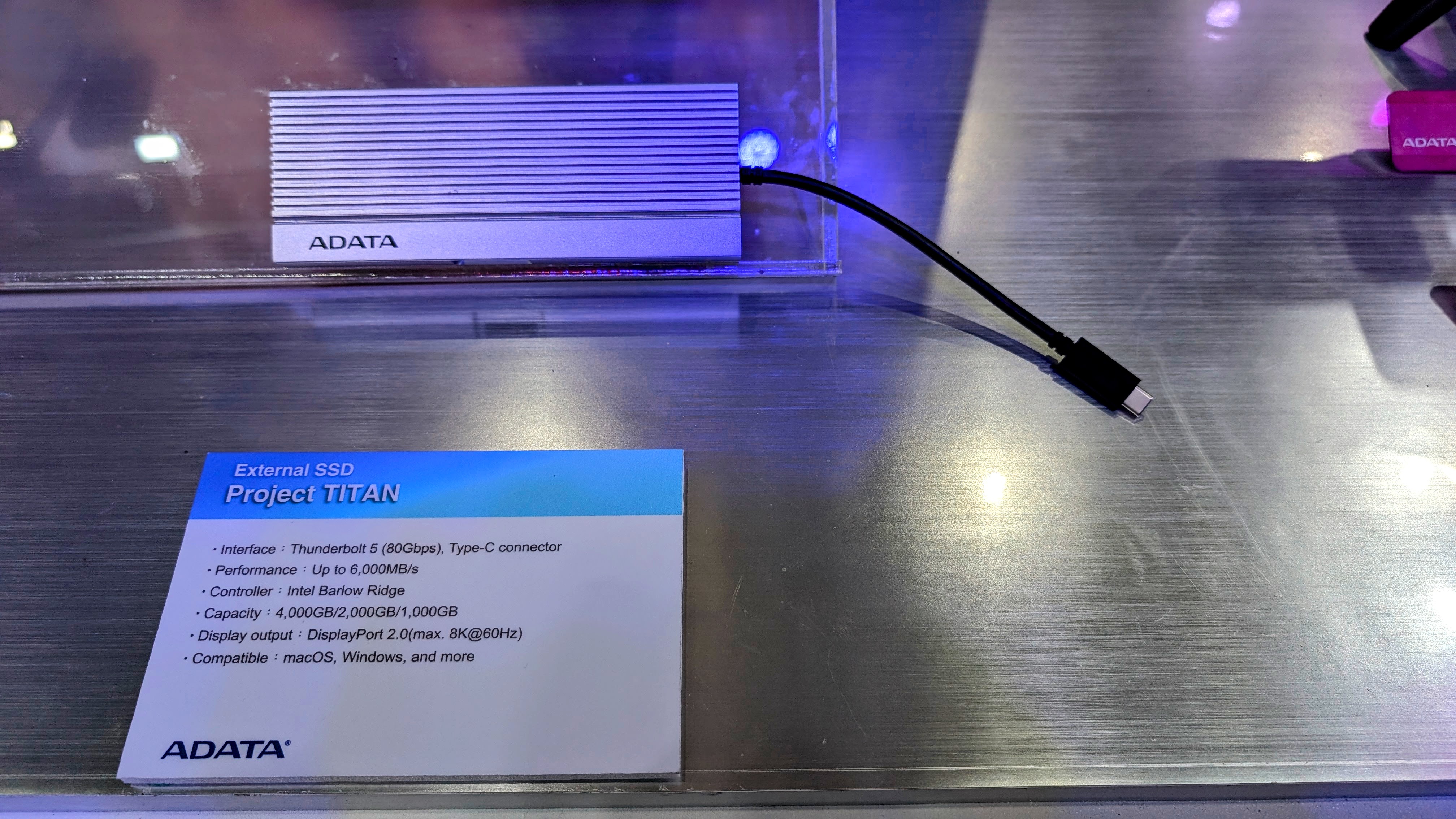
Adata also launched Trusta Gen5 SSDs and DDR5 LPCAMM2 memory, though you shouldn’t expect it in your next laptop or system any time soon, as it’s aiming squarely at AI PCs and next-gen enterprise storage.
The XPG cooling lineup includes Levante View AIOs with the obligatory LCD screens, plus decent looking air coolers like the Maestro Plus. It had been a long day, but sadly we couldn't grab a nap in the comfy looking Nexus Plus gaming chair.
be quiet! shows off sleek new coolers, PSUs and gaming gear

be quiet! made some serious noise at Computex 2025, though quietly of course. The German company rolled out new coolers, refined power supplies, and made its first move into the peripherals space with gaming mice and mechanical keyboards.
The updated Pure Power 13 M series looks like everything one could want in a non-ostentatious PSU, with full ATX 3.1 compliance, native PCIe 5.1 support, and wattages from 550W to 1000W. These modular power supplies use a semi-passive 120 mm fan for near-silent operation, deliver 80 PLUS Gold efficiency, and come with a 10-year warranty.
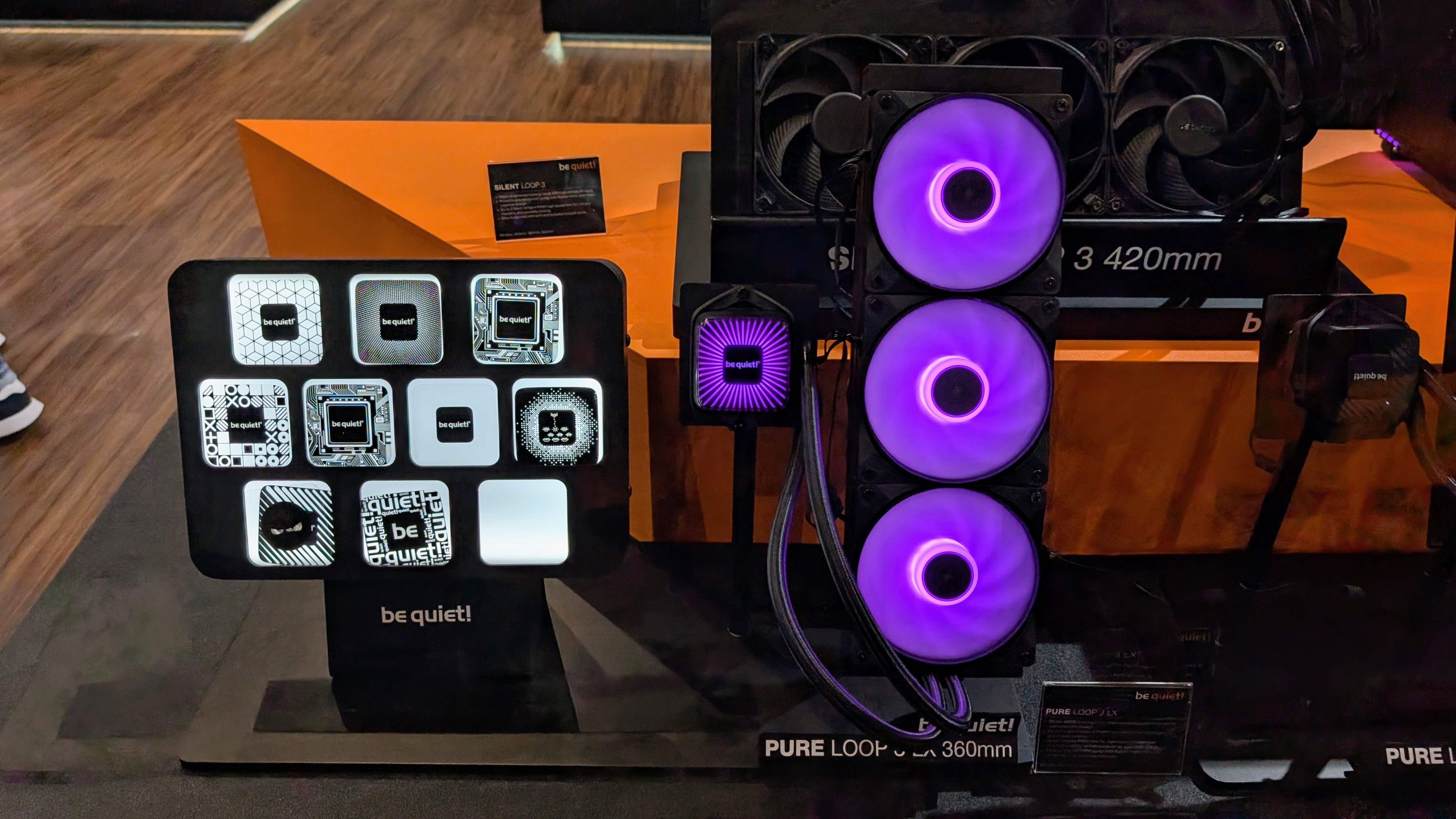
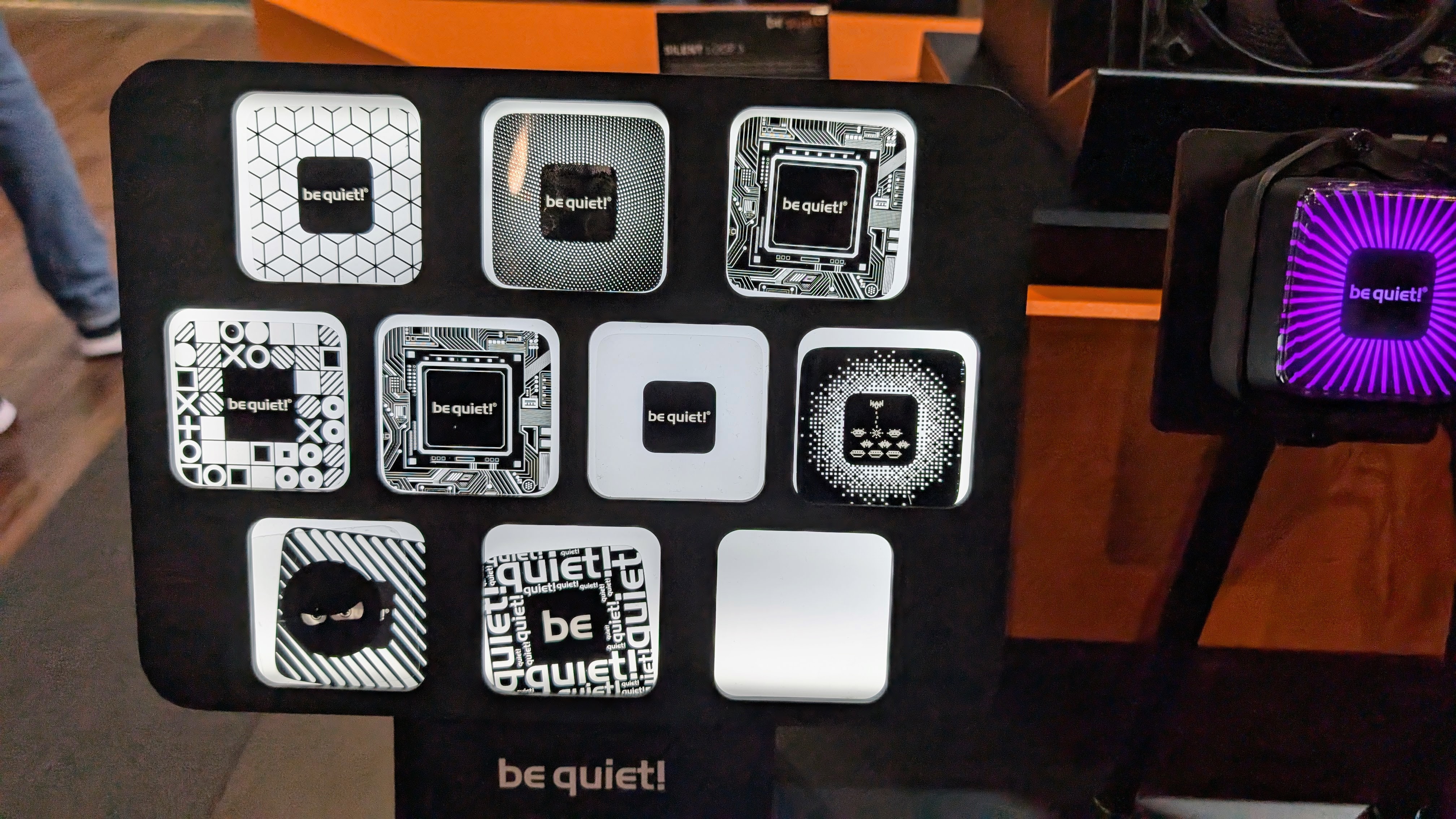
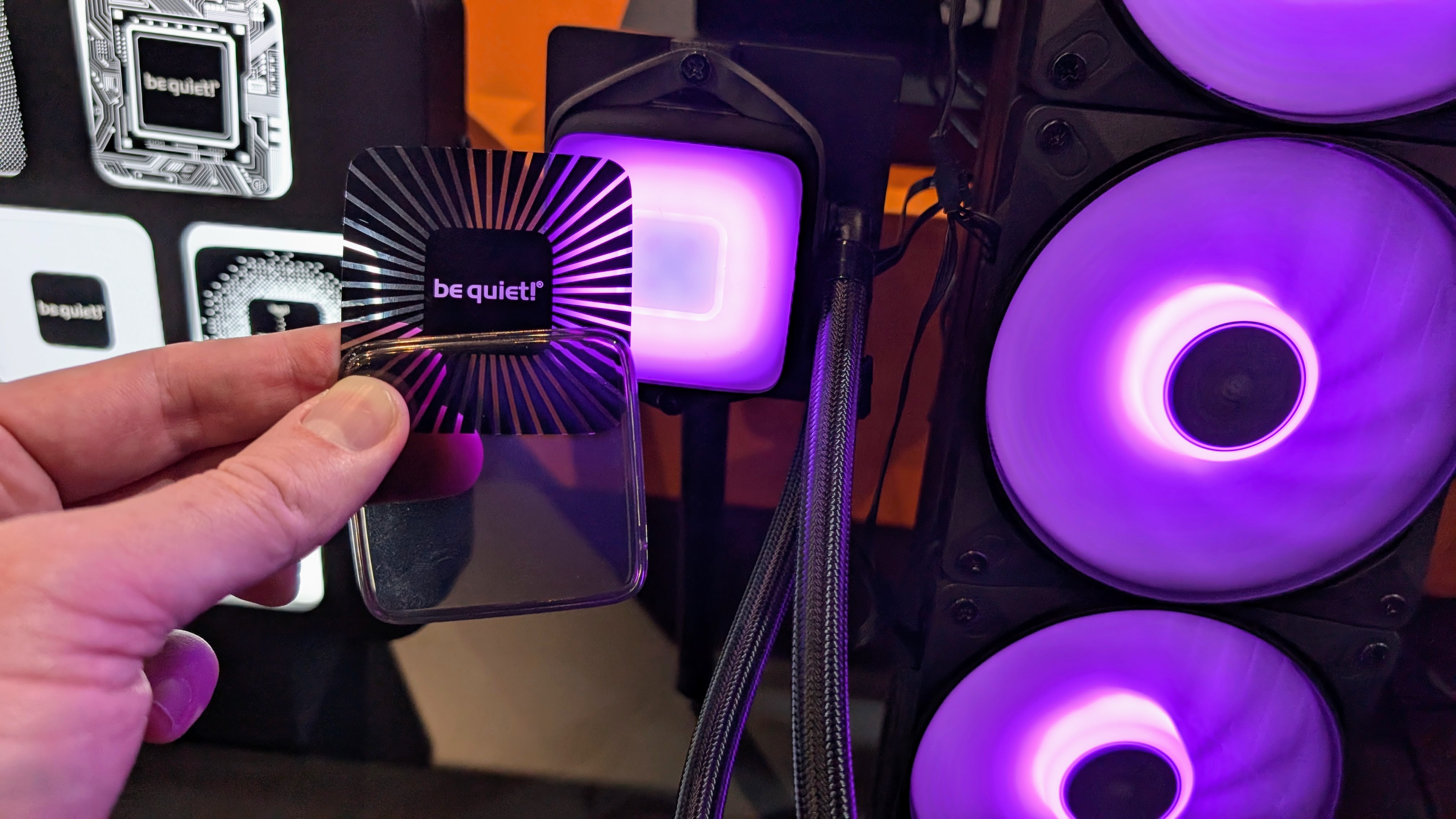
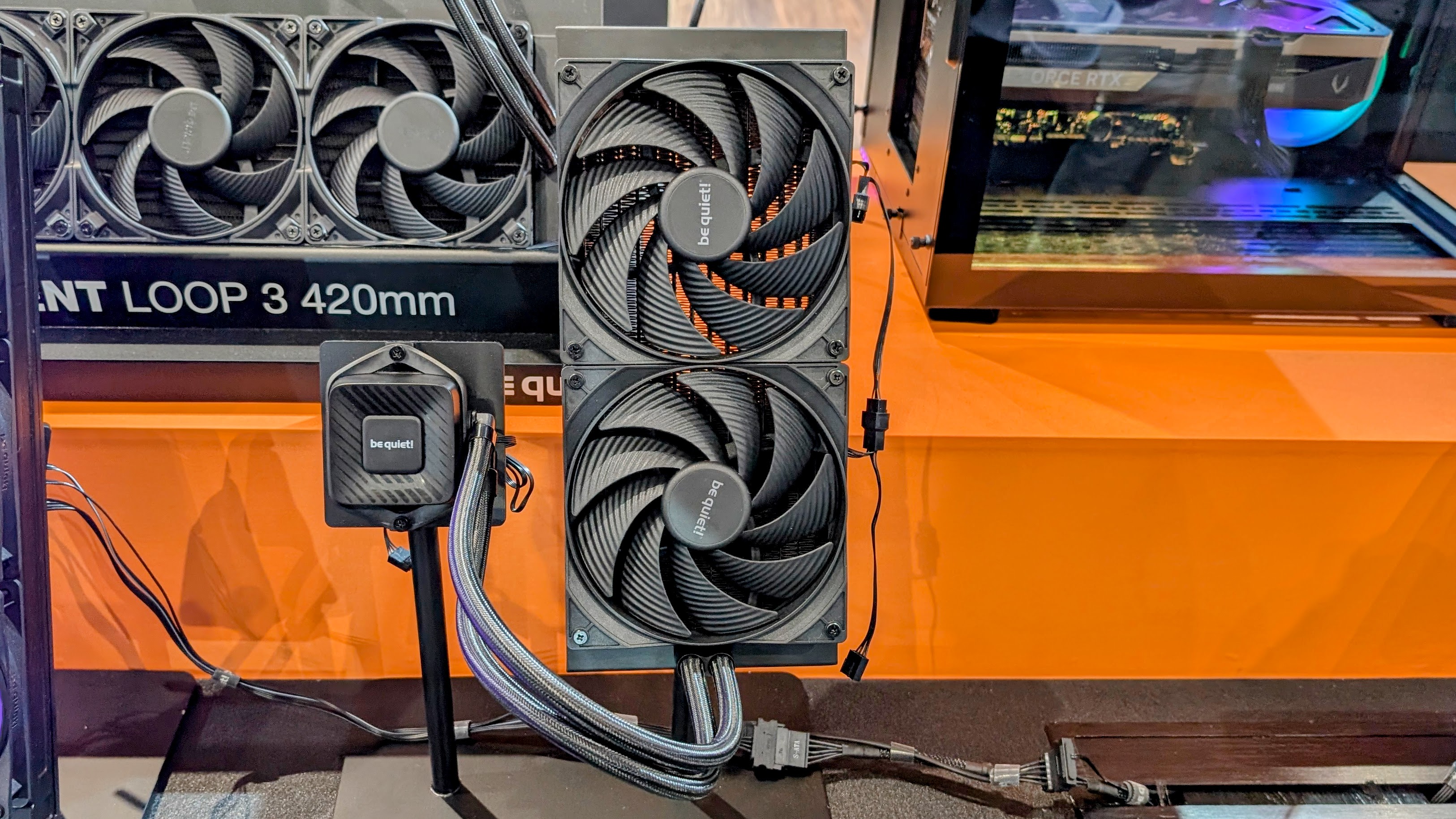
Cooling gets a level up too. The new Pure Loop 3 all-in-one coolers focus on quiet performance with Pure Wings 3 fans and wide socket support for Intel and AMD. The higher-end Pure Loop 3 LX adds ARGB lighting, a 6-pole motor pump, and Light Wings LX fans, with radiators available up to 420 mm. And amazingly, no integrated LCD – though the be quiet! boffins do say they plan to launch one in the future, once they can do it without it impacting the price too much.
At just 55 grams, the Dark Perk Ergo and Sym mice feel great in hand, and both have features like 32,000 DPI sensors, 8,000 Hz polling, and tactile optical switches. On the keyboard side, the Dark Mount and Light Mount offer silent mechanical switches (well, perhaps low noise rather than silent), per-key RGB and aluminium frames that leave them impressively solid.
Thermaltake’s Computex lineup covers gamers, modders, and sim racers
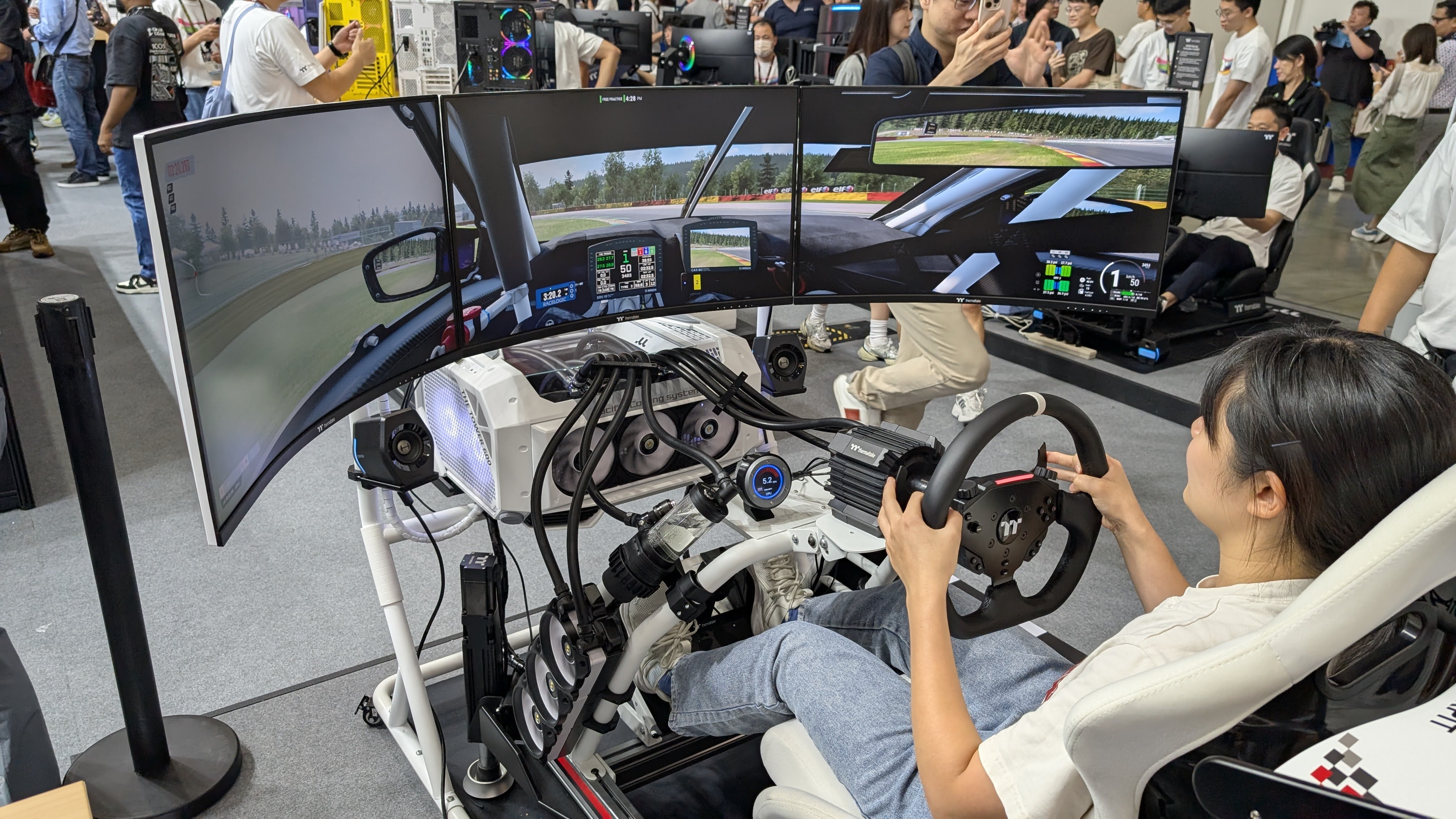
Thermaltake added the TR200 and TR300 cases to its compact lineup, building on the TR100 with roomier GPU support and better airflow. The Tower 600 brought an octagonal prism layout that fits long 420 mm AIOs and long graphics cards. More eye-catching were the TR100 and View 270 models in soft pastels and wood-accented finishes – a welcome change compared to the usual black, white, or bold primary colours. The TR100 even has a travel case to make your gaming PC more portable, because yes, LANning is still a thing.
Despite not being officially associated with Minecraft, the Minecube 360 Ultra AIO stole the spotlight at the Thermaltake booth, with a cube-shaped pump block and four 3.95-inch LCDs that can show stats, GIFs or whatever weird meme you like. Paired with Swafan EX12 ARGB fans, it’s both loud and proud, and we want one in our next build. We also liked that the new TS120 and TS140 EX RGB fans include temp sensors and magnetic cable connectors.
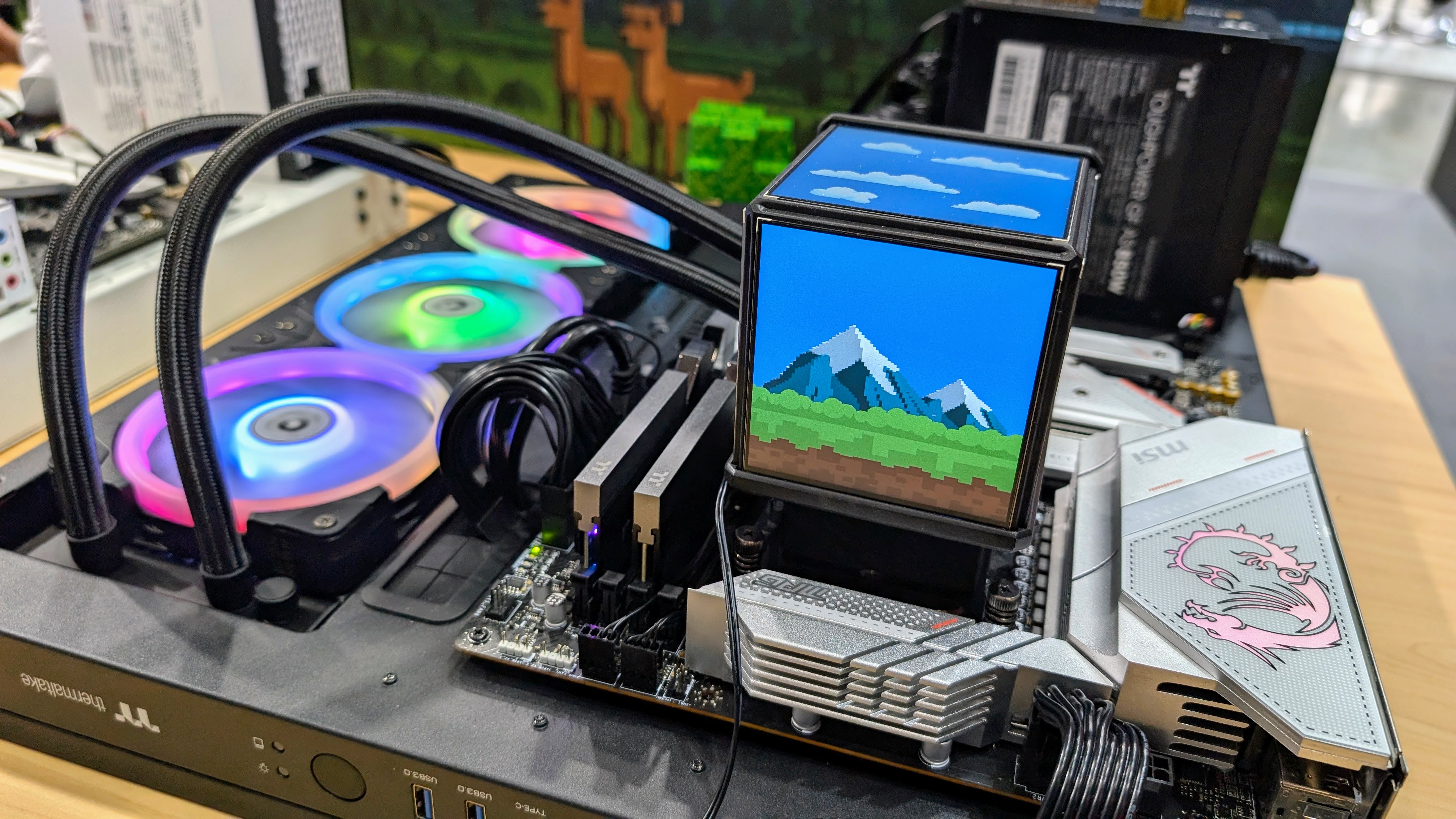
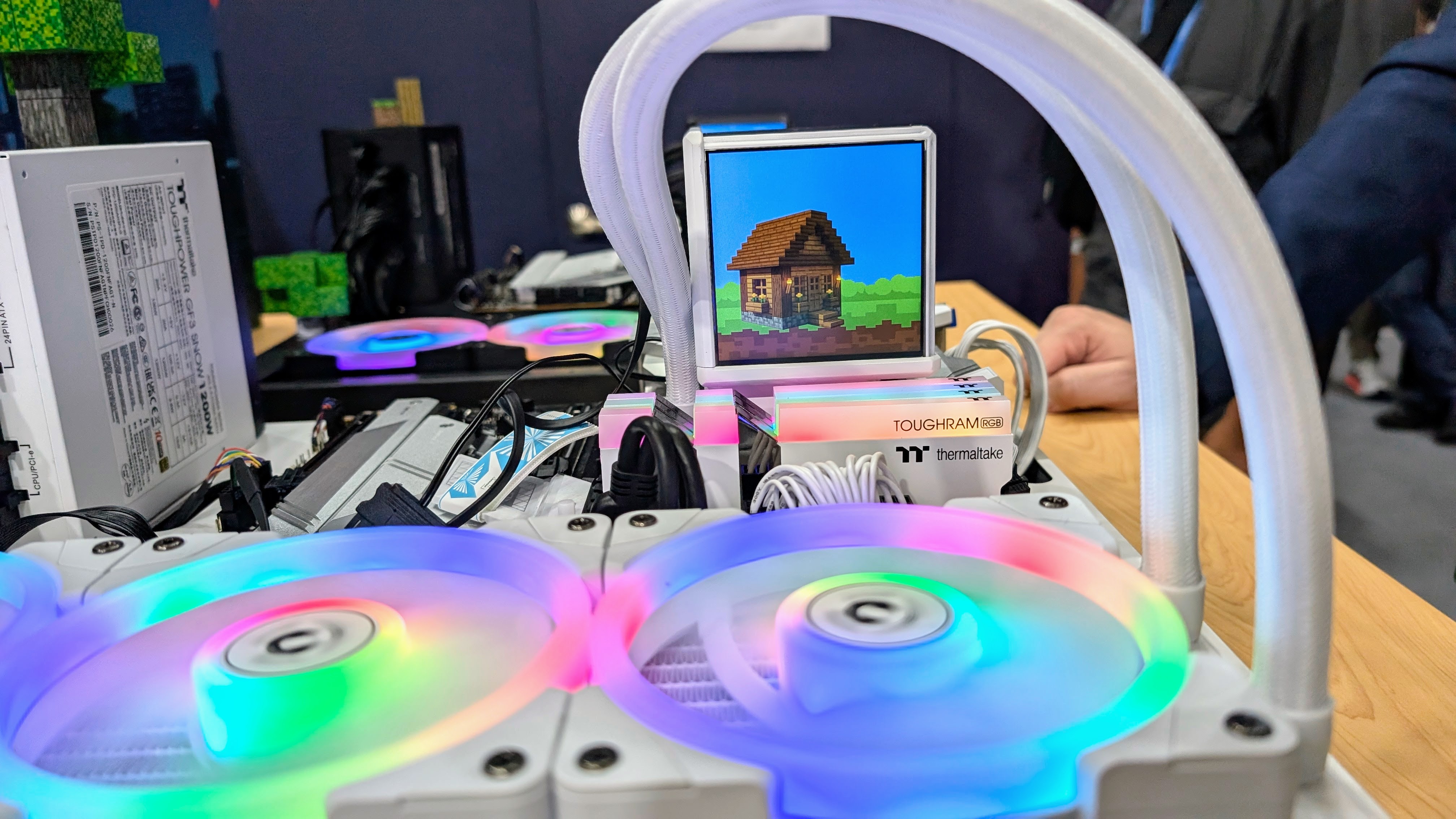
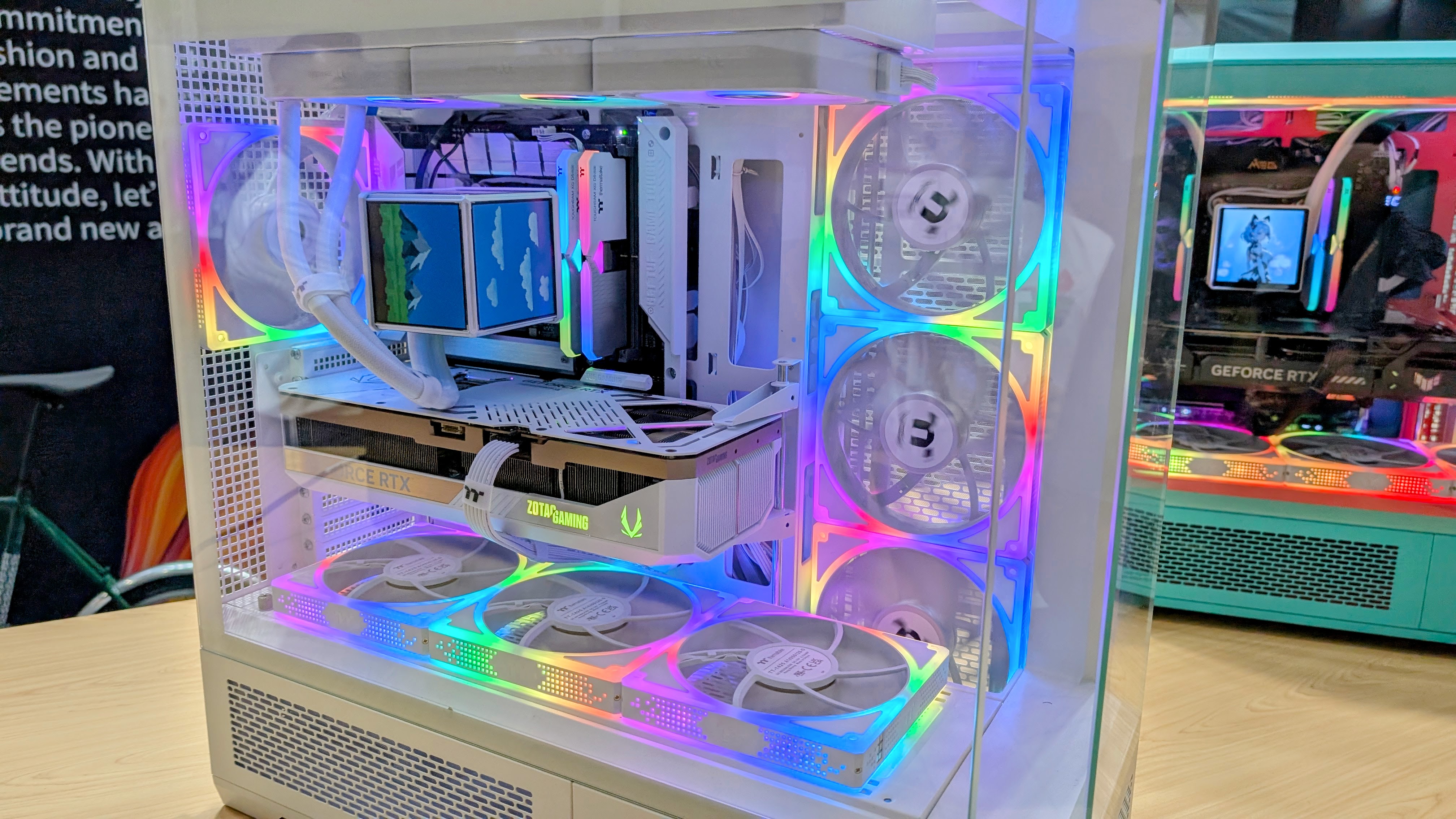


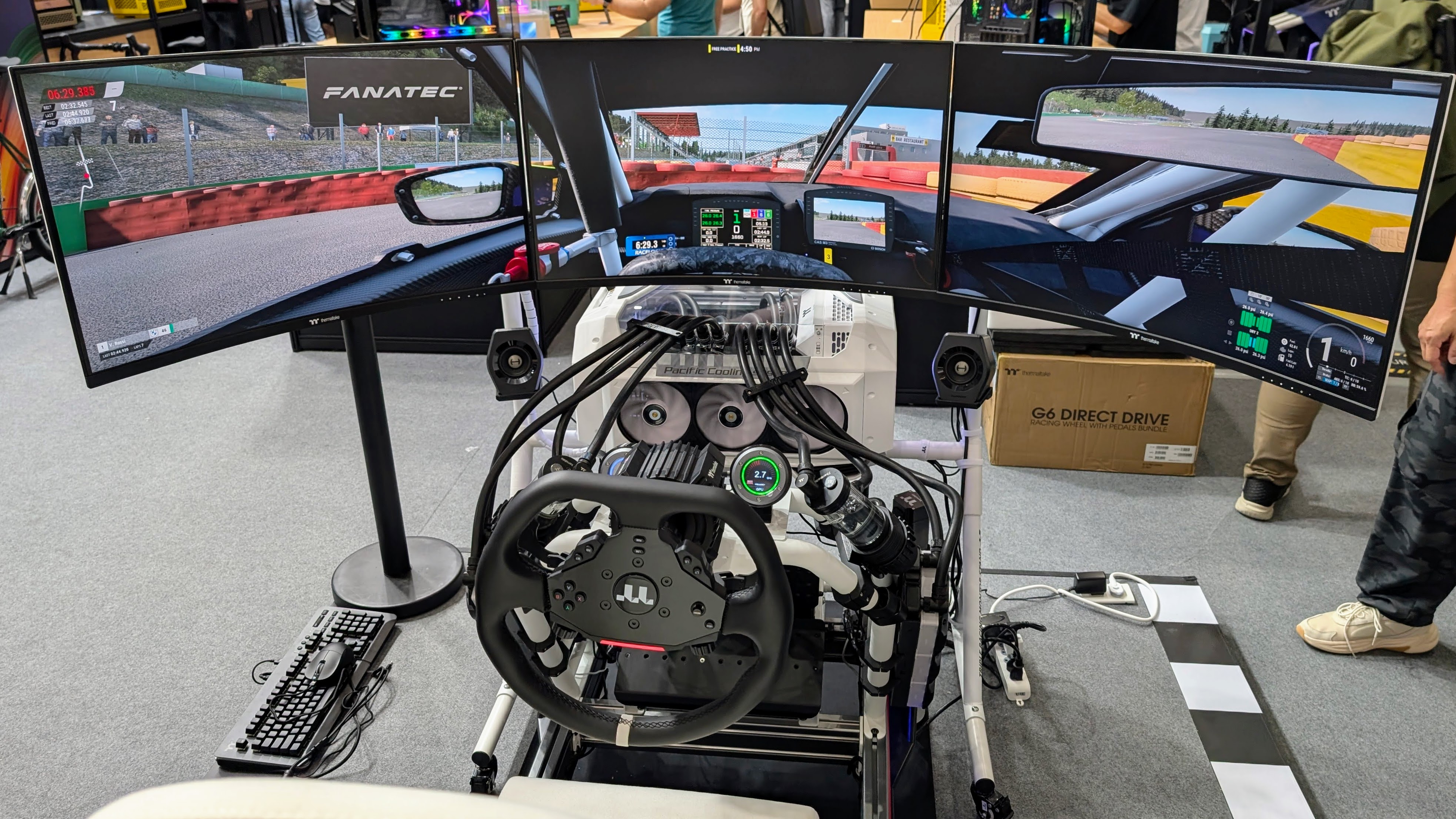

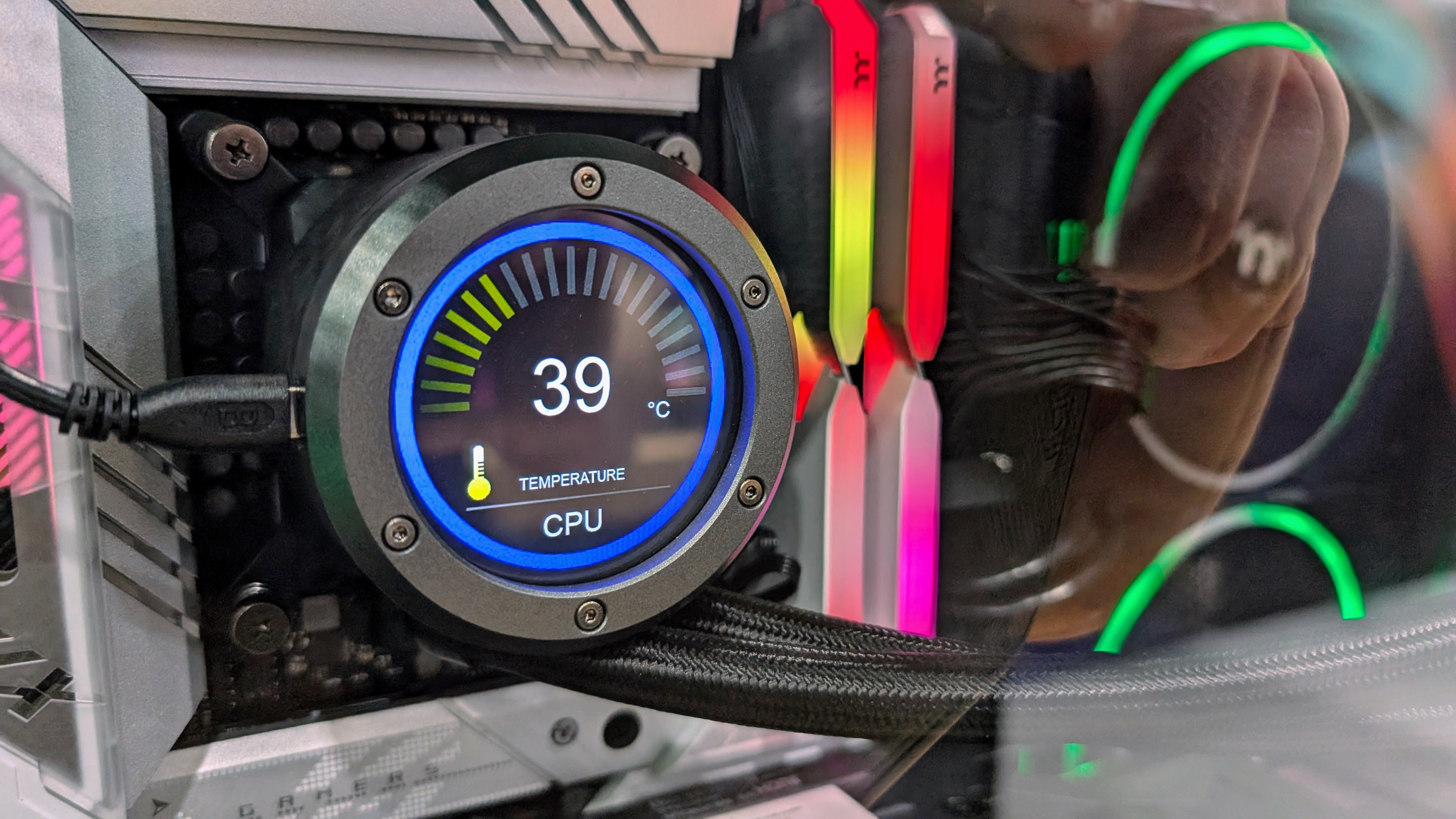
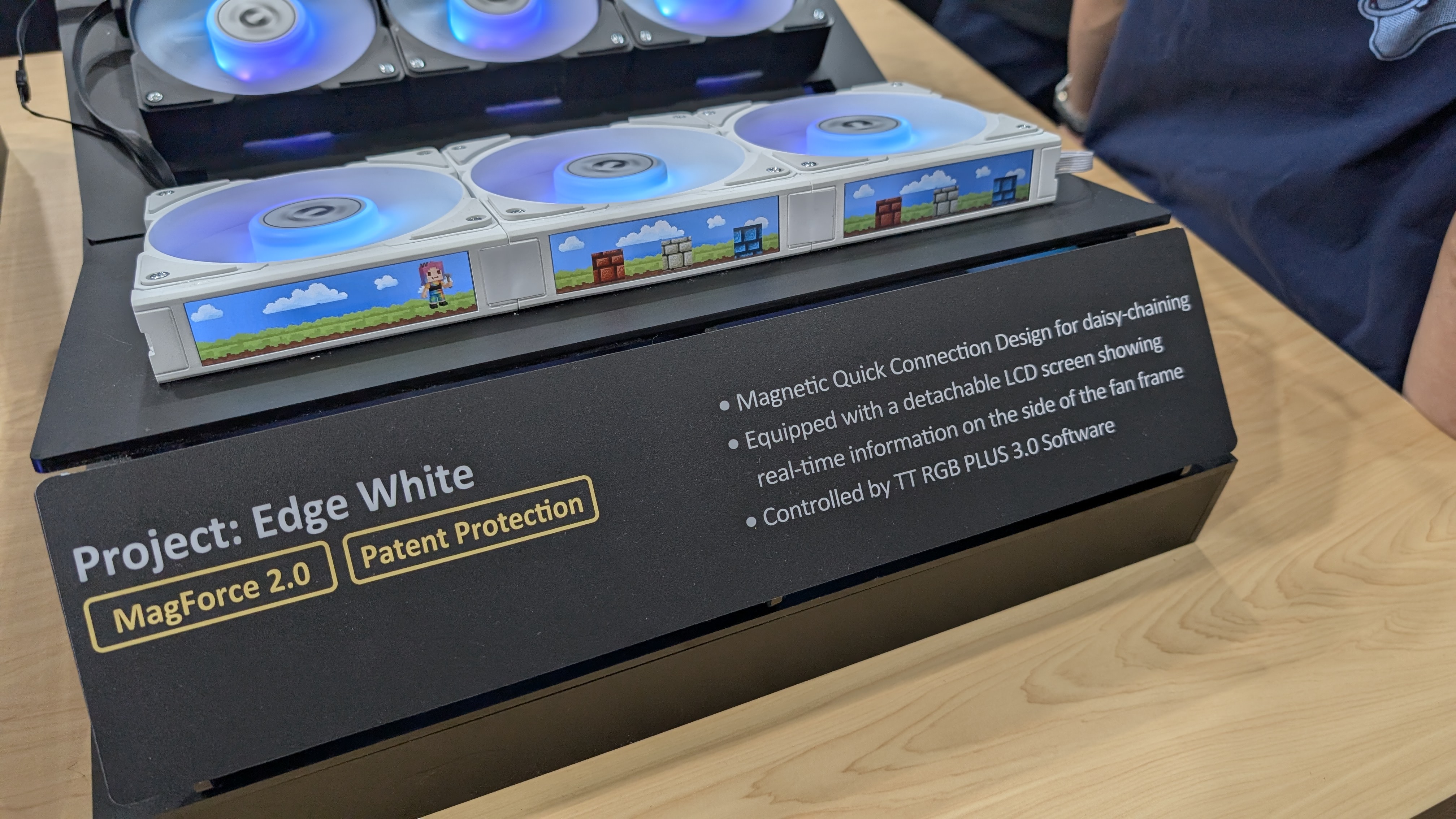


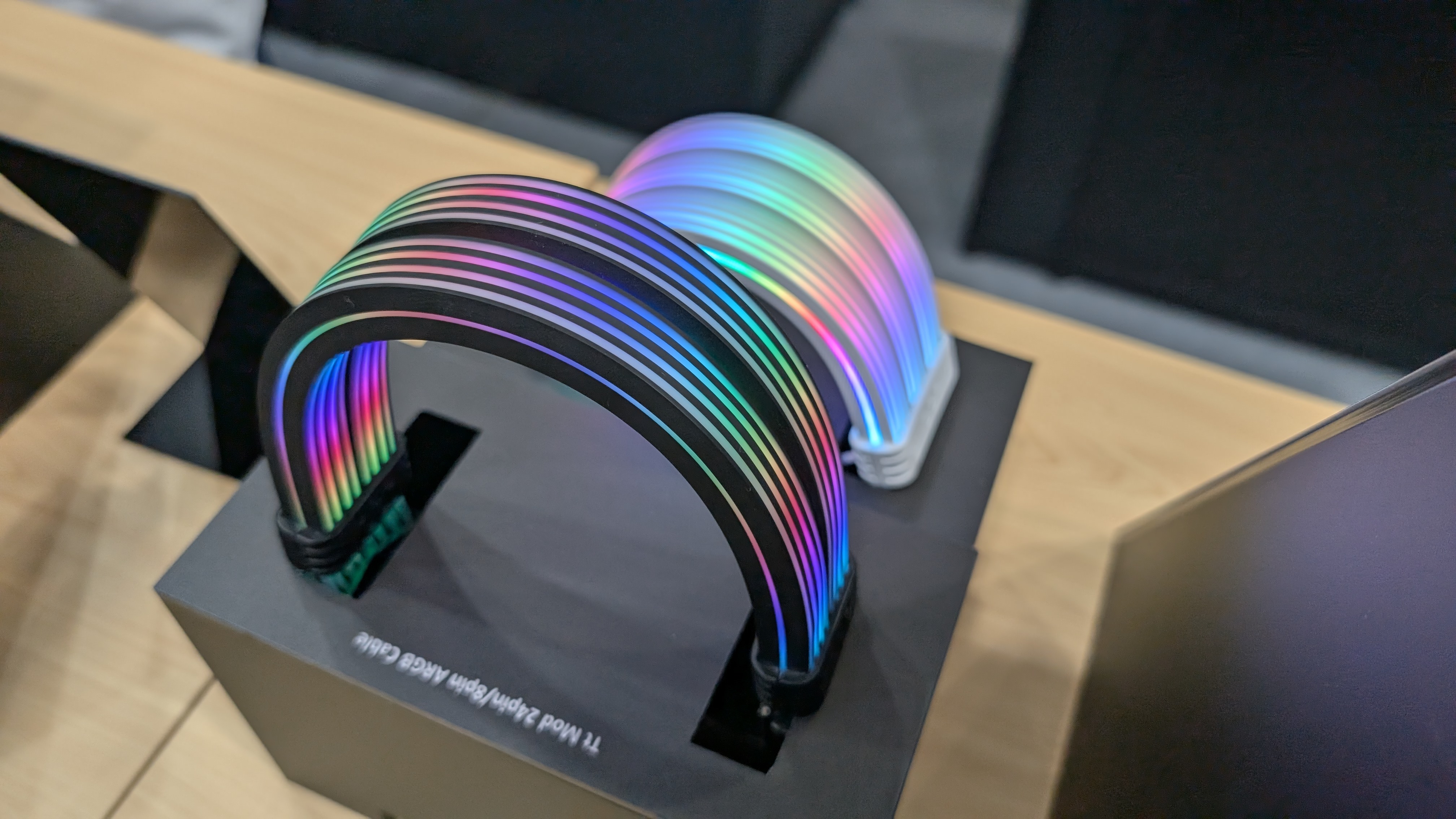
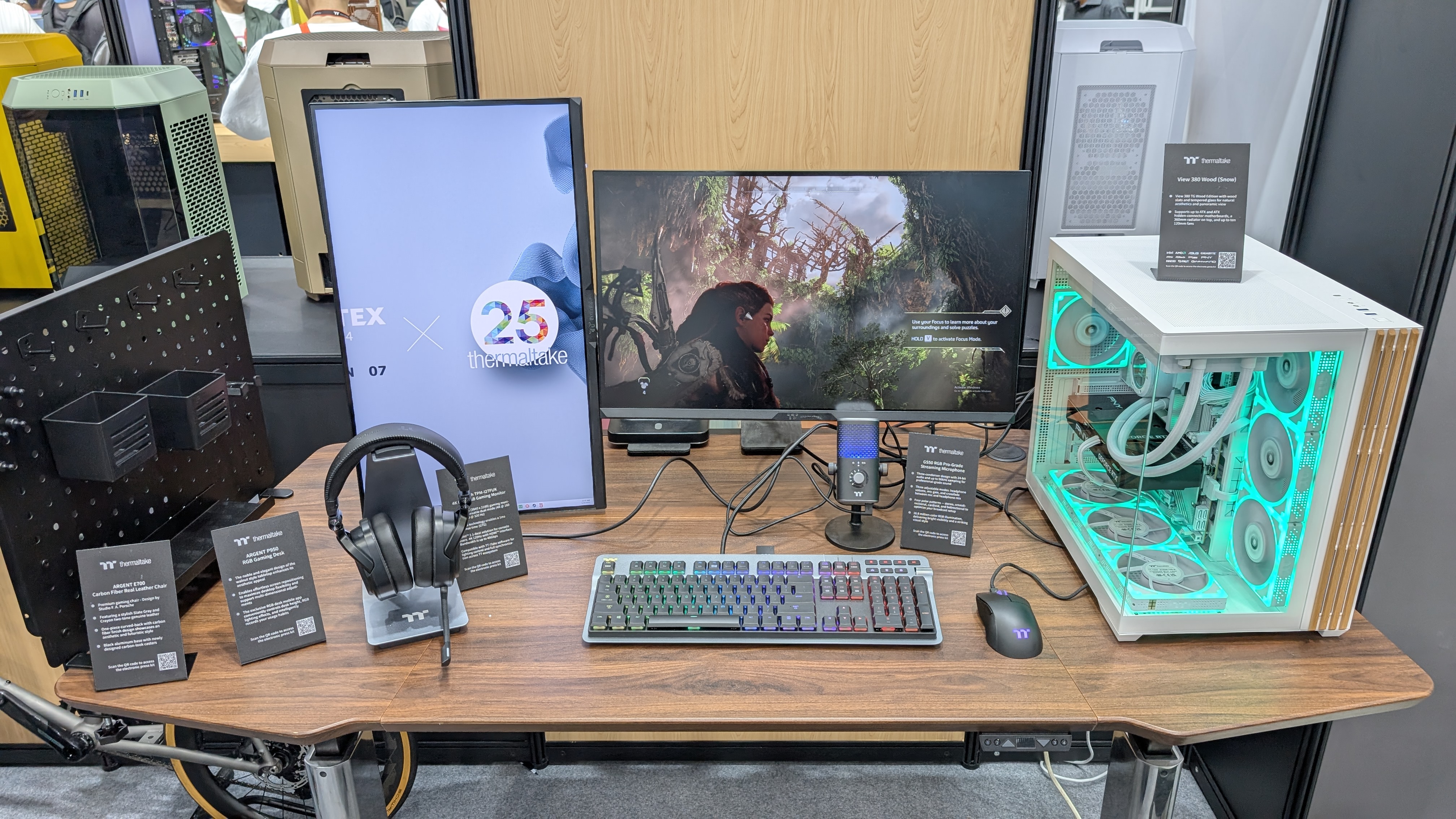


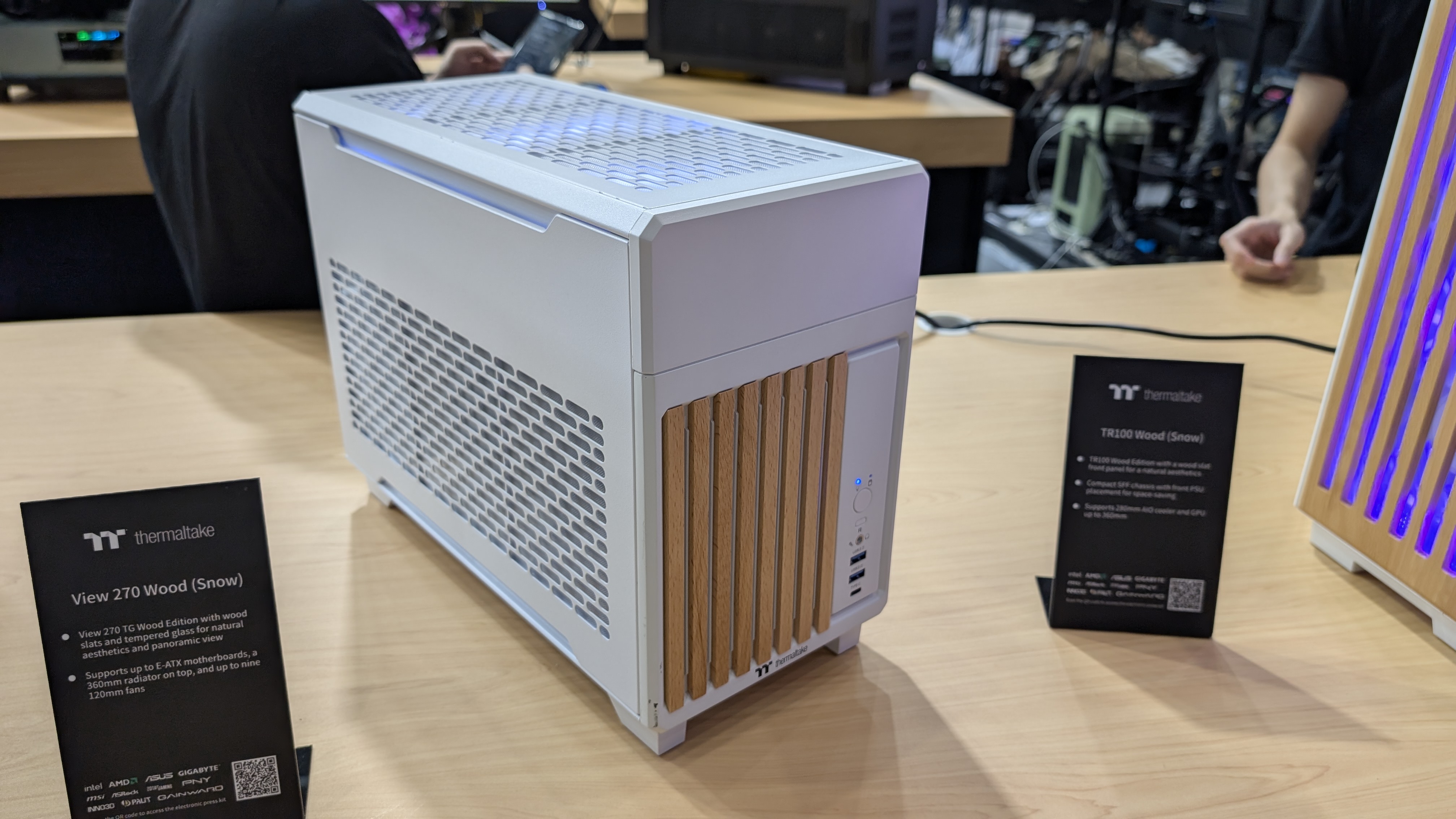
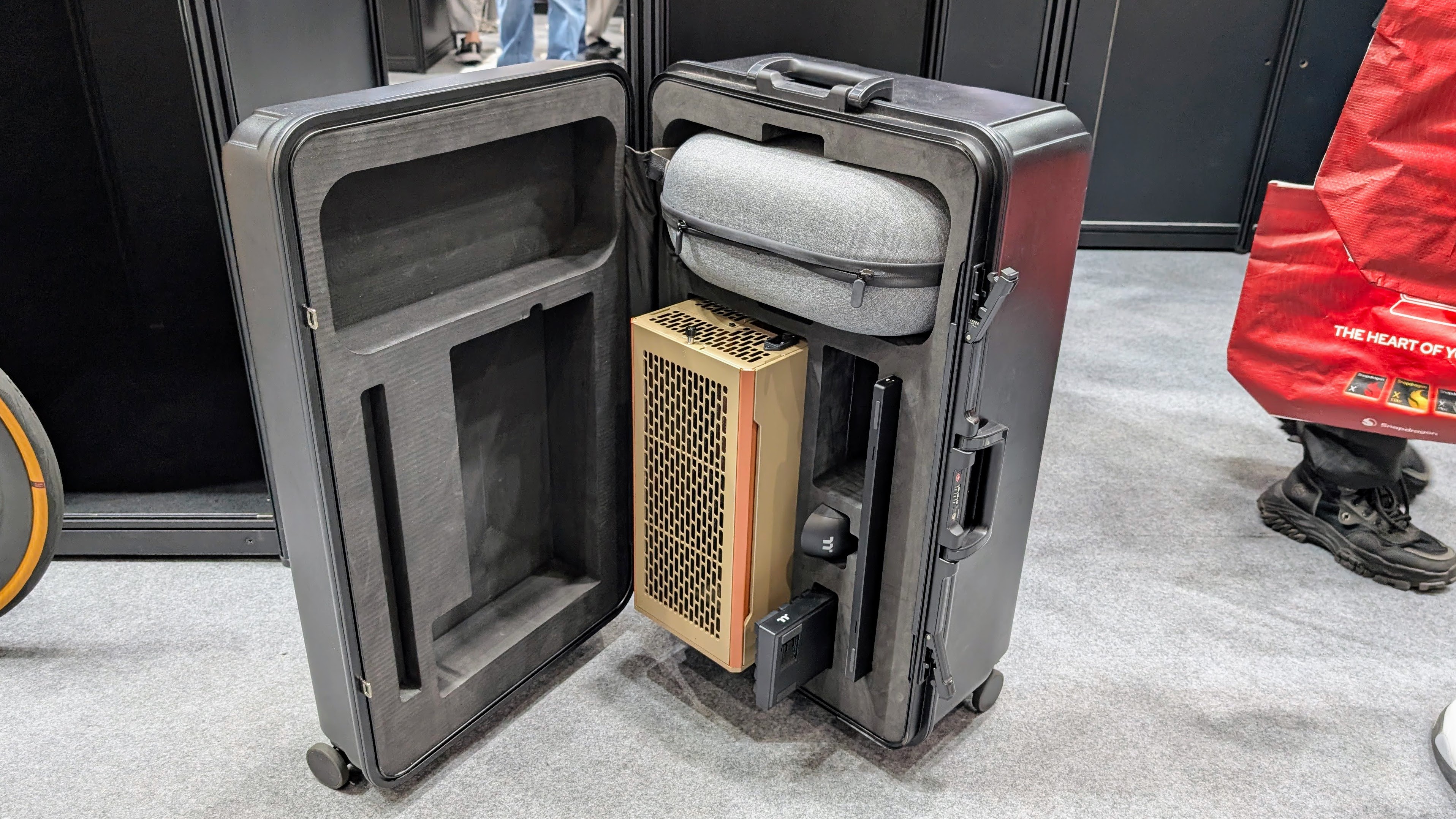
Power users will be pleased to see the Toughpower i2000W Platinum, with four PCIe Gen 5 connectors and live monitoring. For fans of small-form-factor machines, the Toughpower SFX Titanium delivers 1200W in a somewhat space-saving design.
Thermaltake also leaned hard into showing off sim racing with options on display like the GR700 Cockpit, GM9 6DOF Motion Platform, and the slightly more affordable G6 Racing Wheel Bundle. We only got to try a short stint in a racing sim, but now have to add it to our ever-growing list of needs.
Until next year...
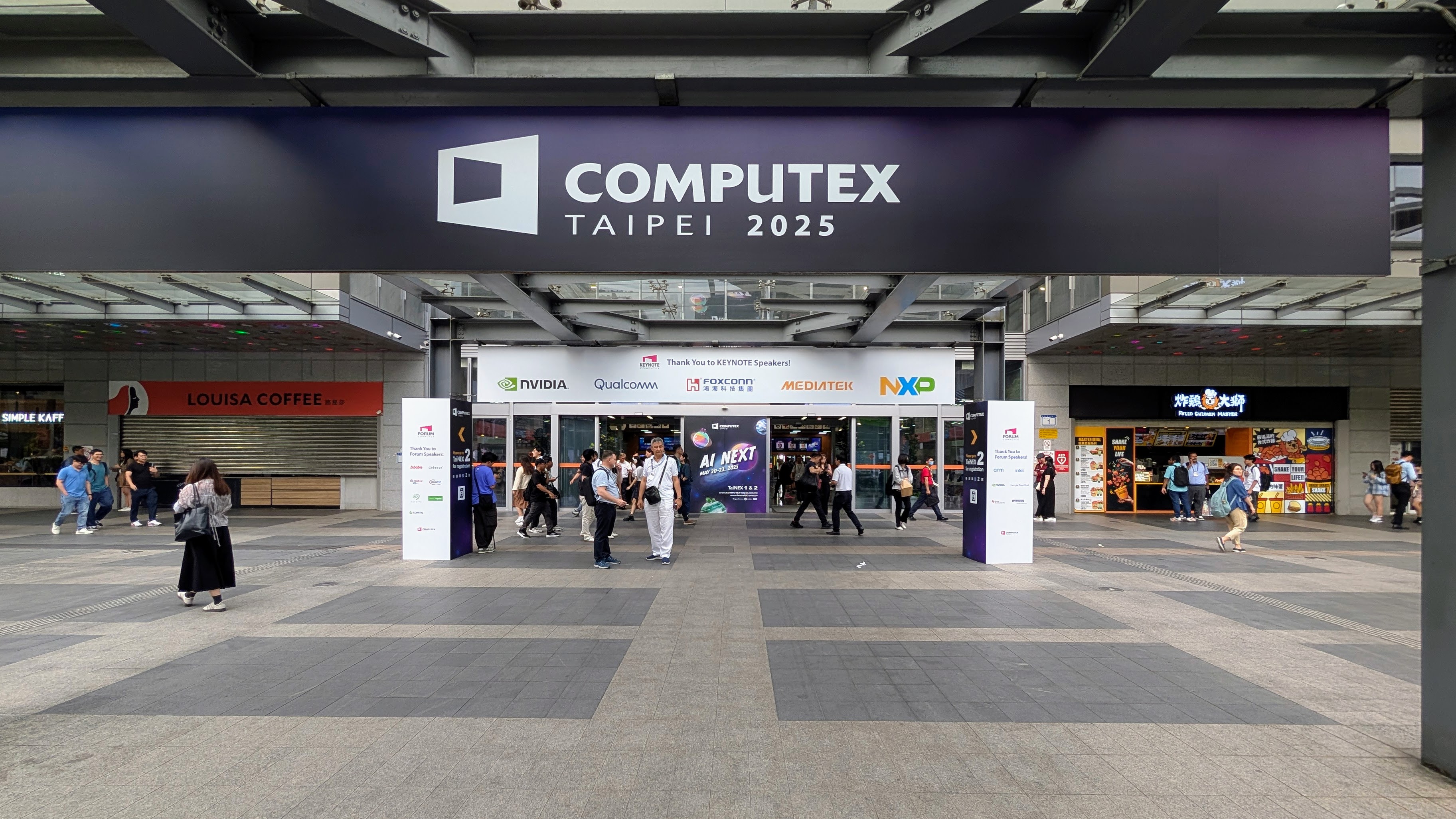
So there you have it, a recap of our favourite tech from Computex 2025 along with some new photos. There was plenty more on display that we didn’t get to, so be sure to check out our full Computex 2025 coverage if you want to dive deeper into the best tech this year.
TechRadar Australia flew to Computex 2025 courtesy of MSI Components, Corsair and Synology.

Lindsay is an Australian tech journalist who loves nothing more than rigorous product testing and benchmarking. He is especially passionate about portable computing, doing deep dives into the USB-C specification or getting hands on with energy storage, from power banks to off grid systems. In his spare time Lindsay is usually found tinkering with an endless array of projects or exploring the many waterways around Sydney.
You must confirm your public display name before commenting
Please logout and then login again, you will then be prompted to enter your display name.